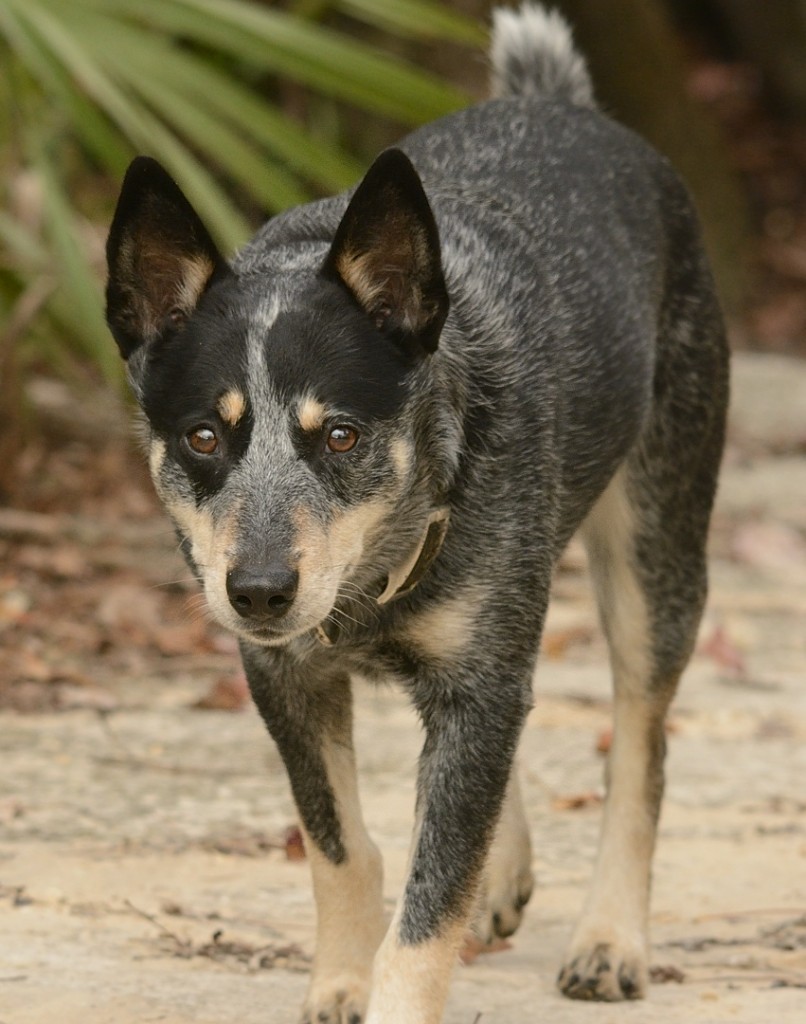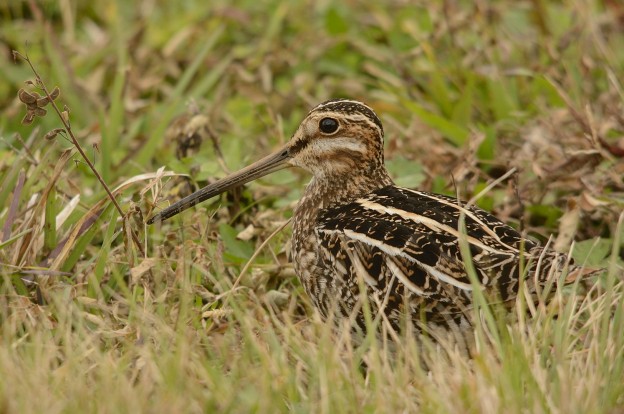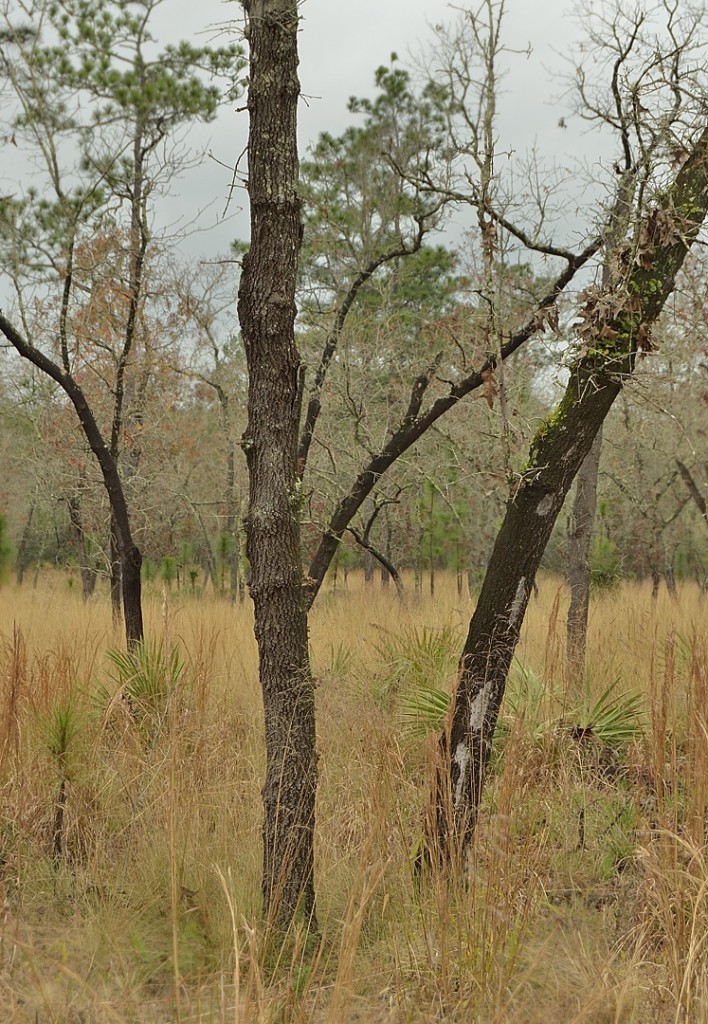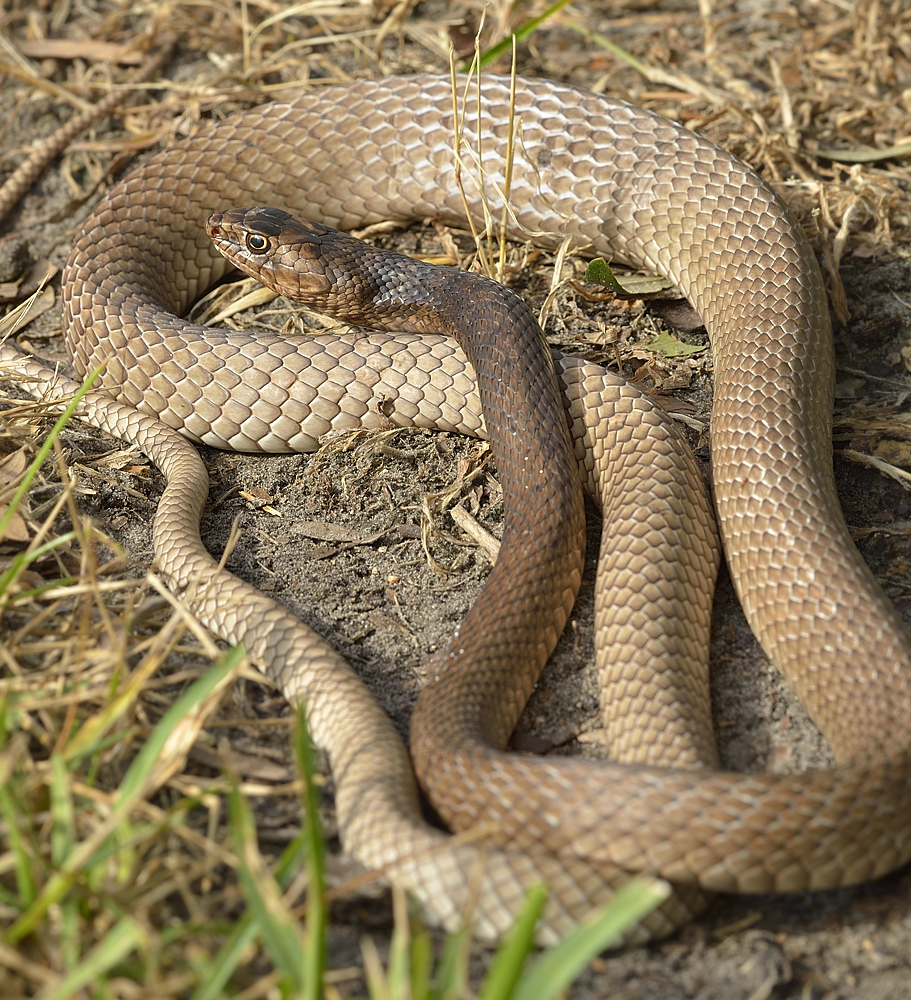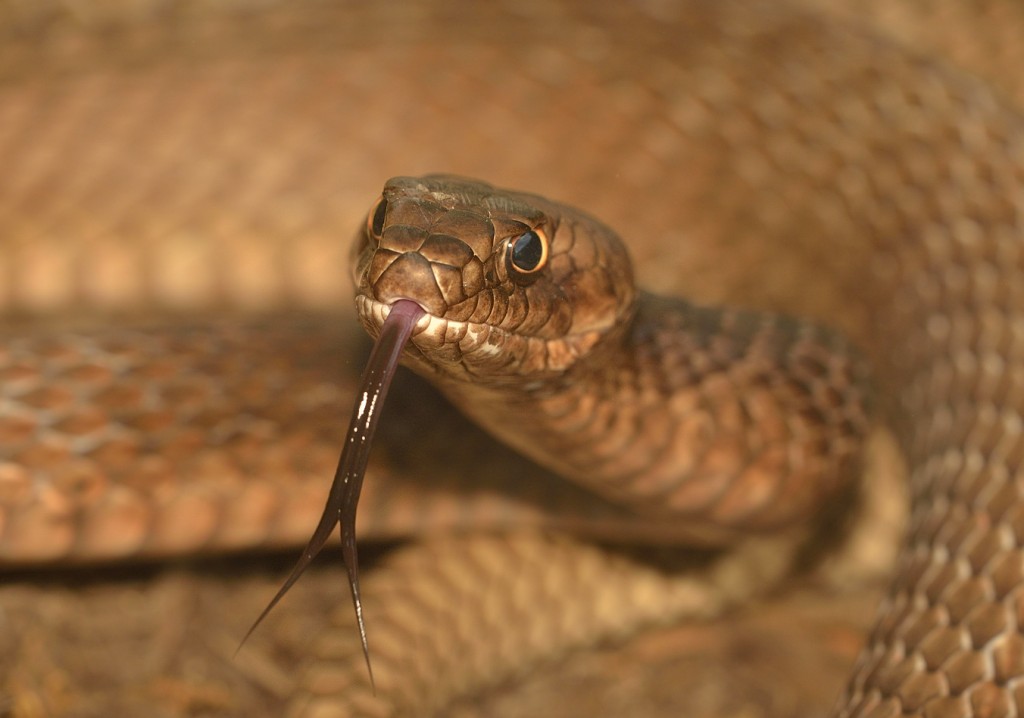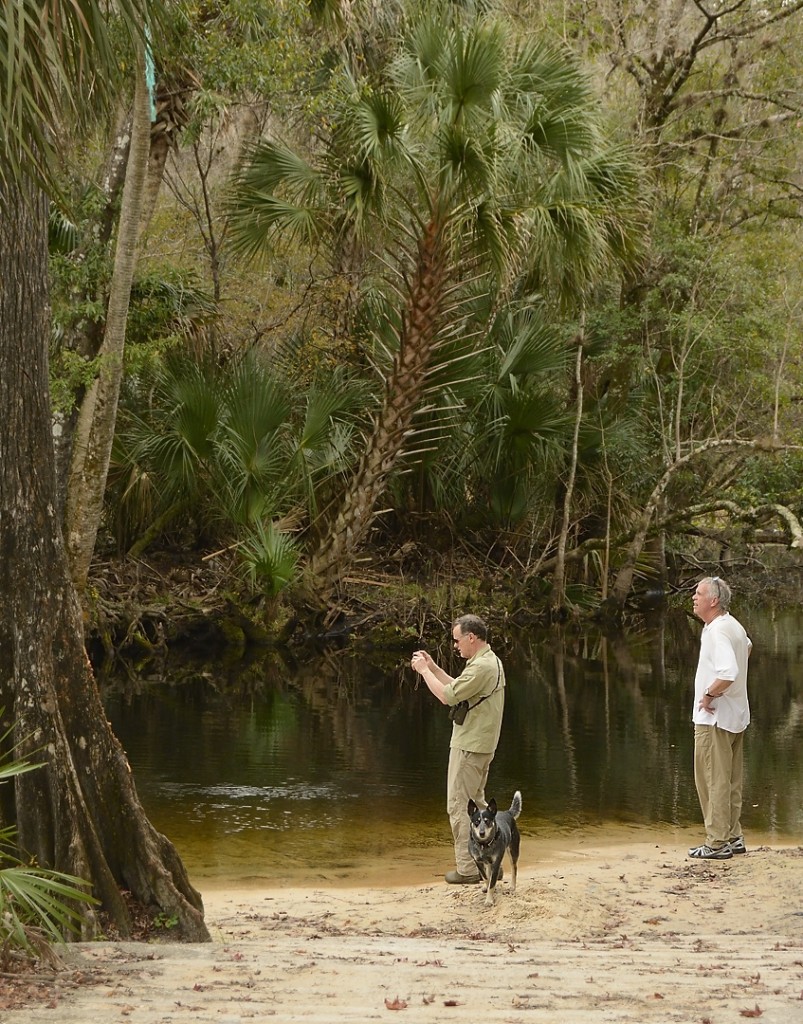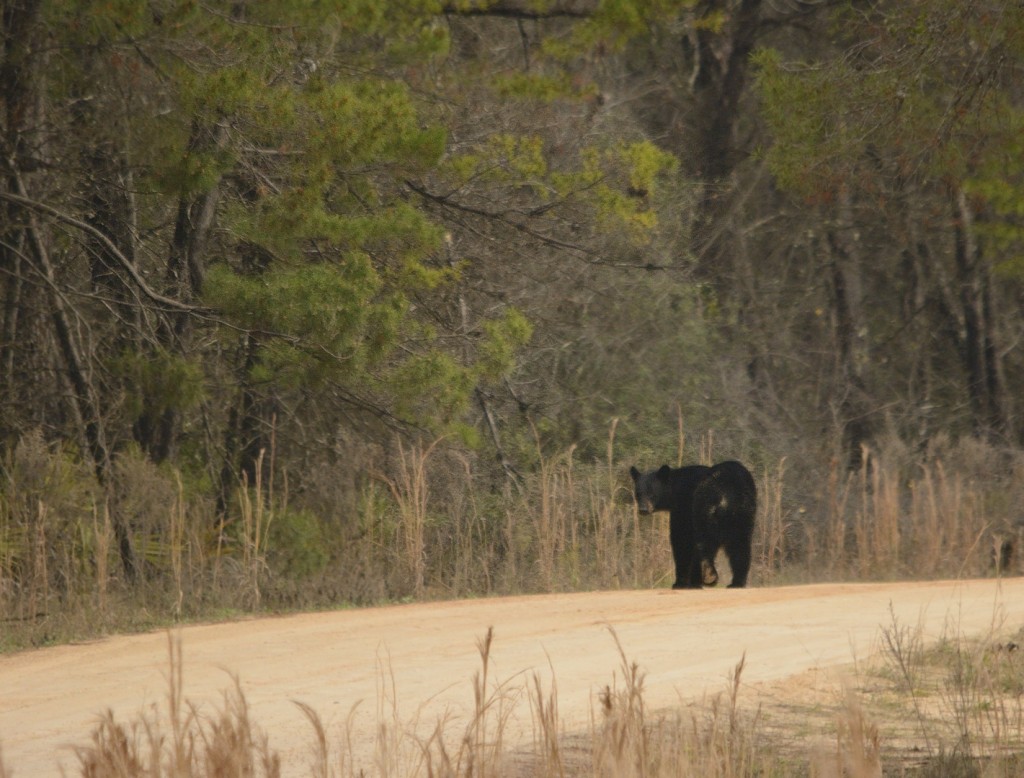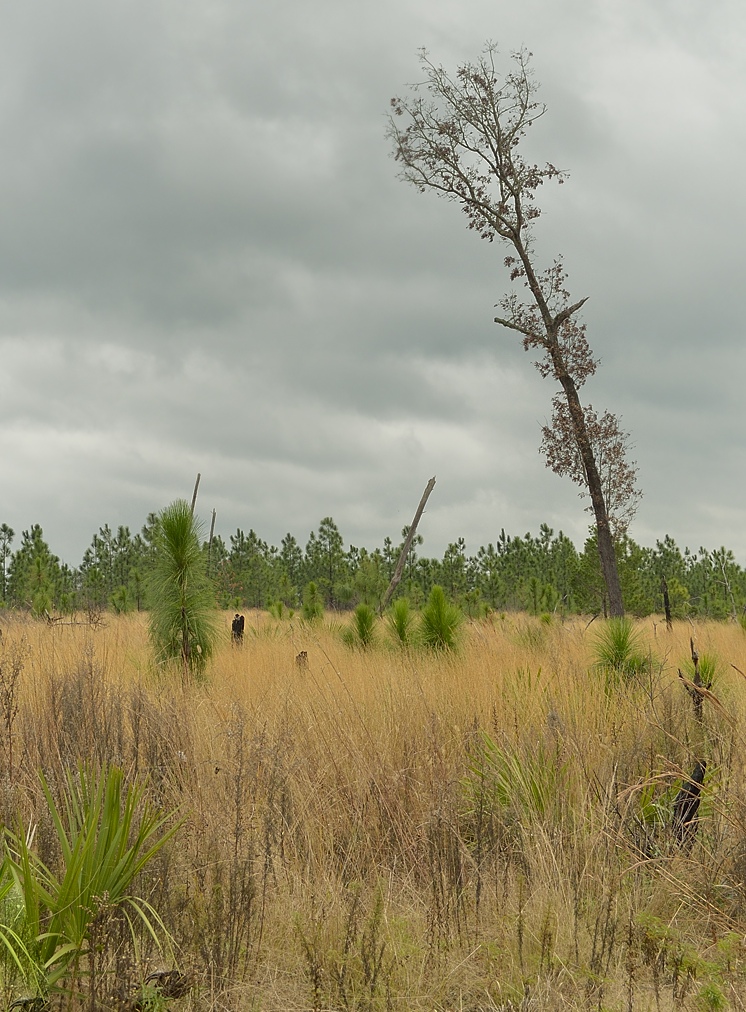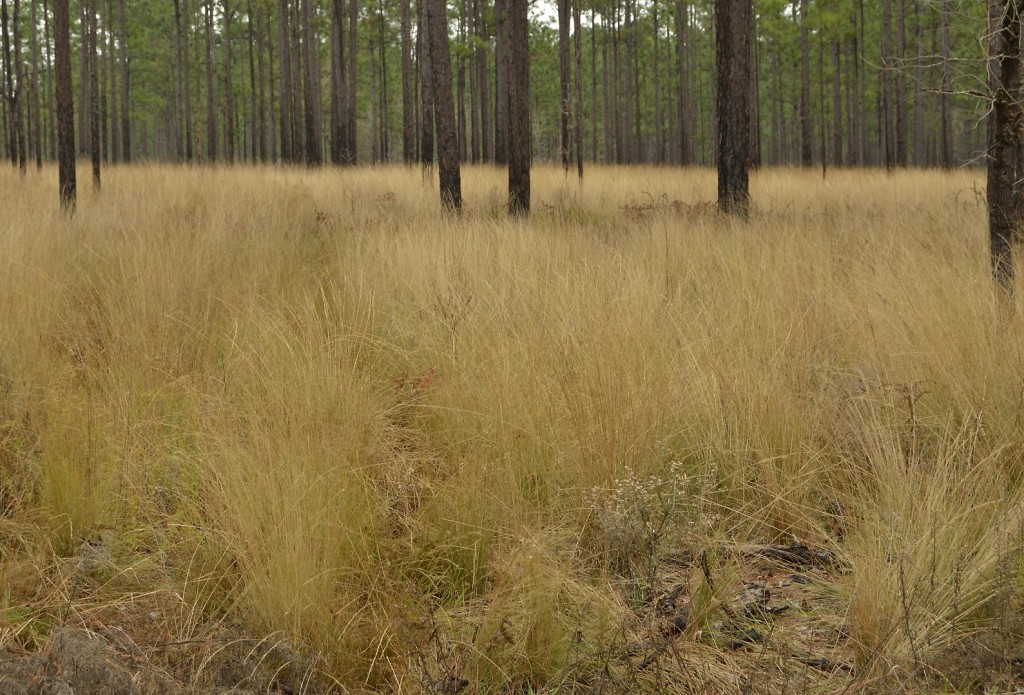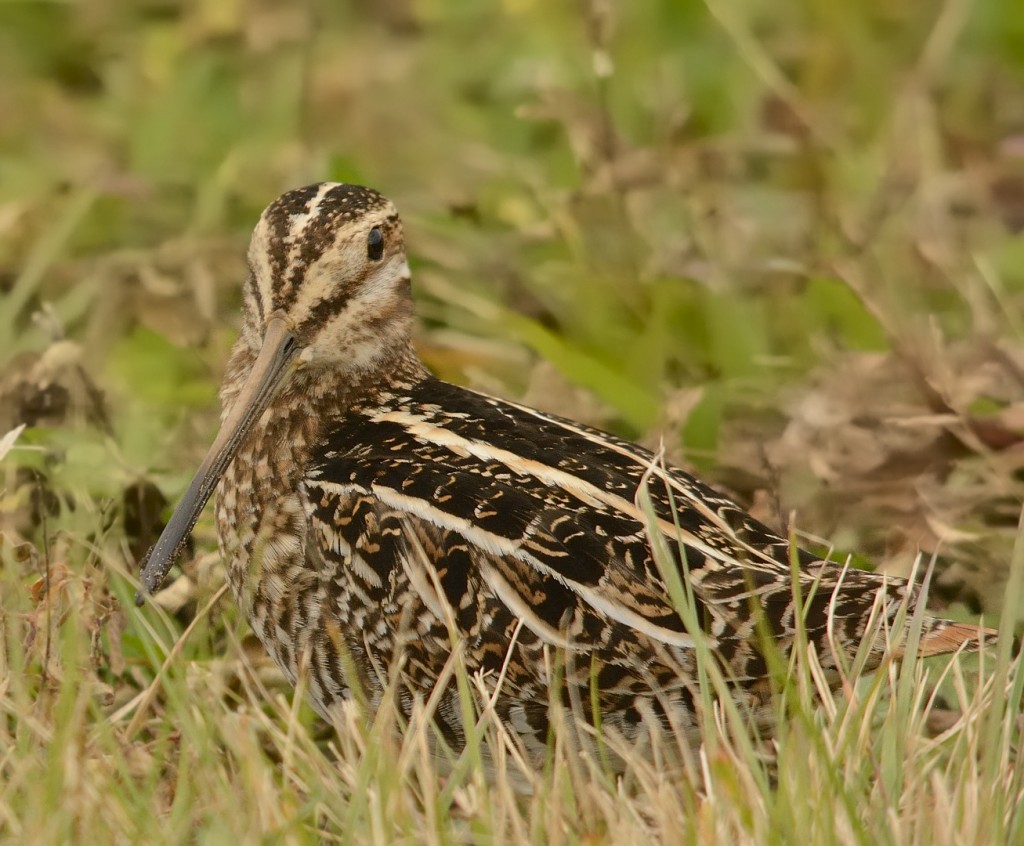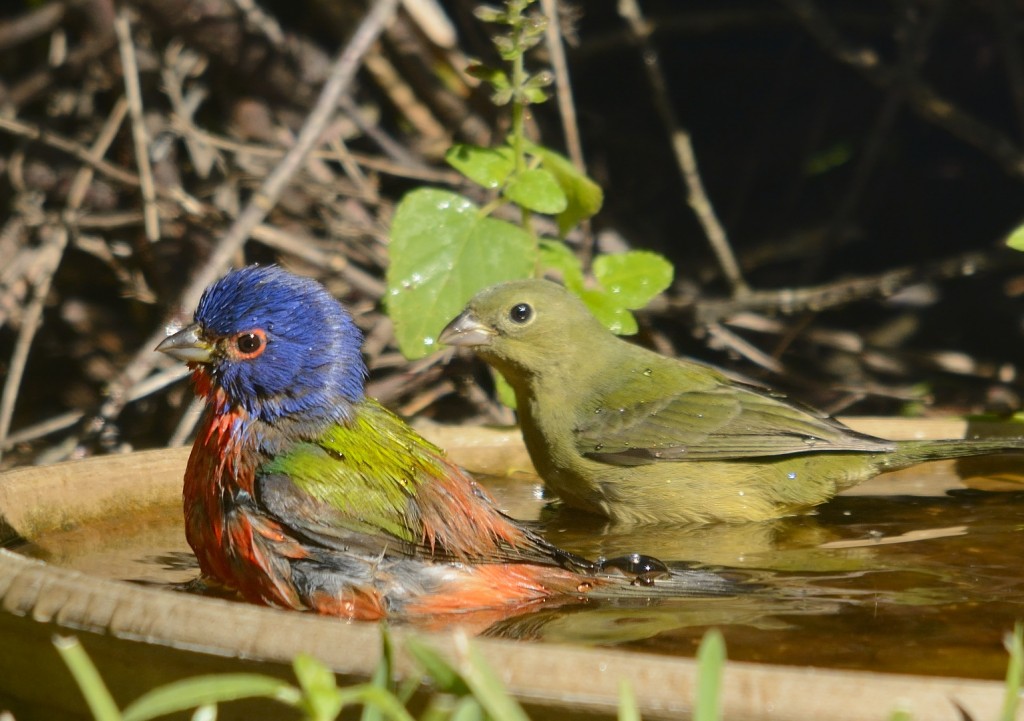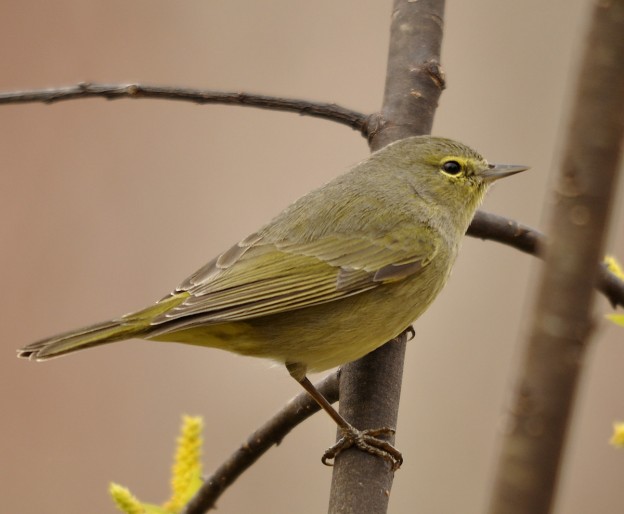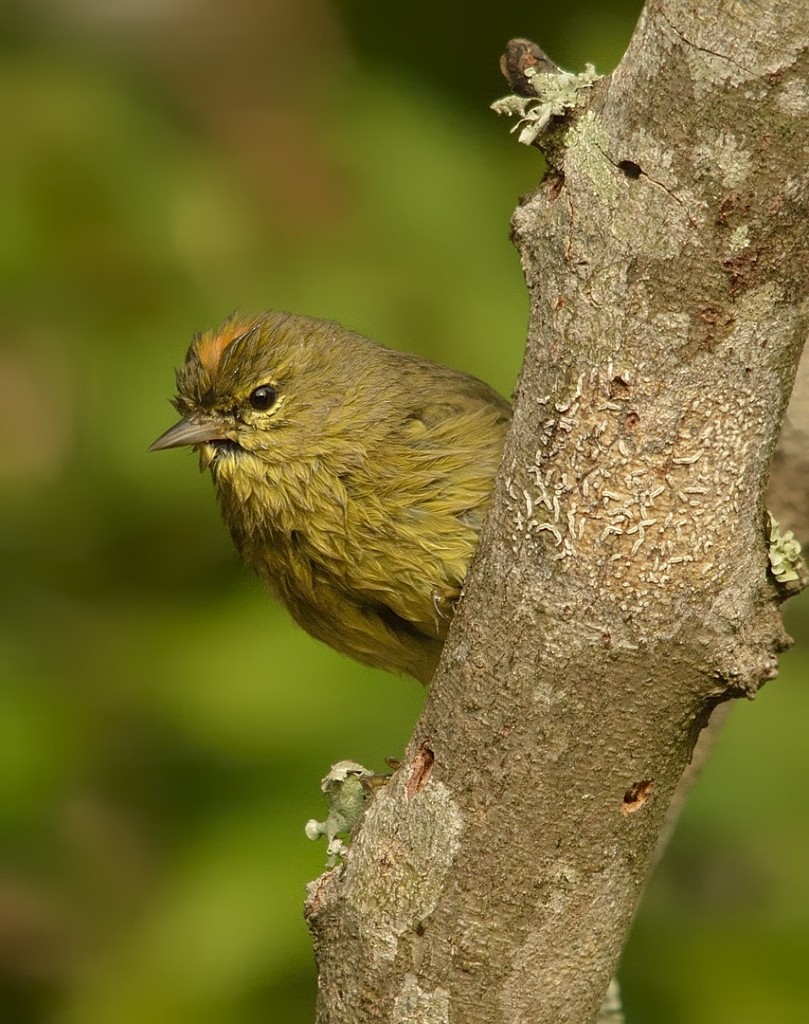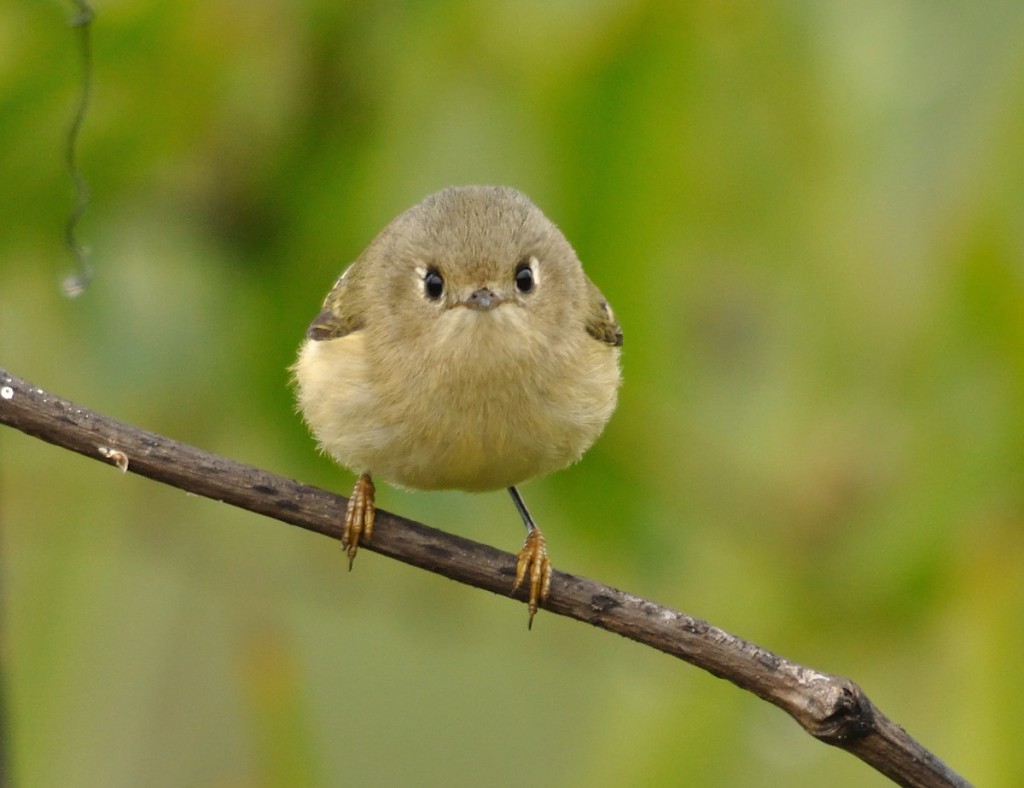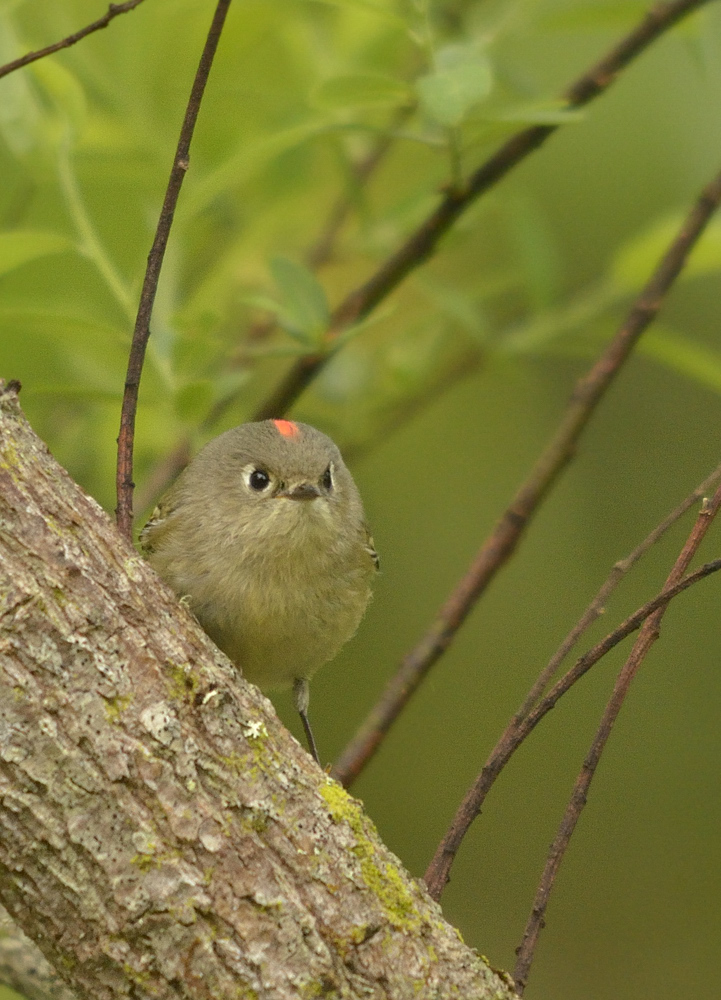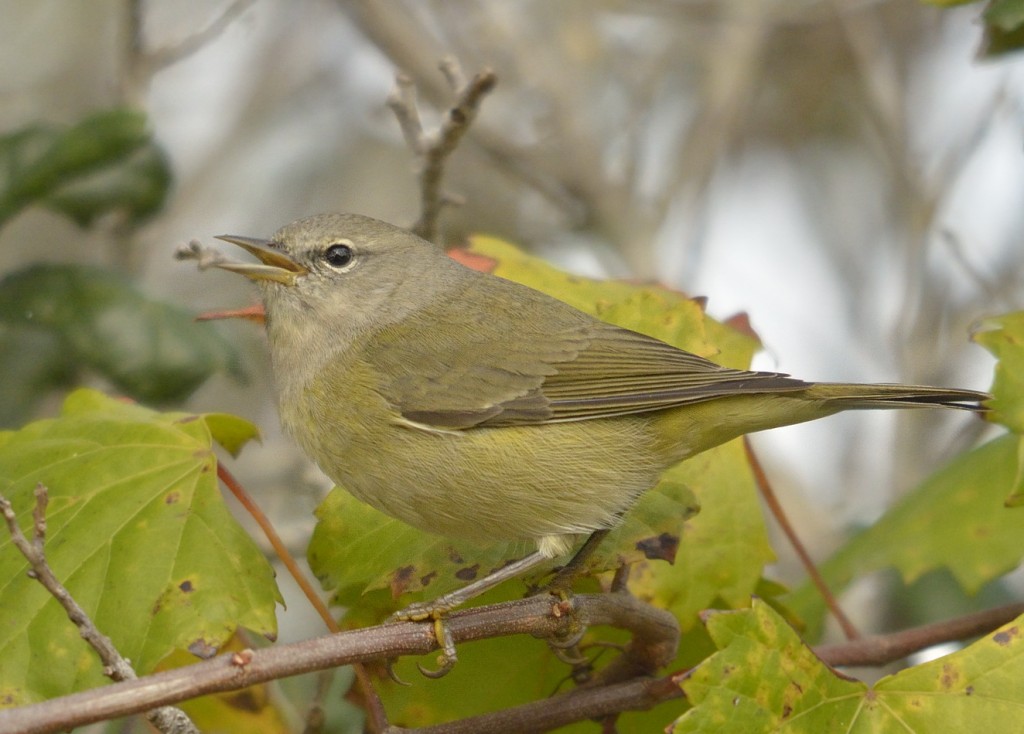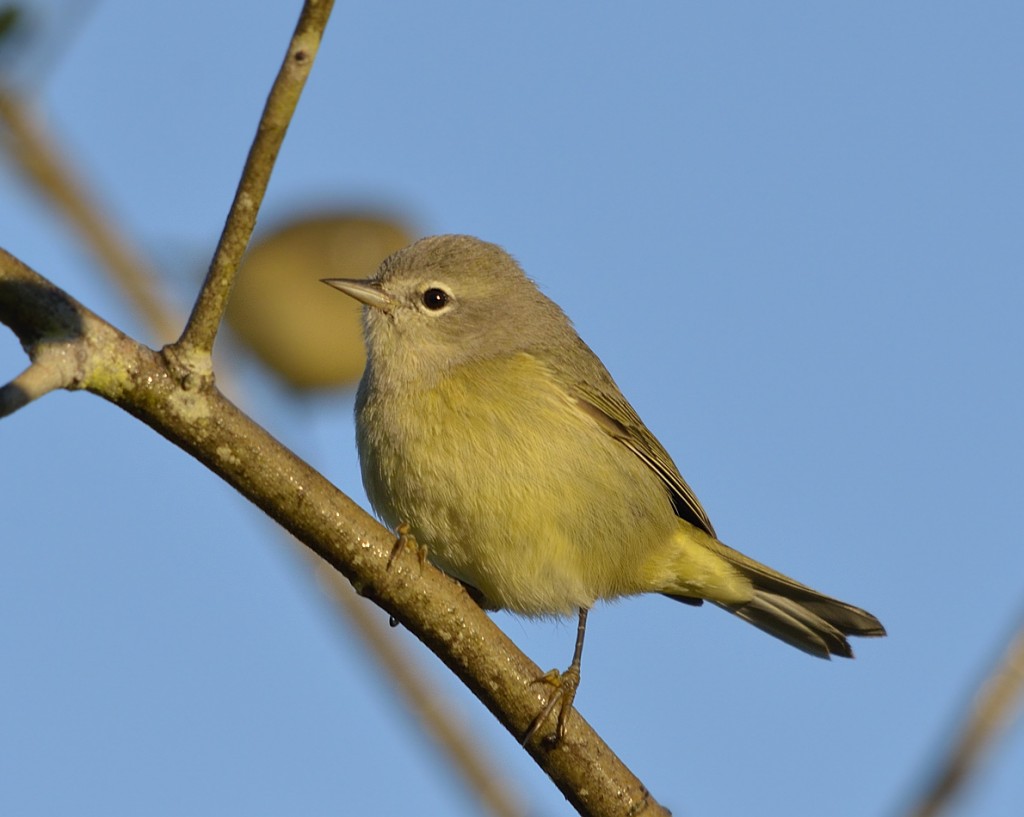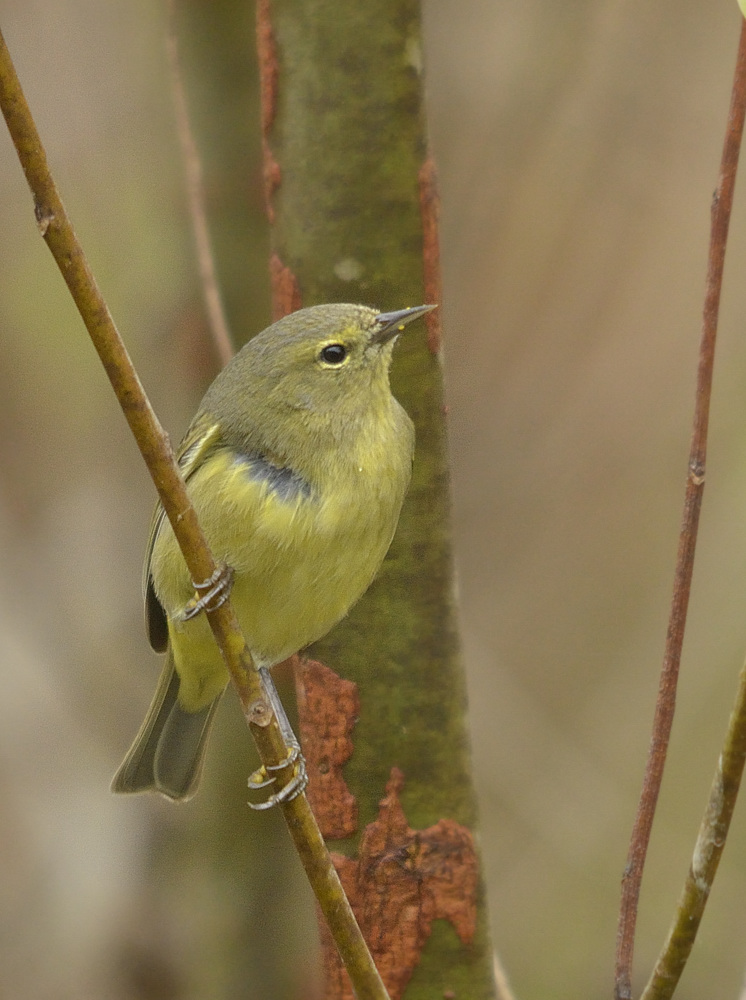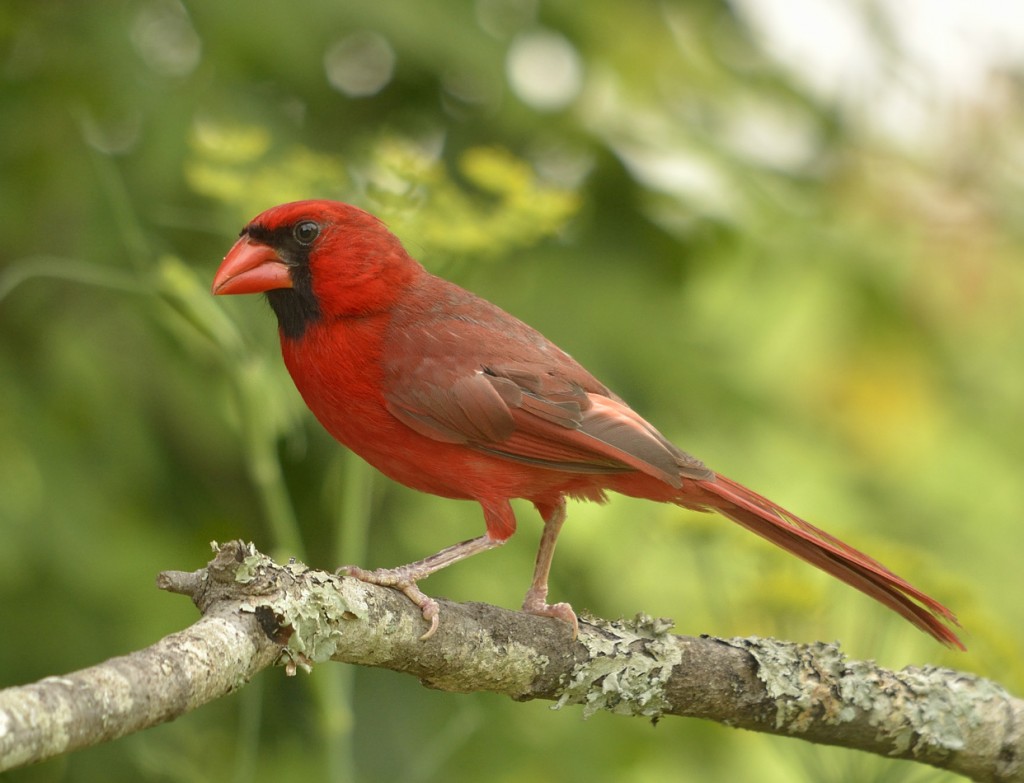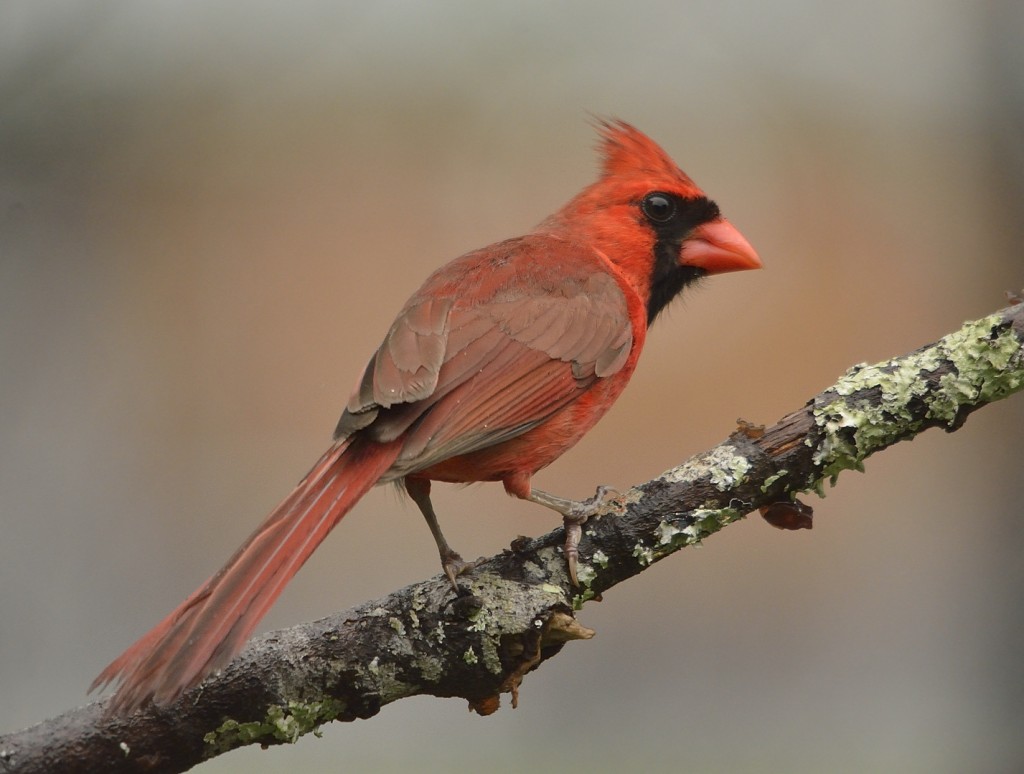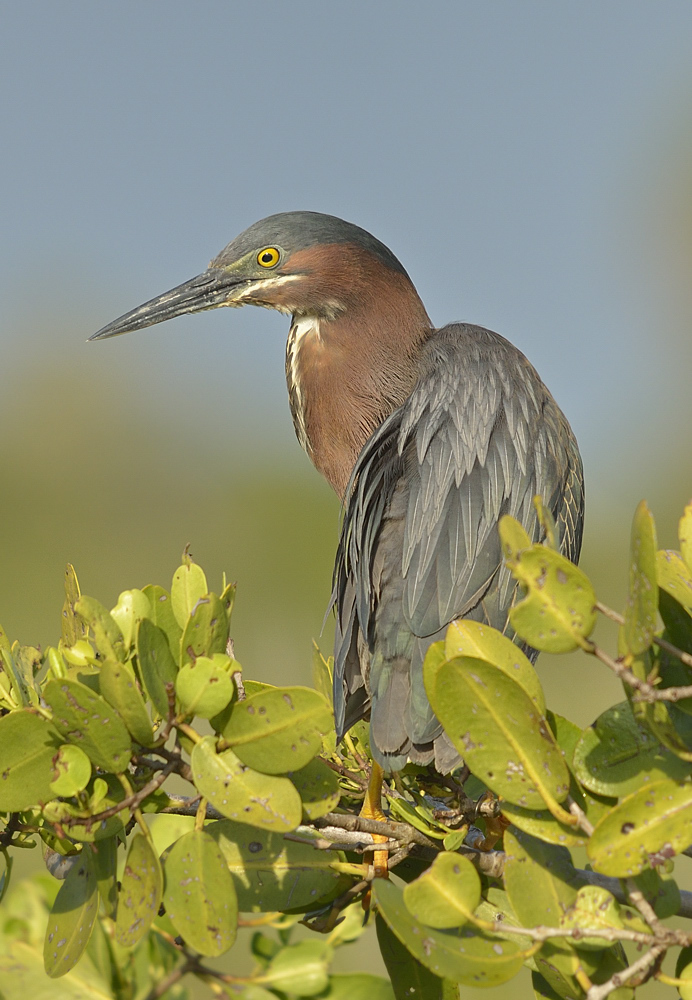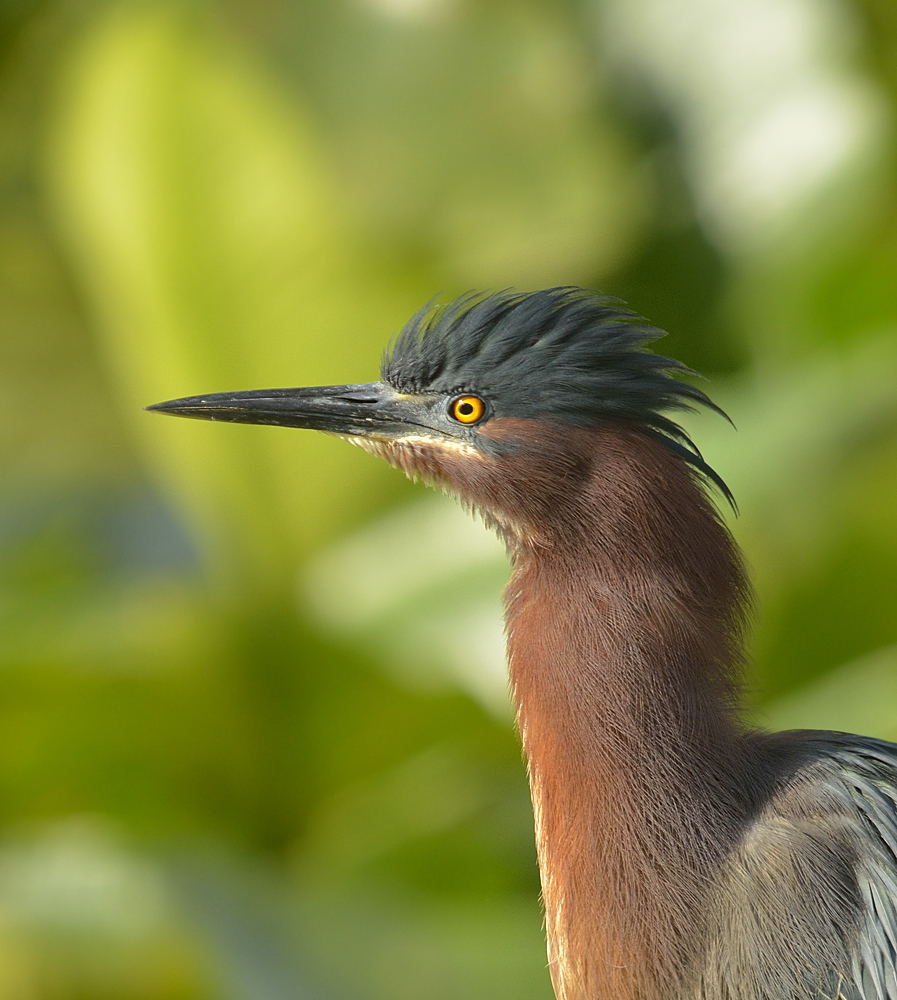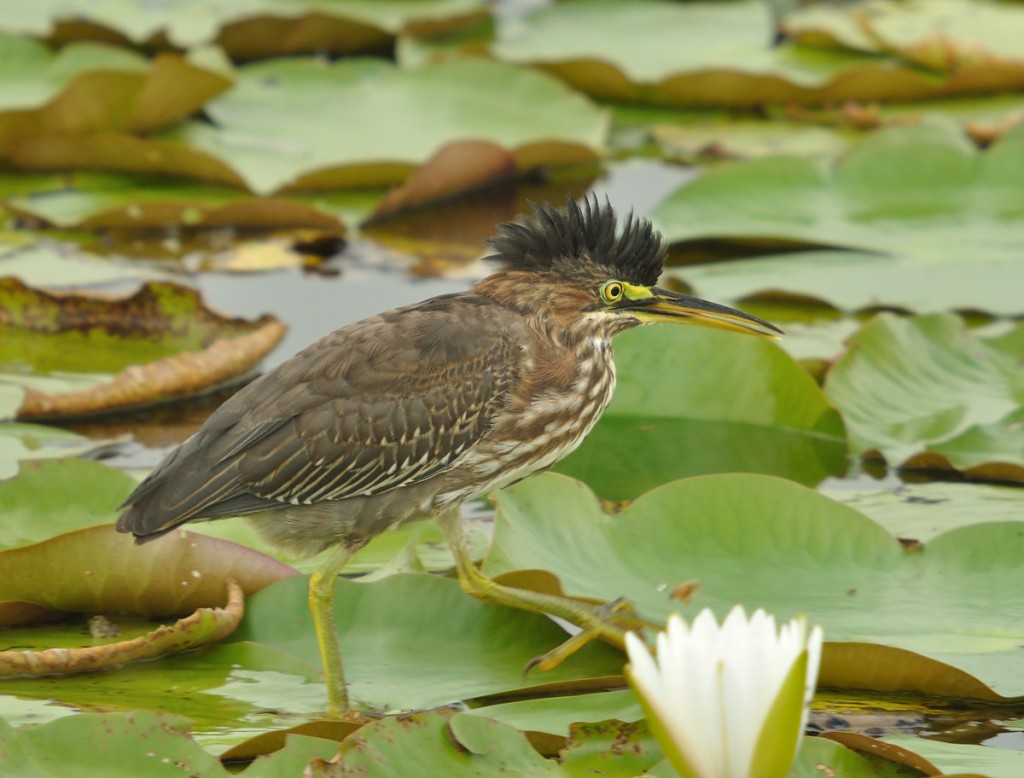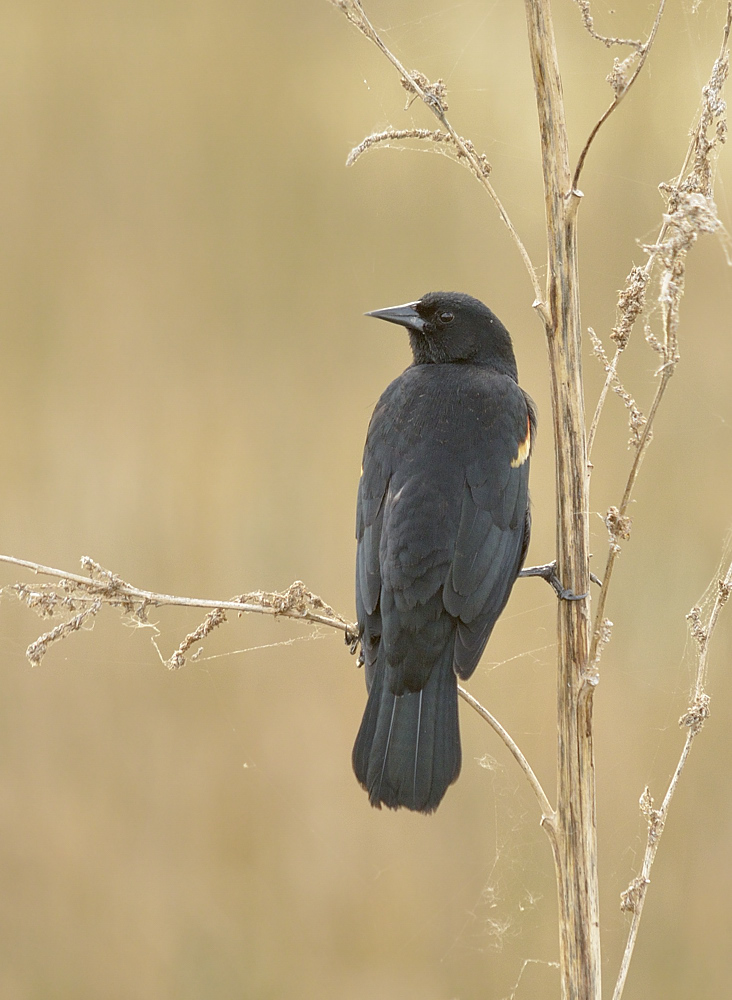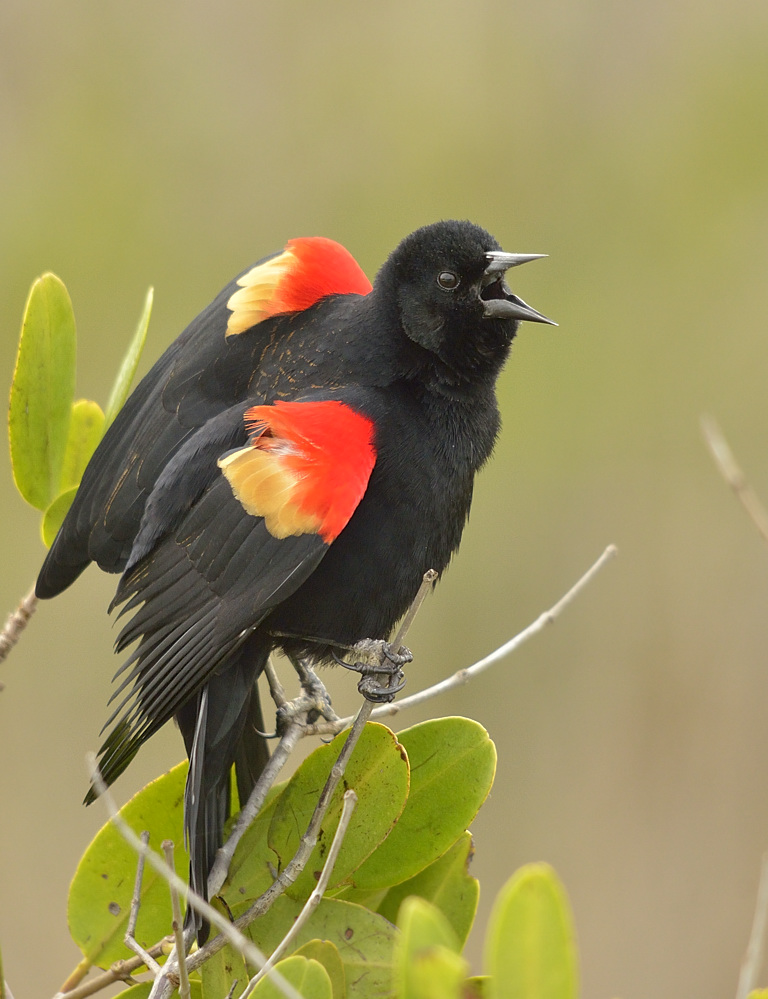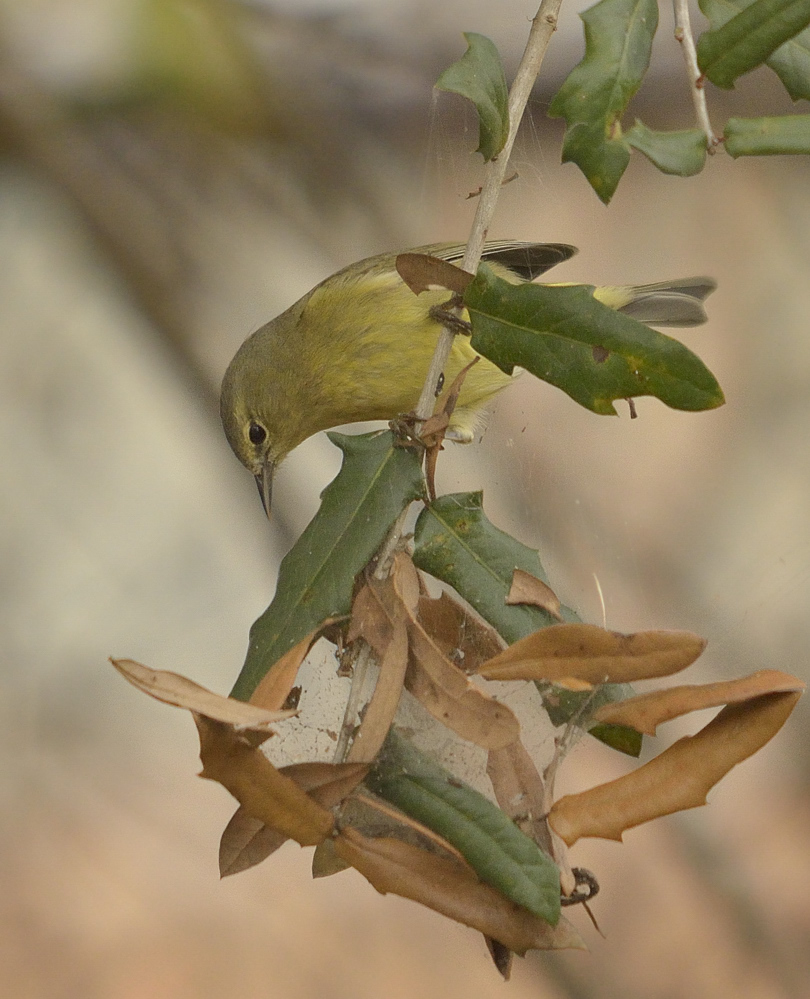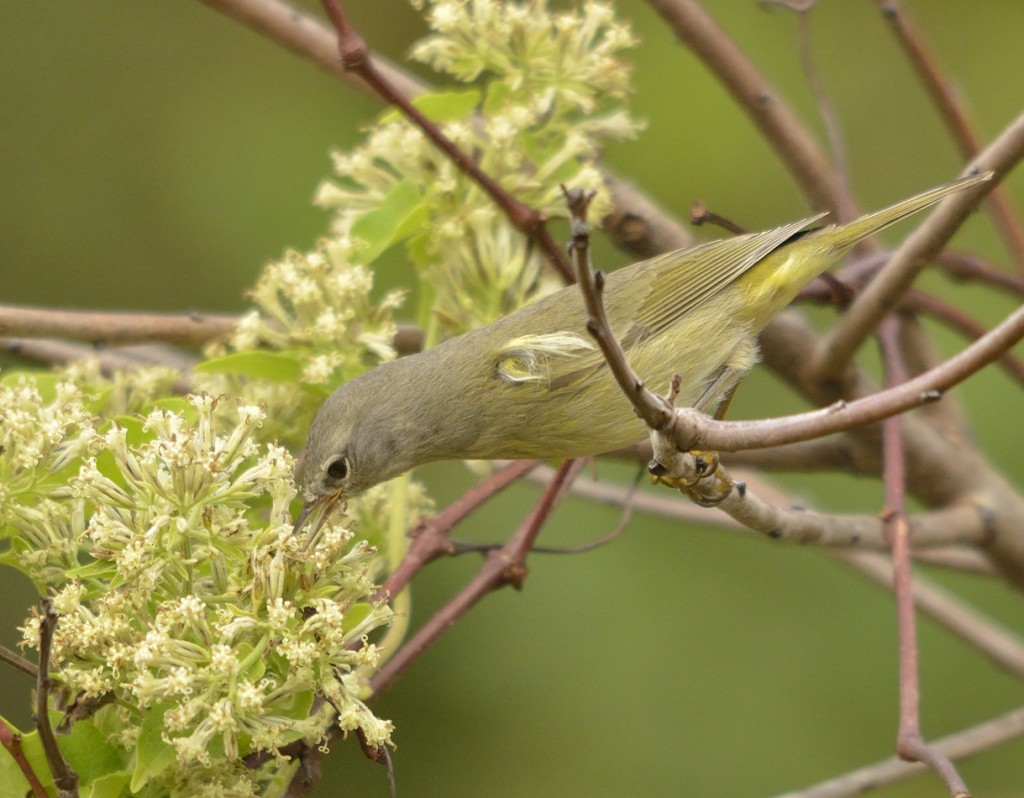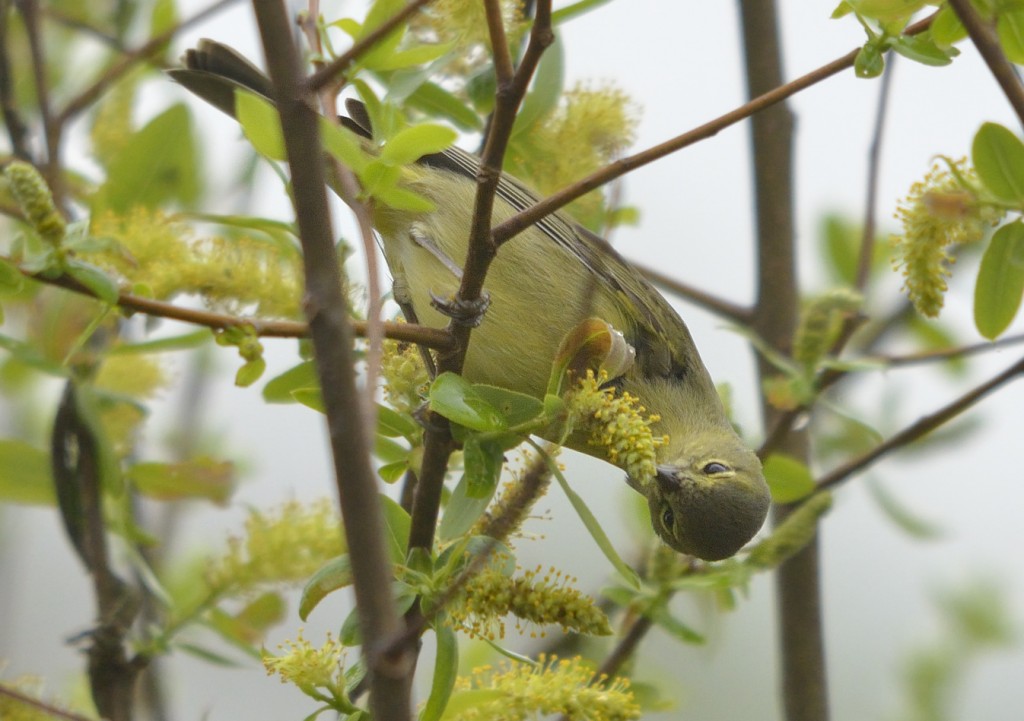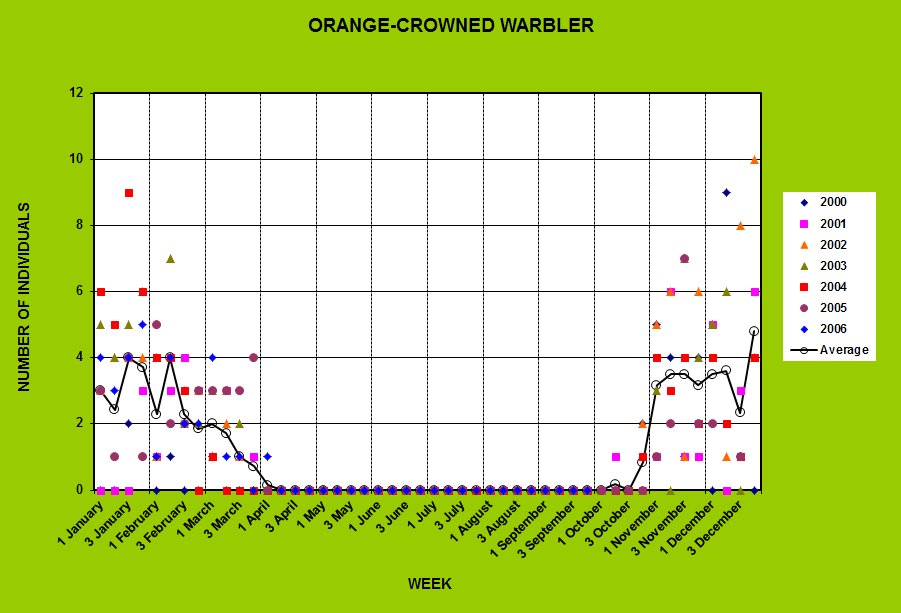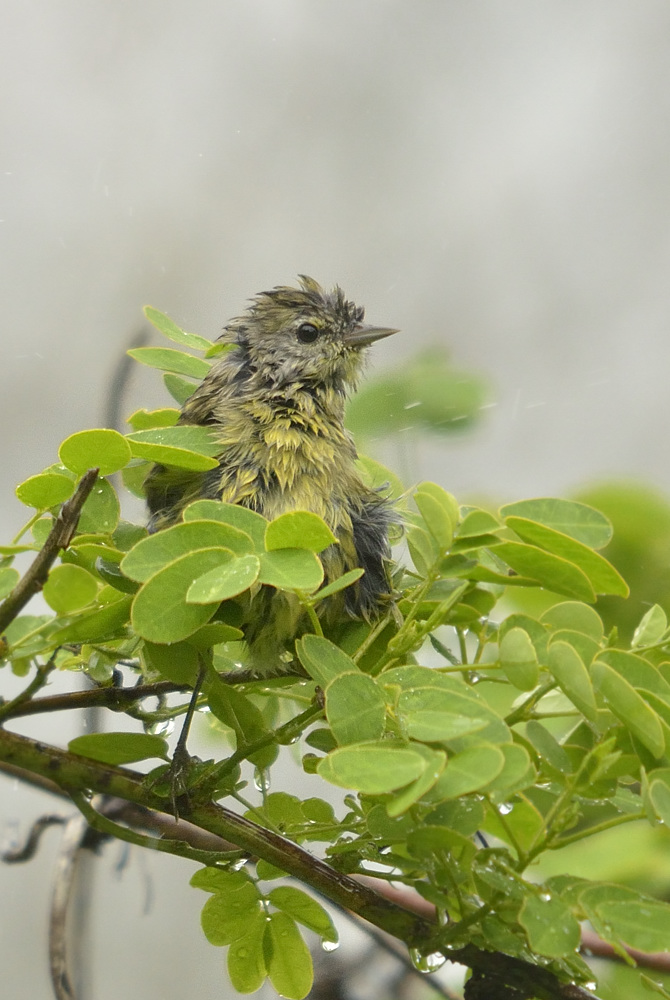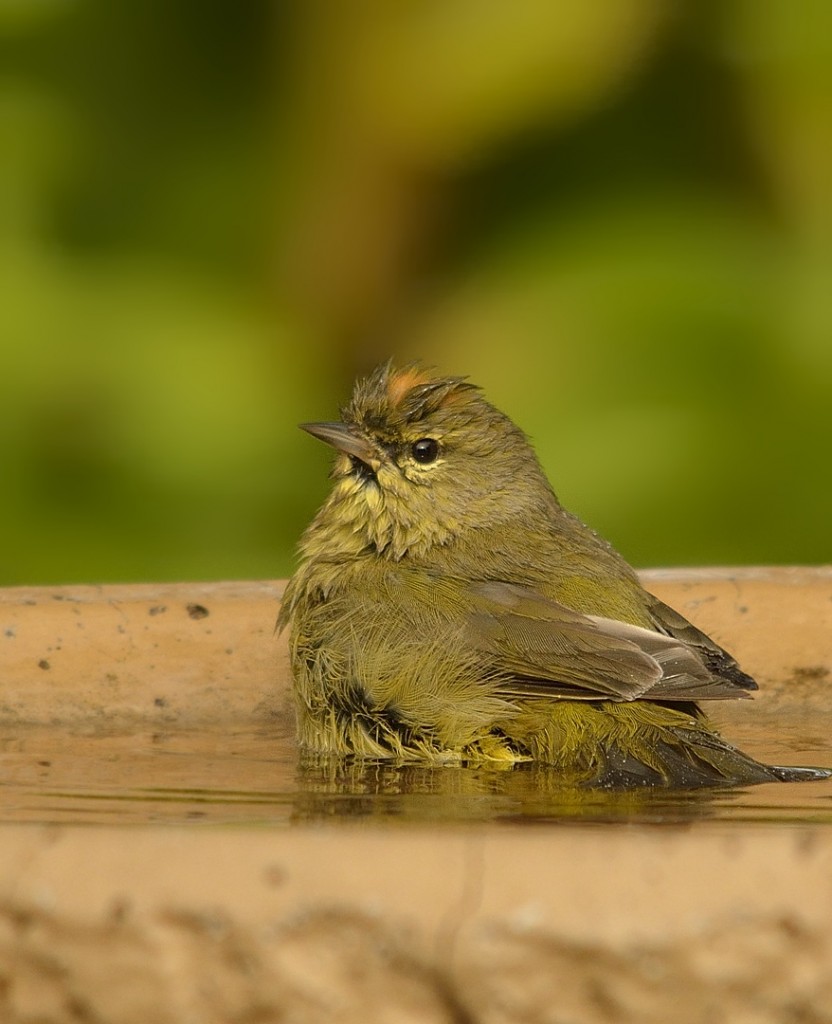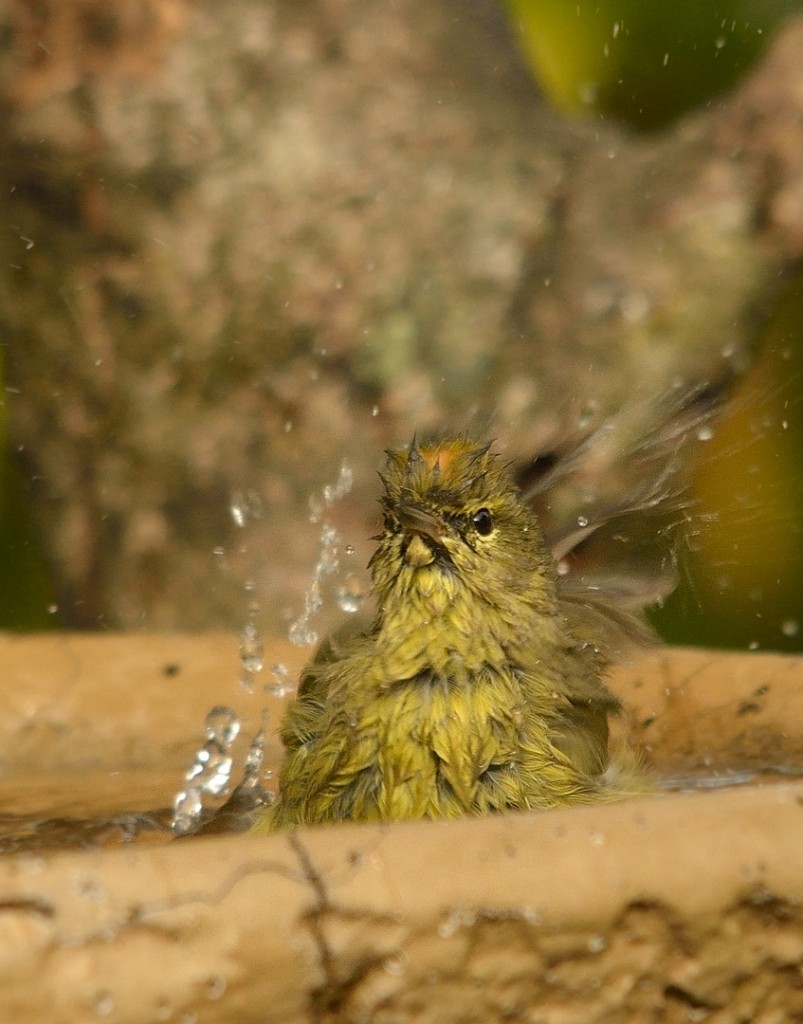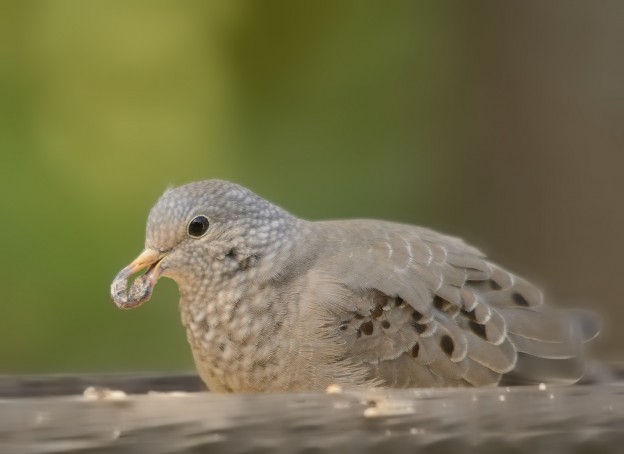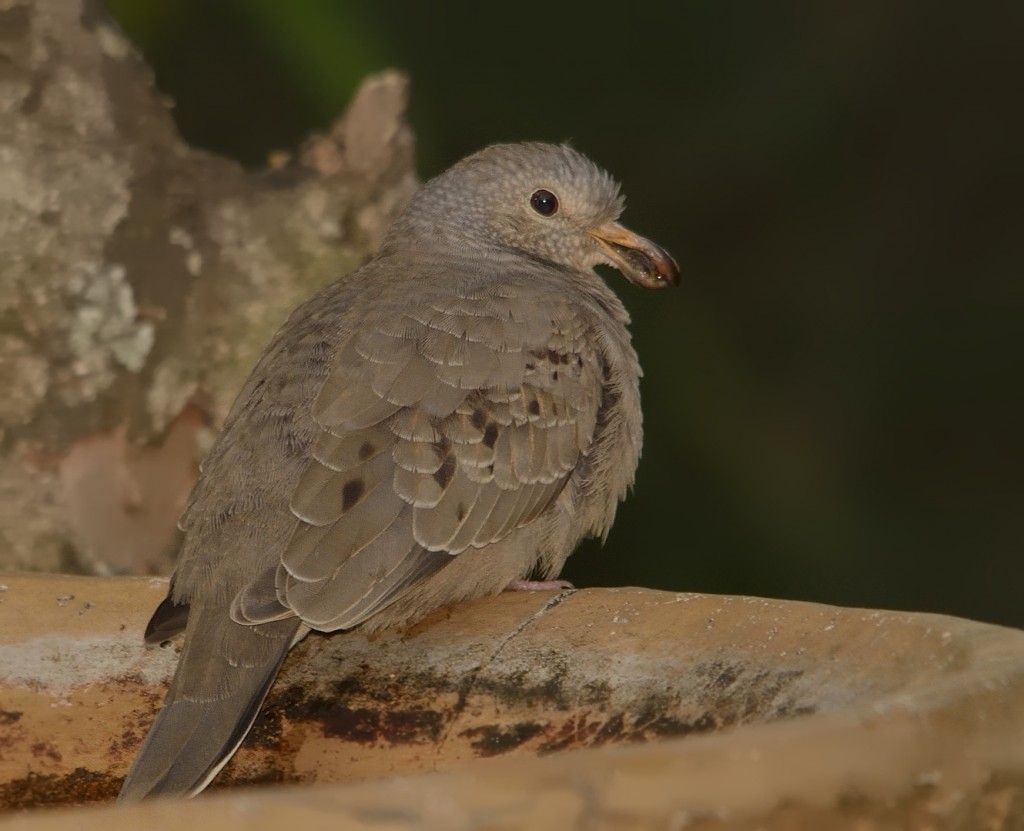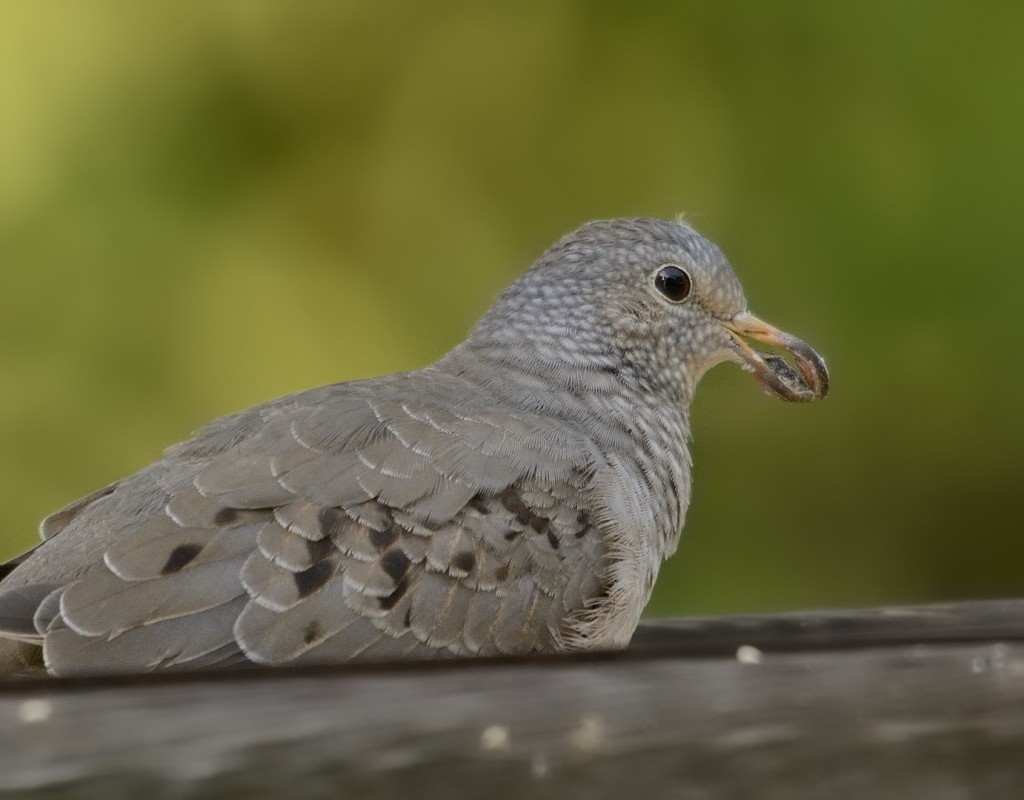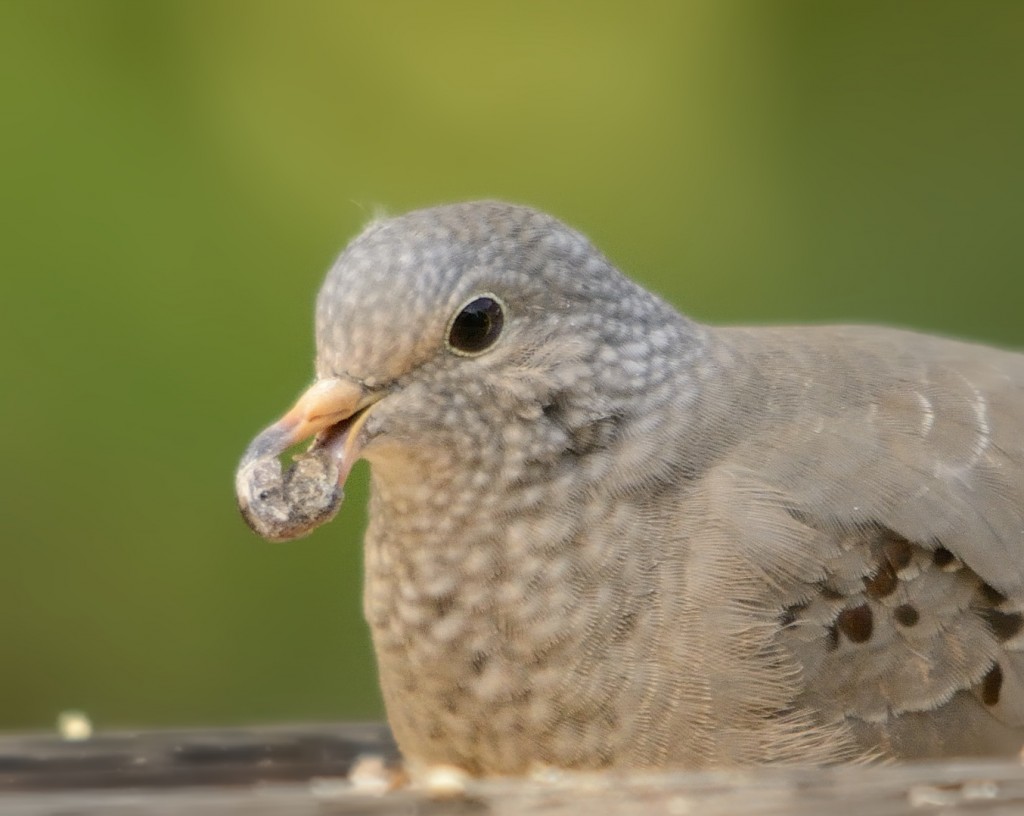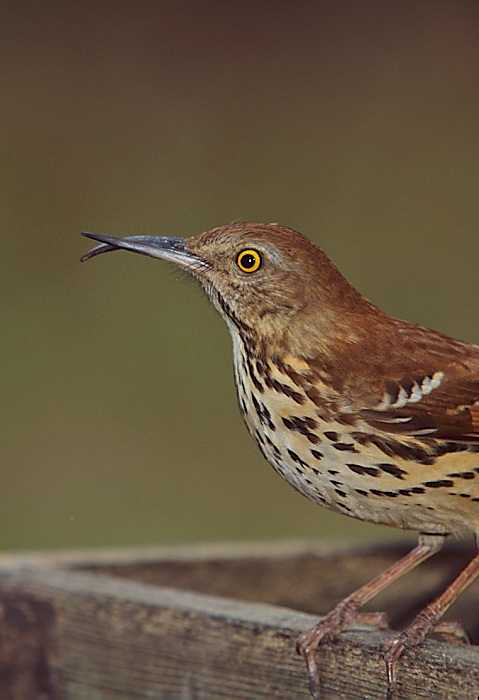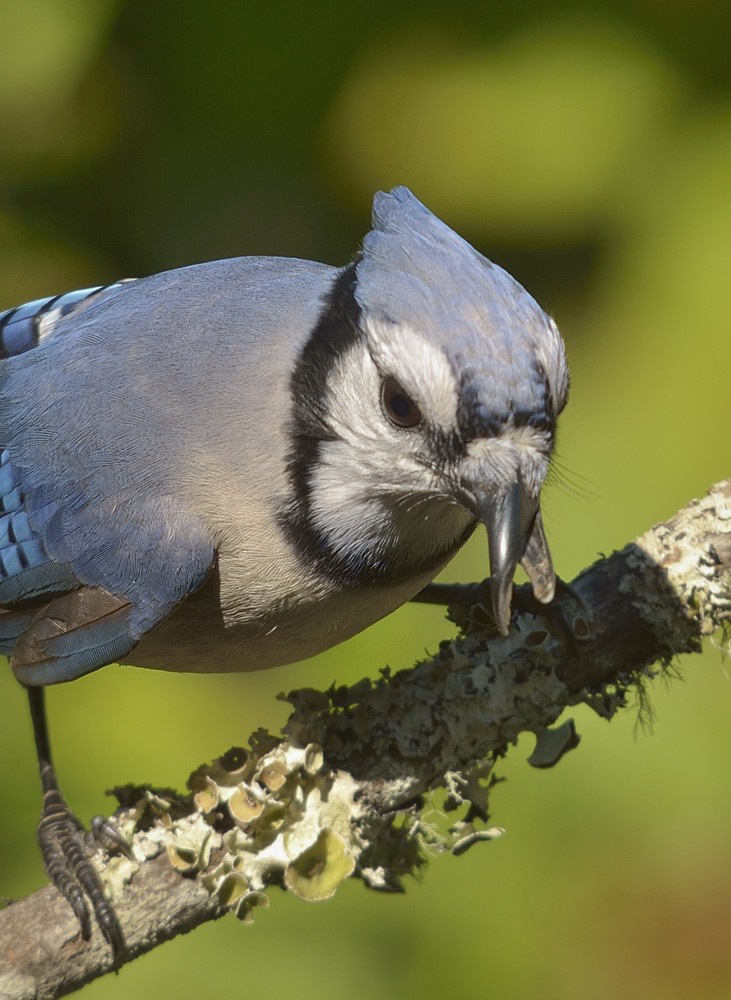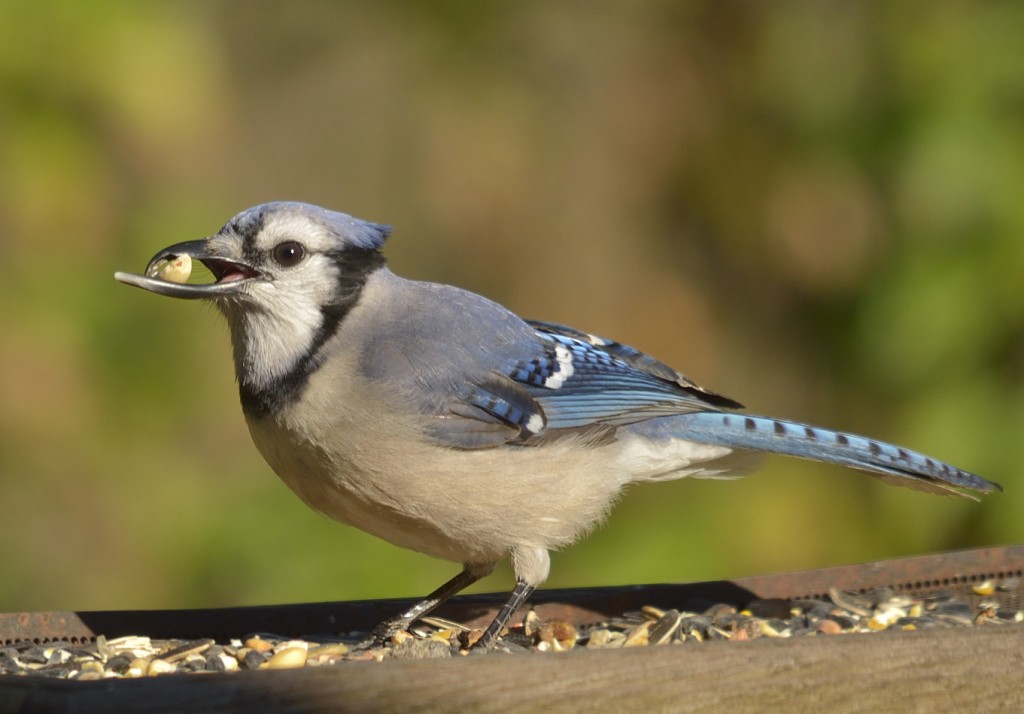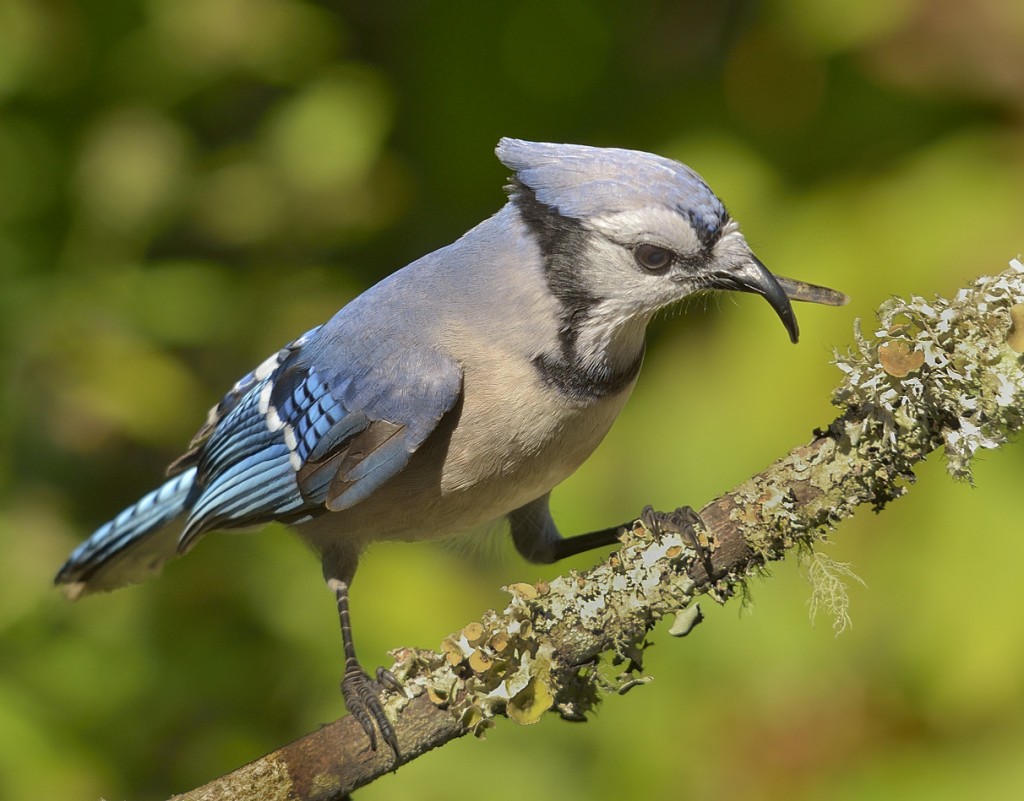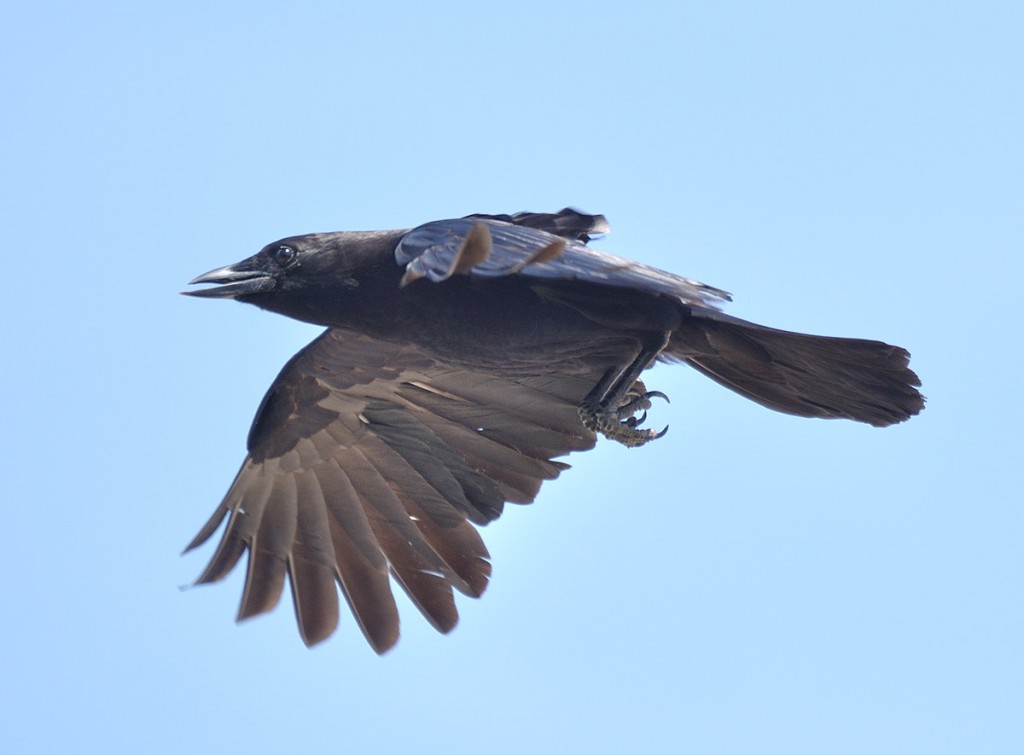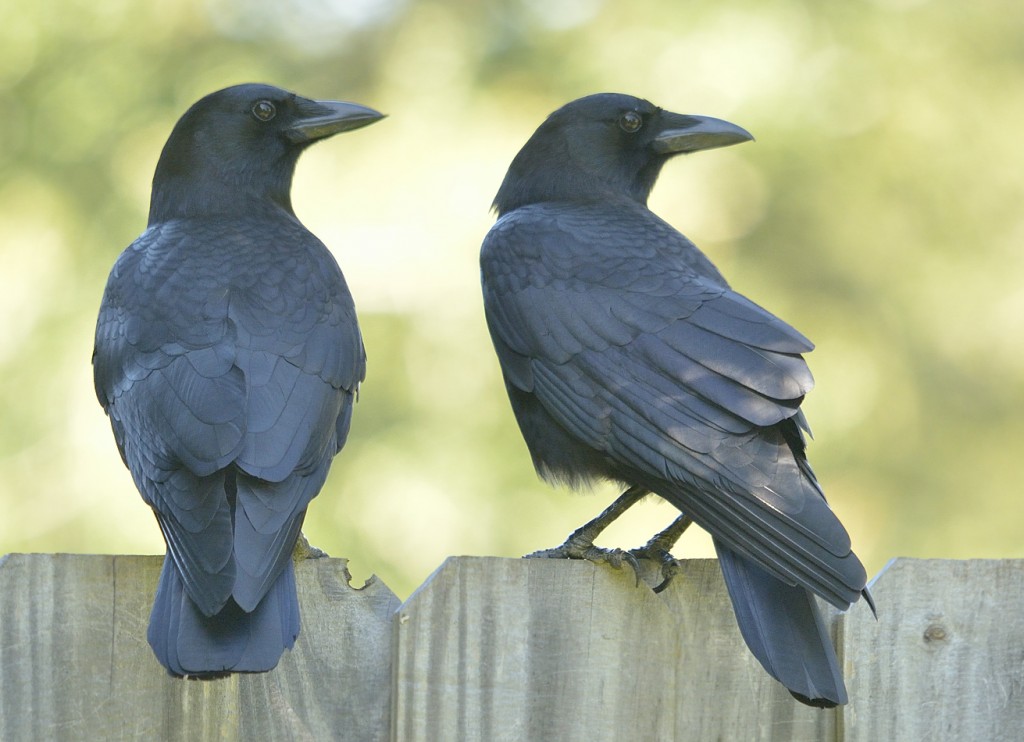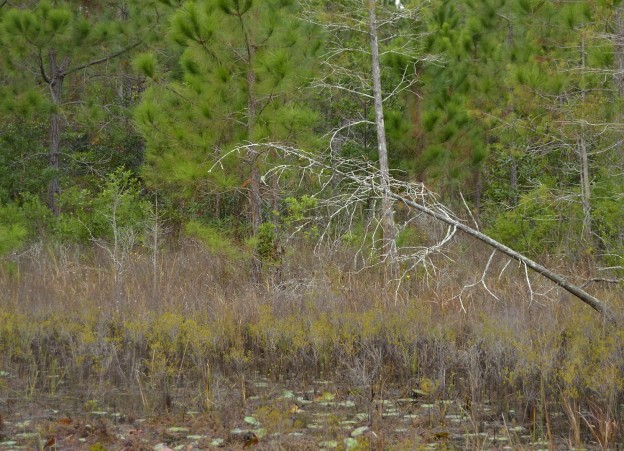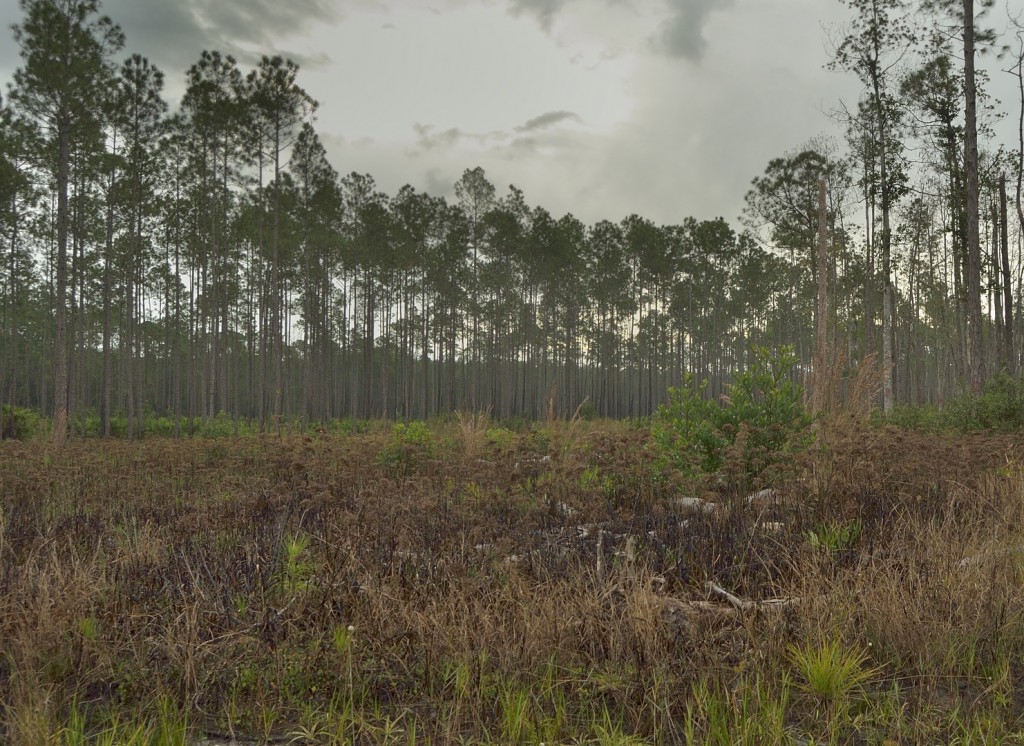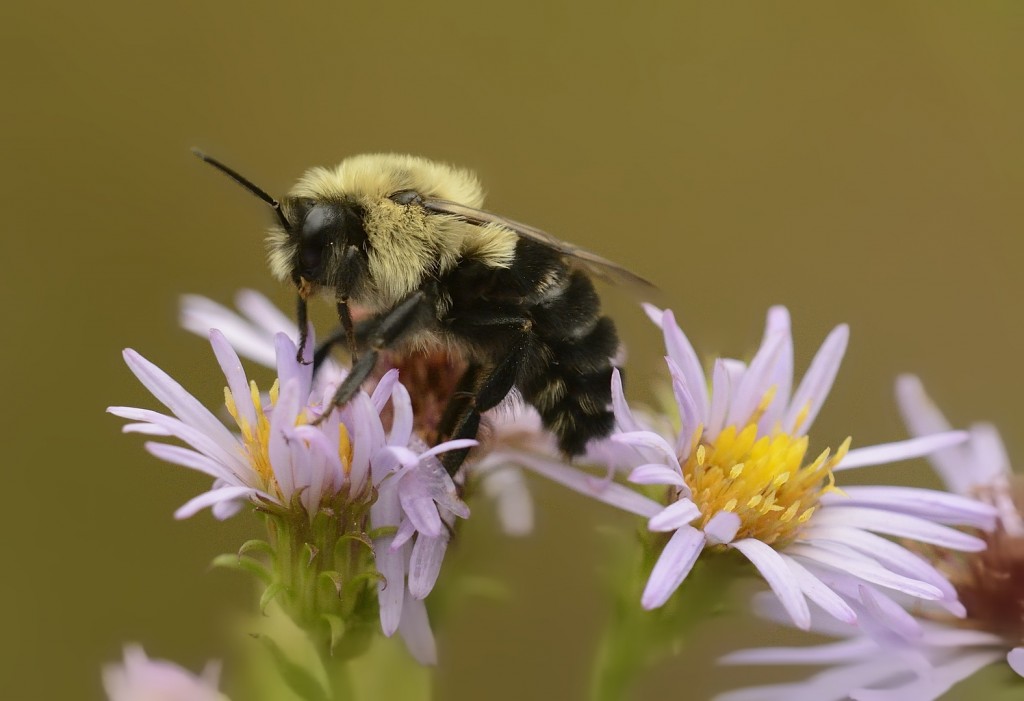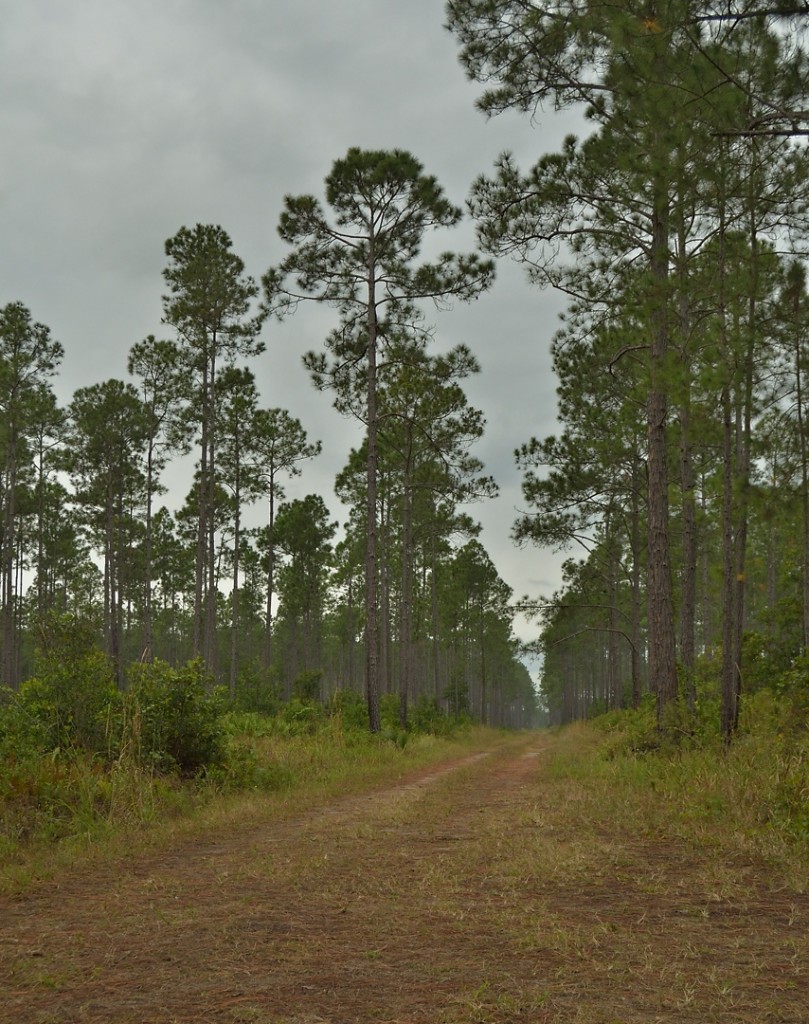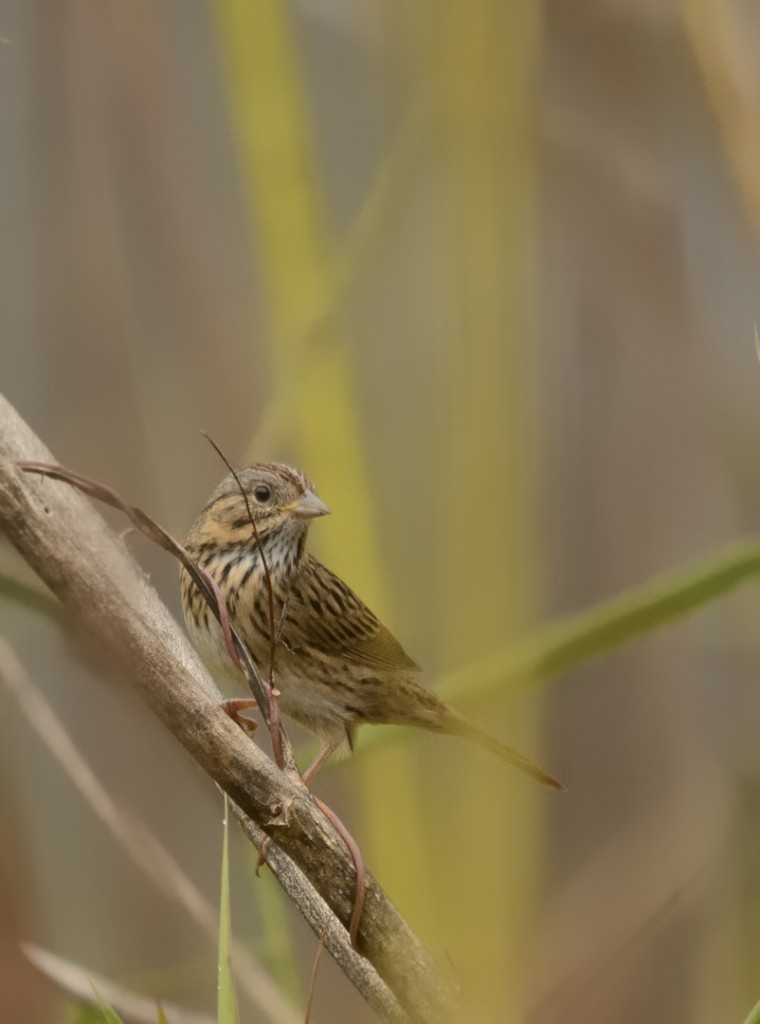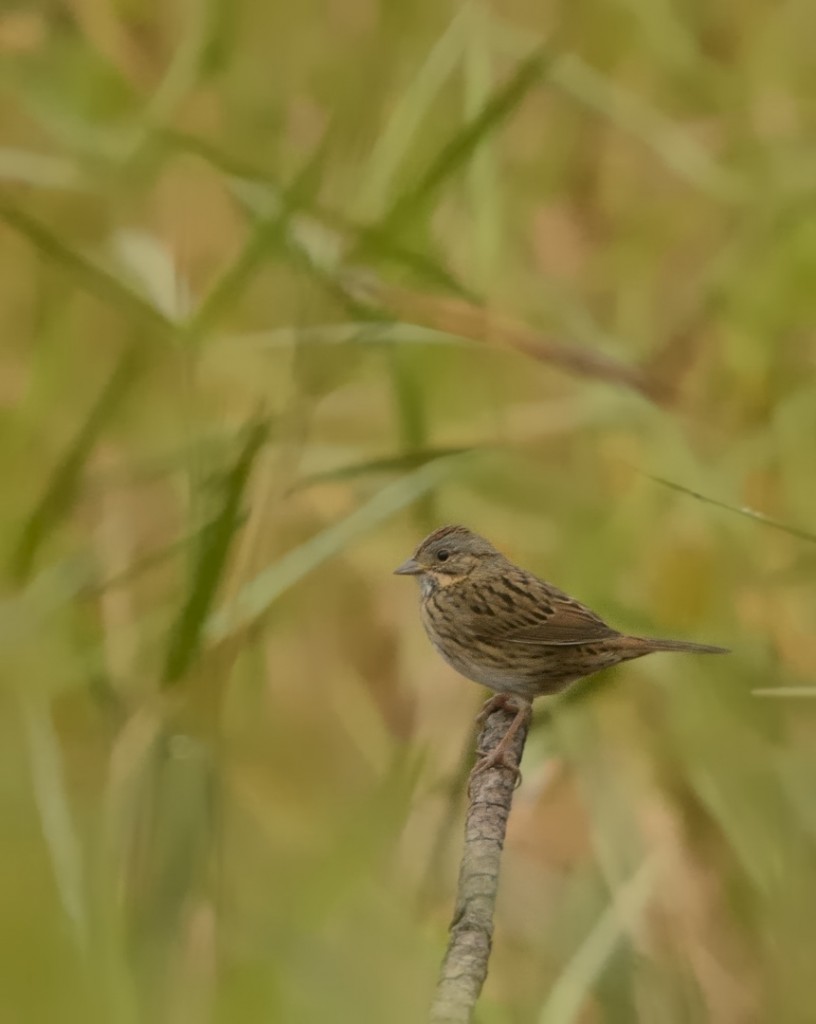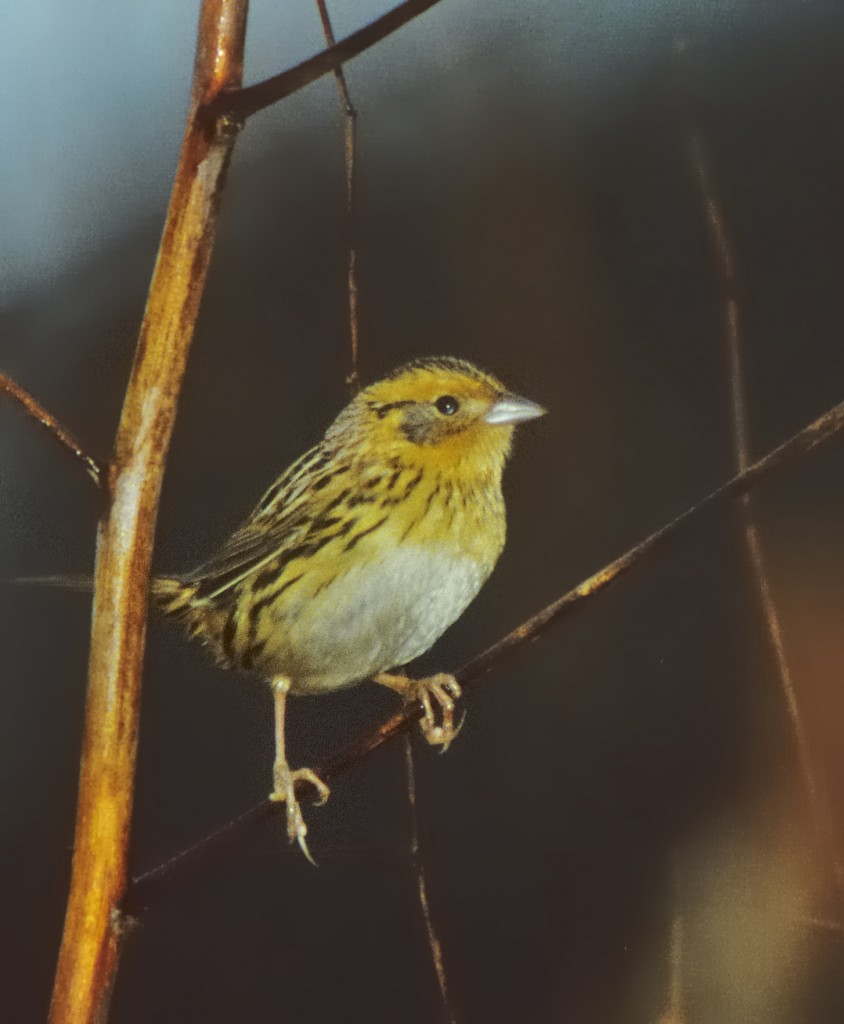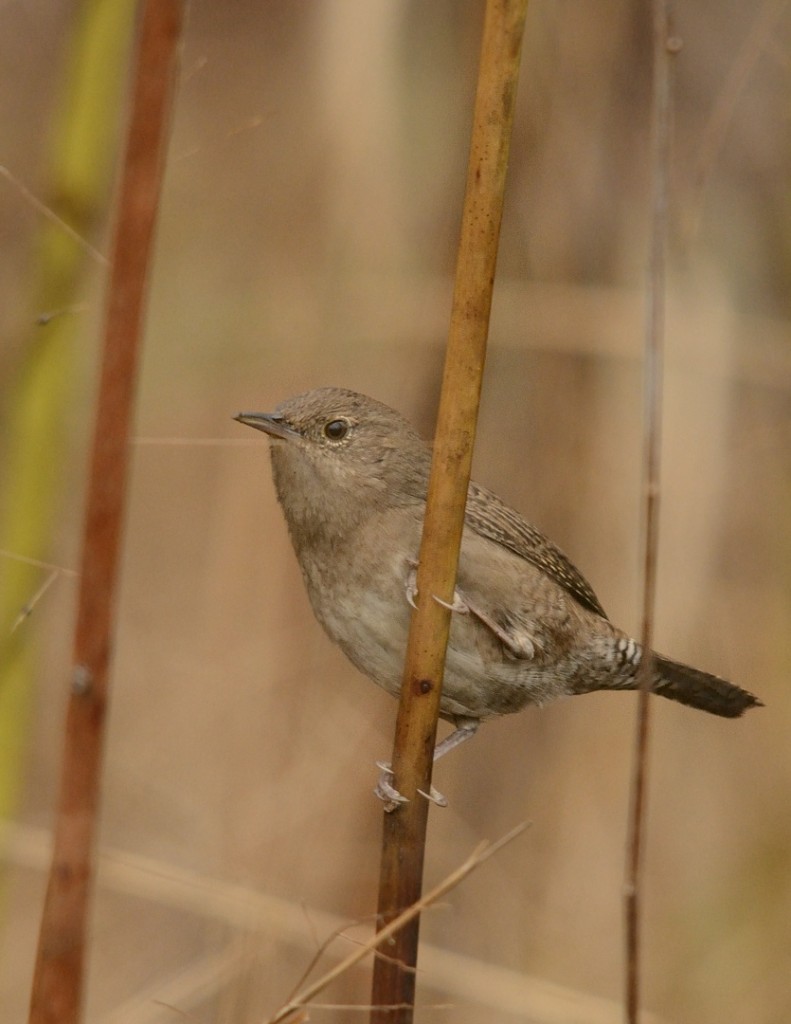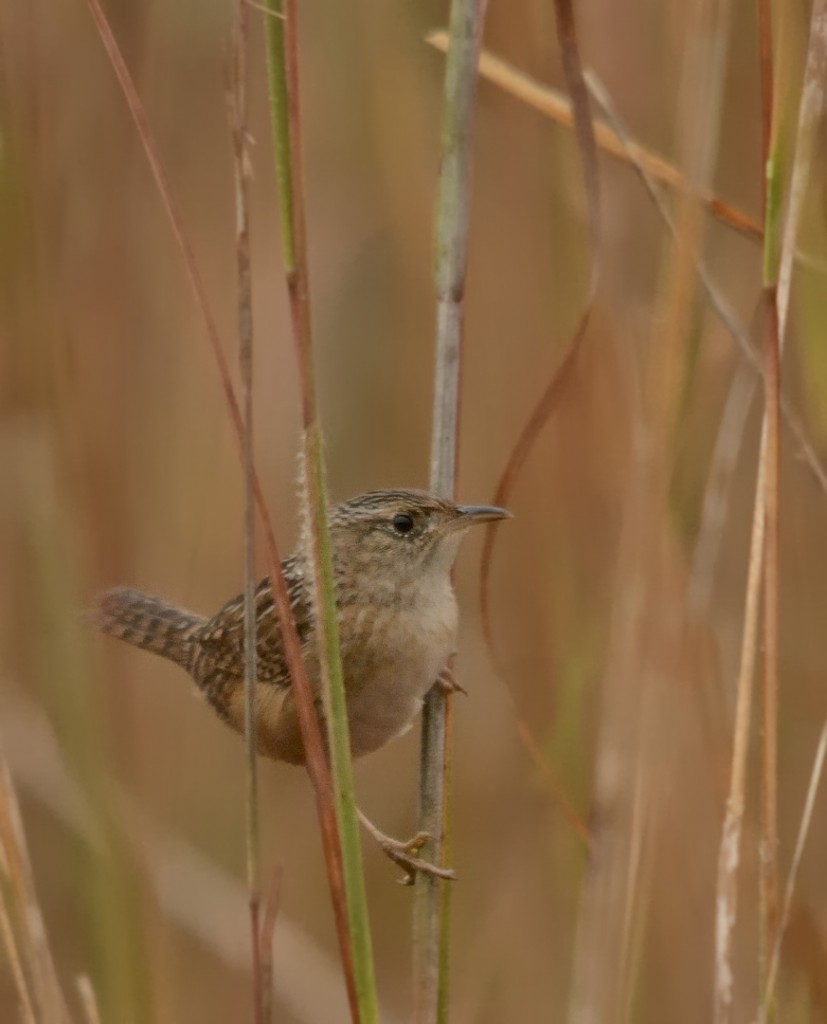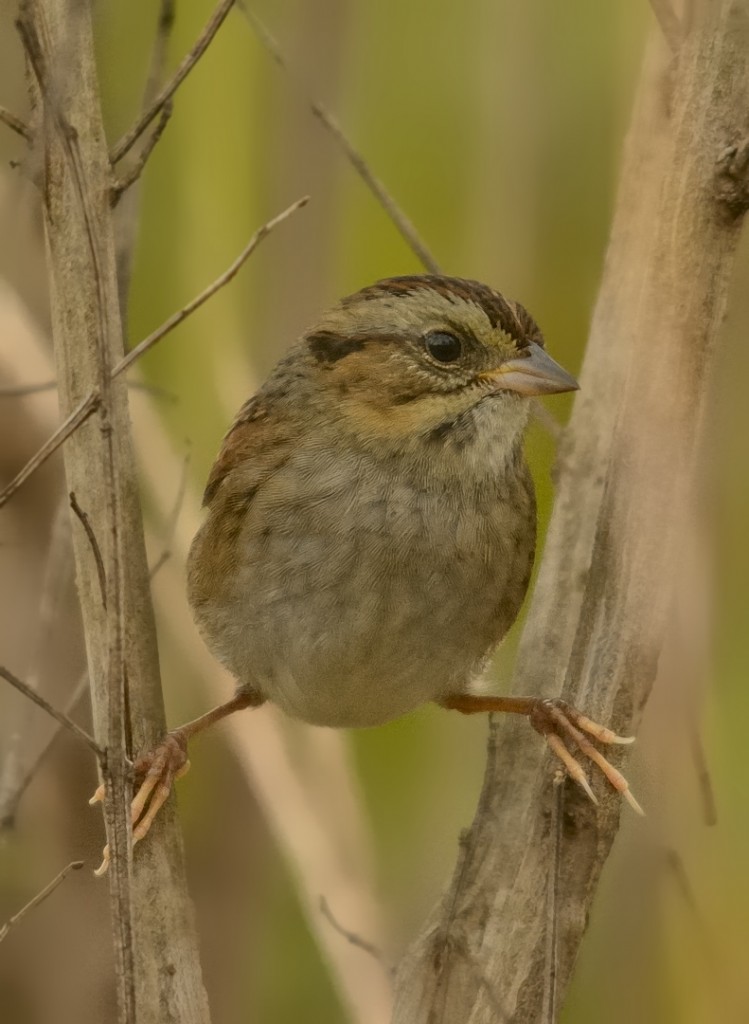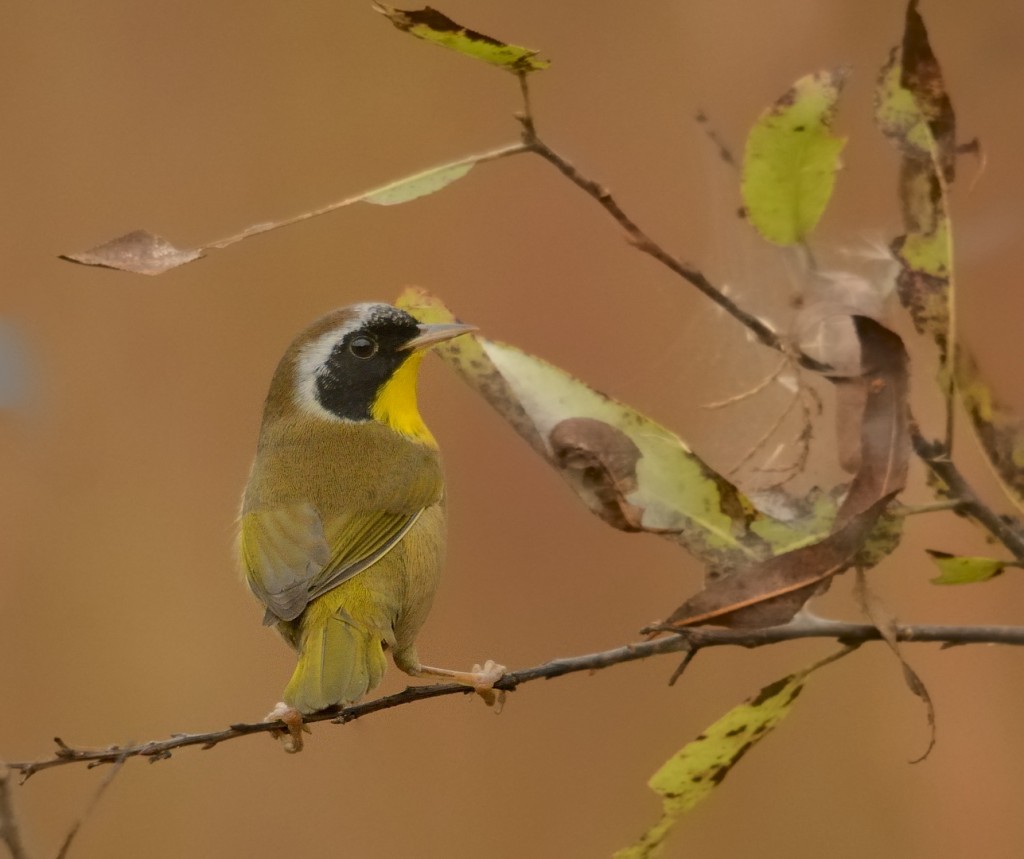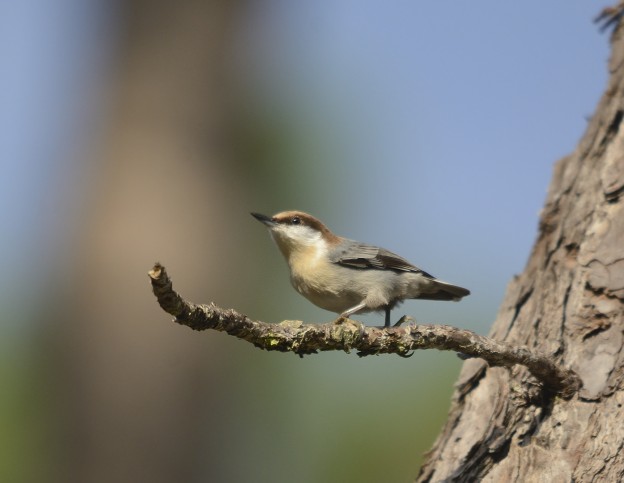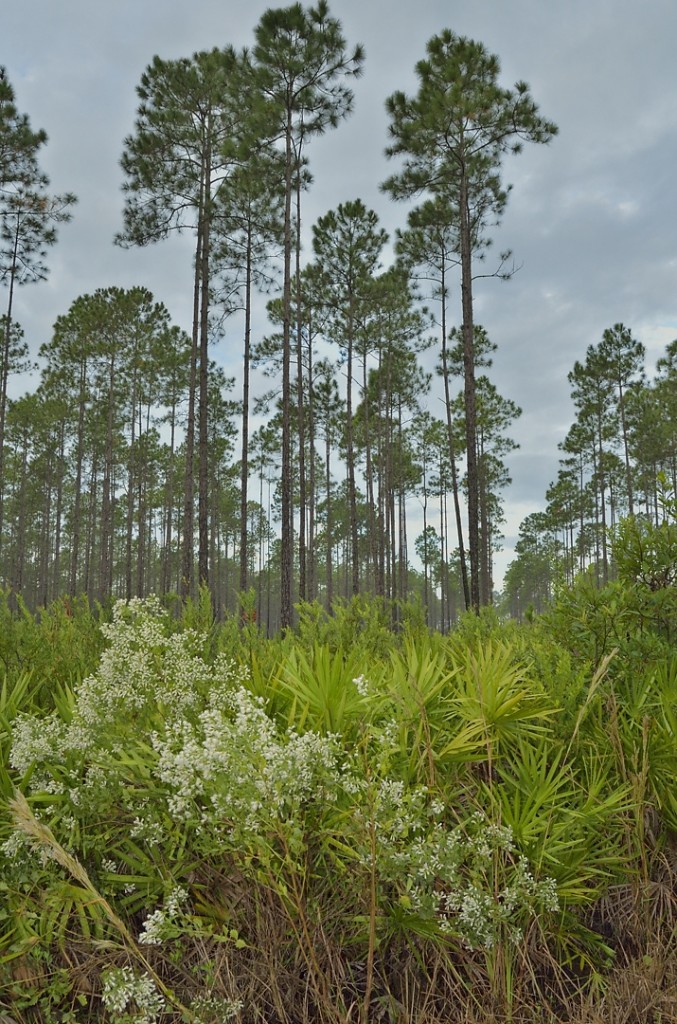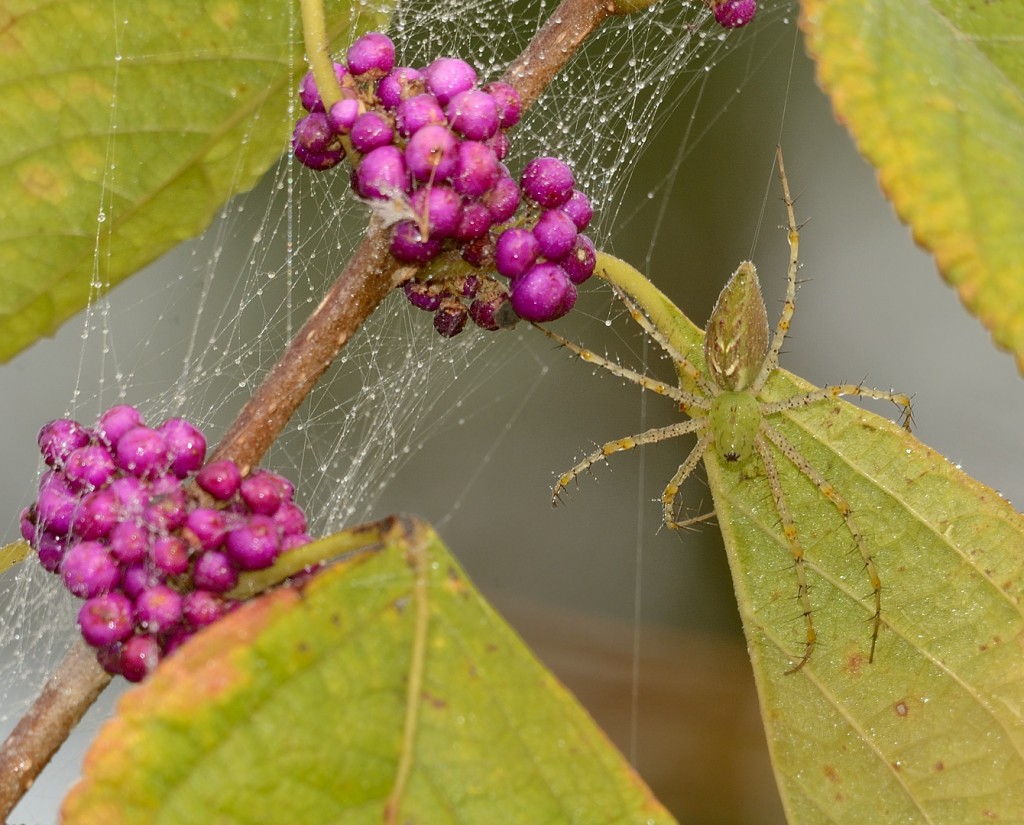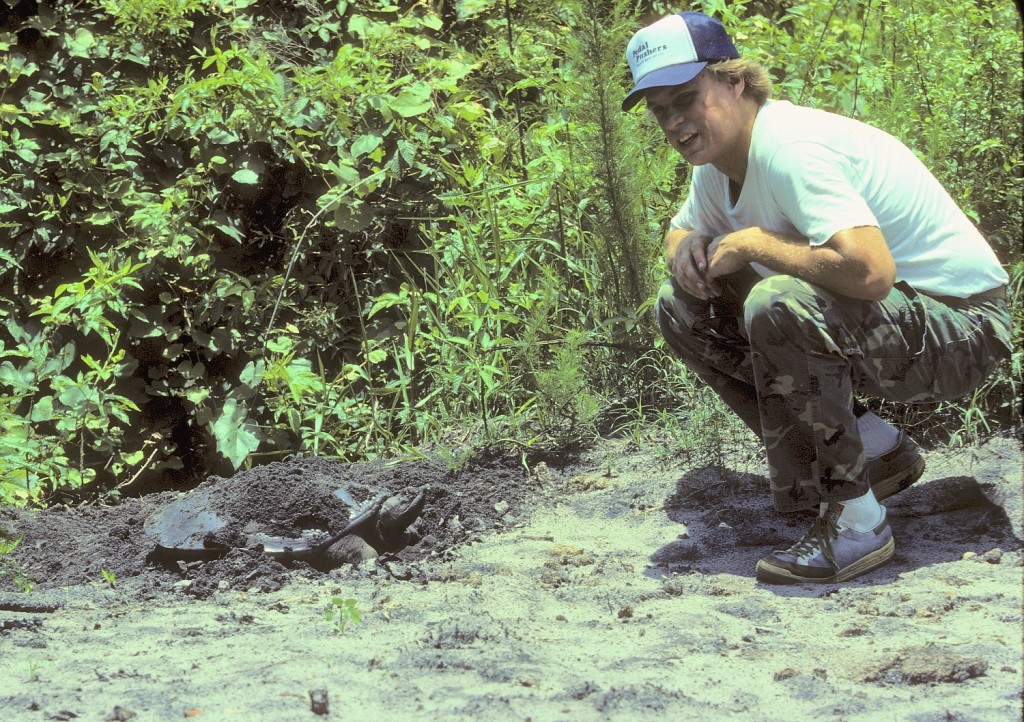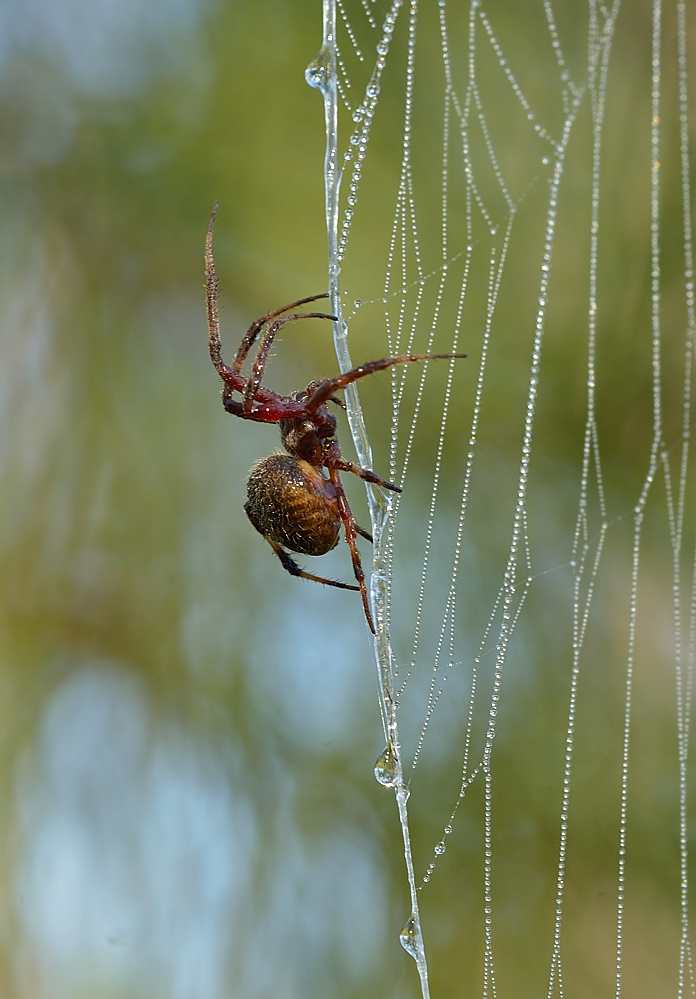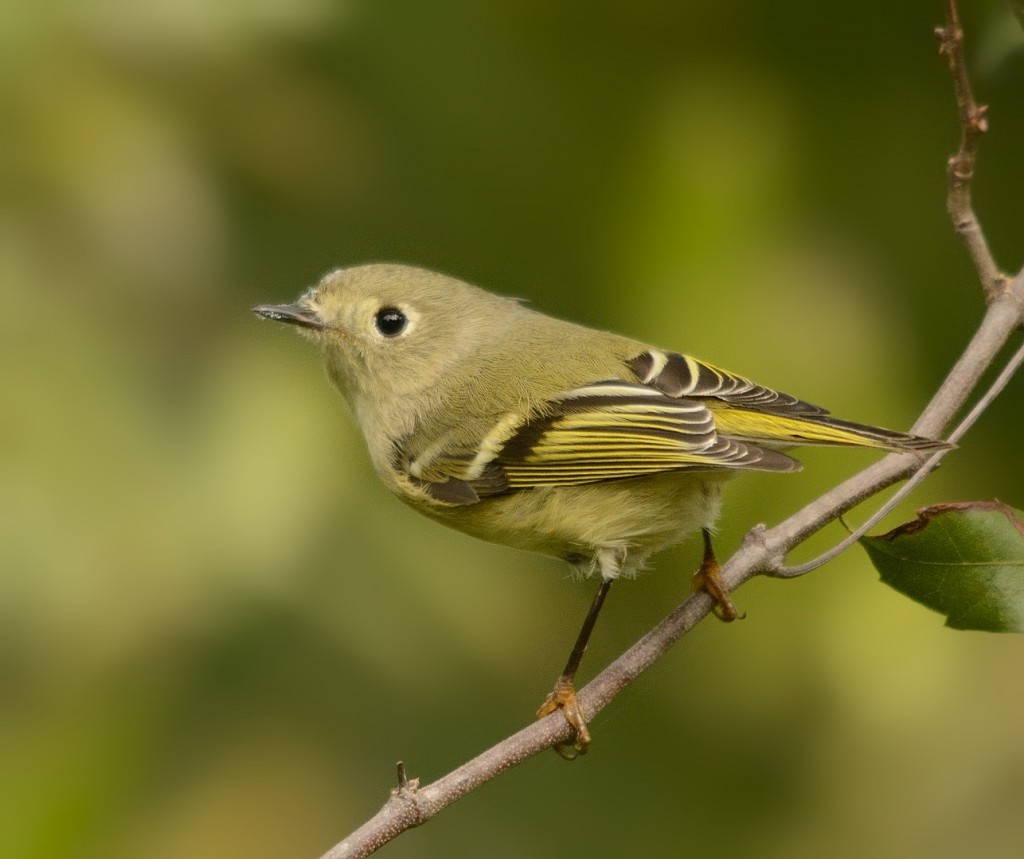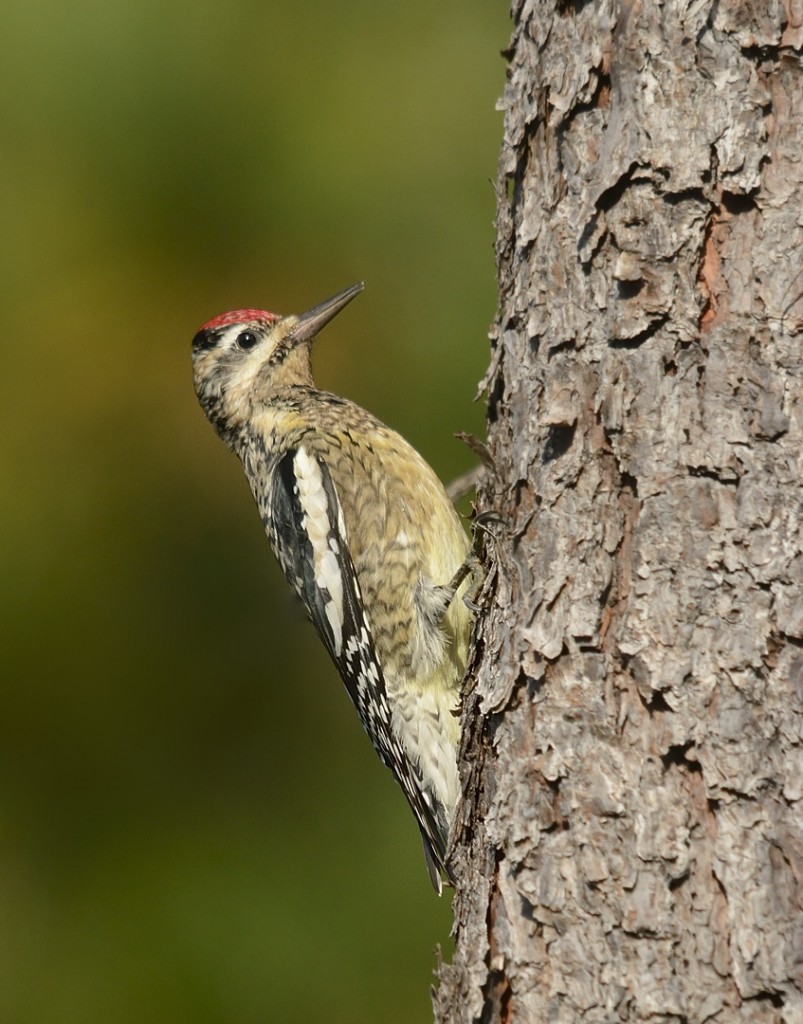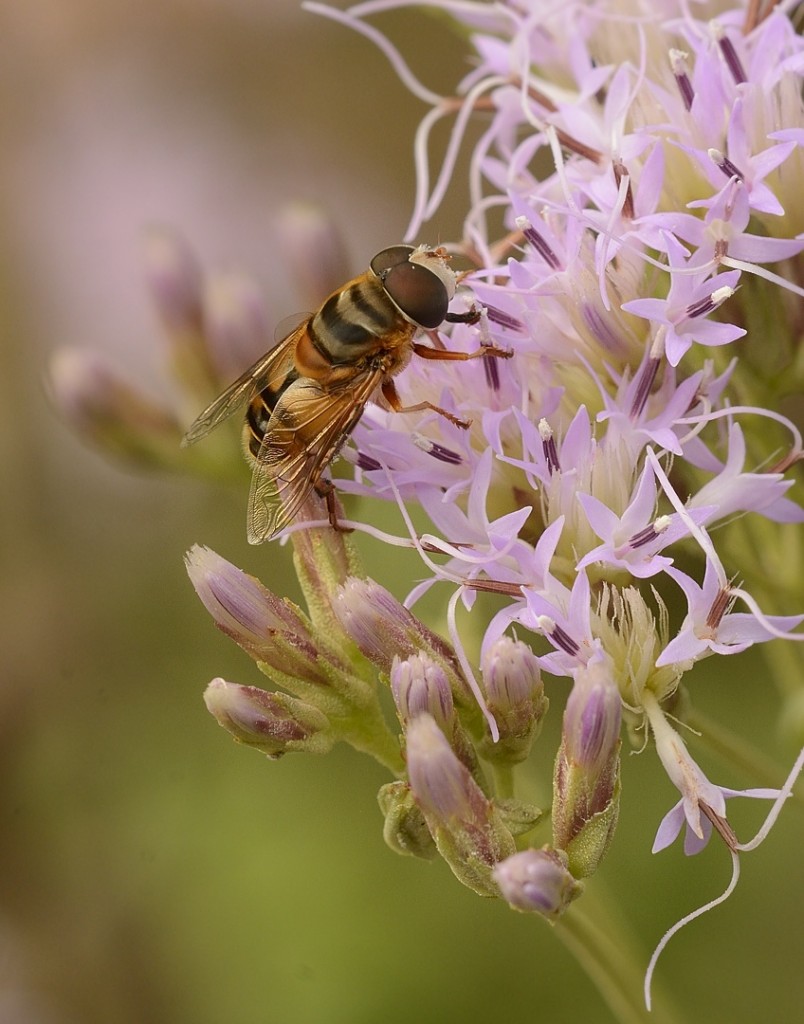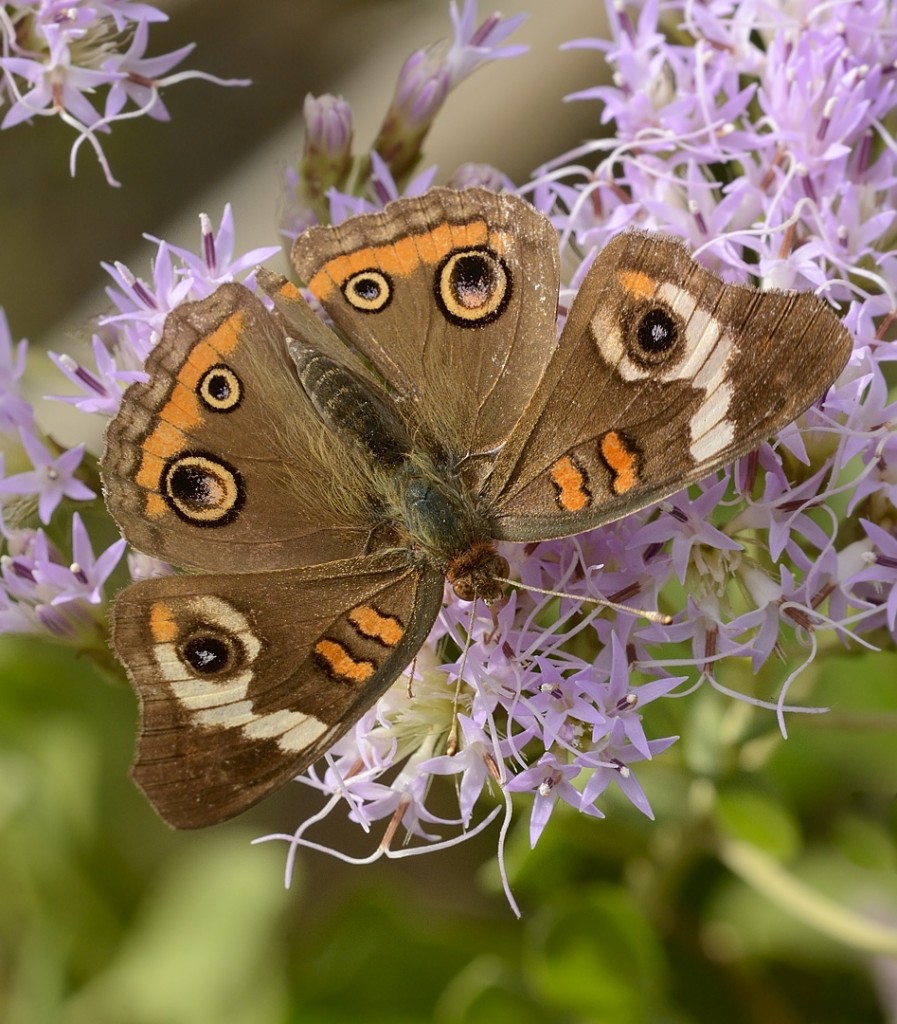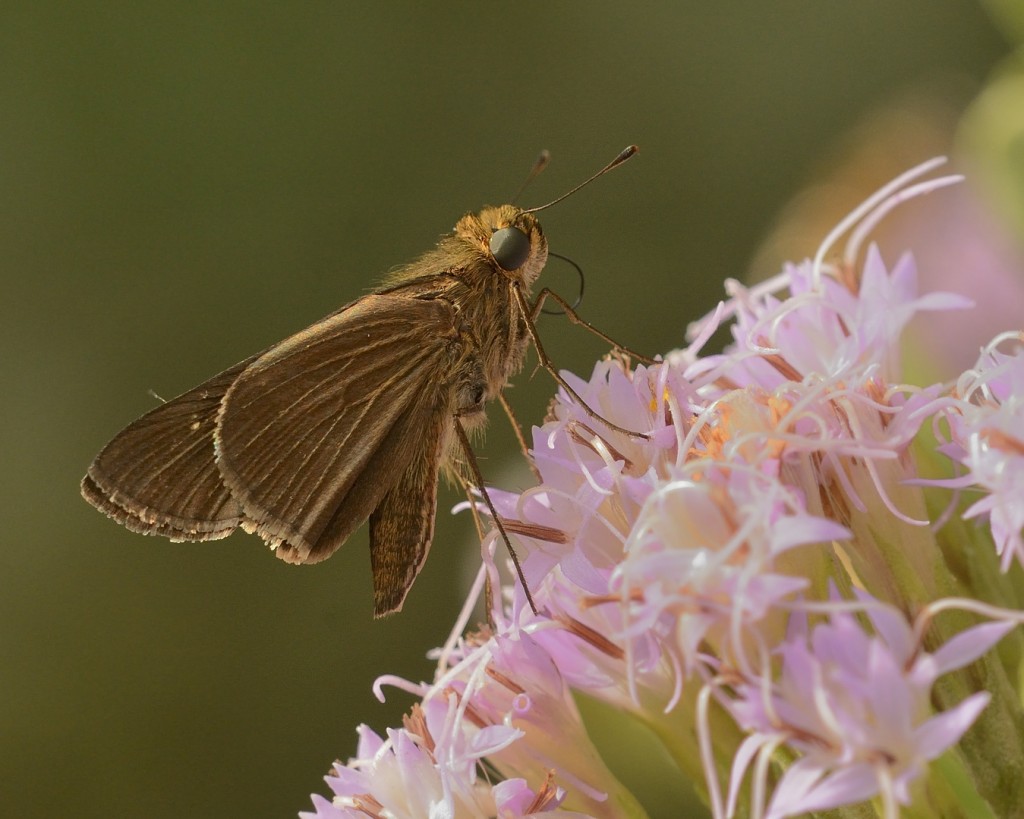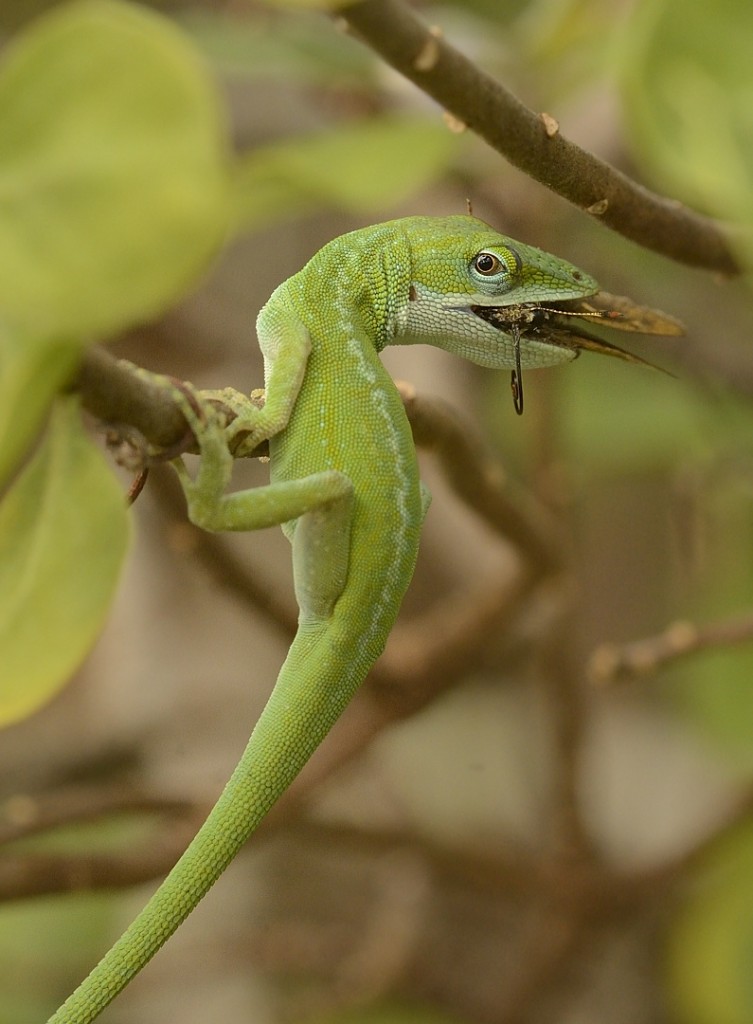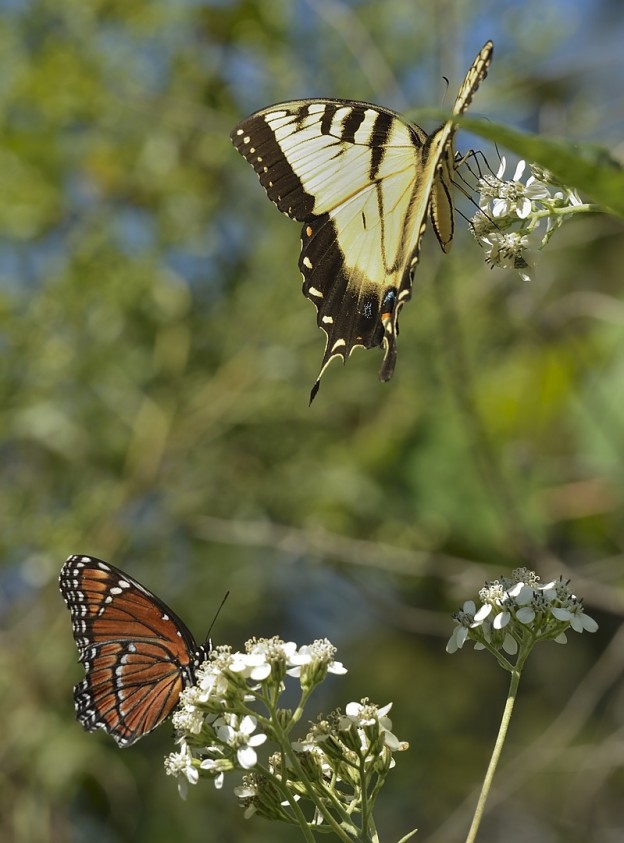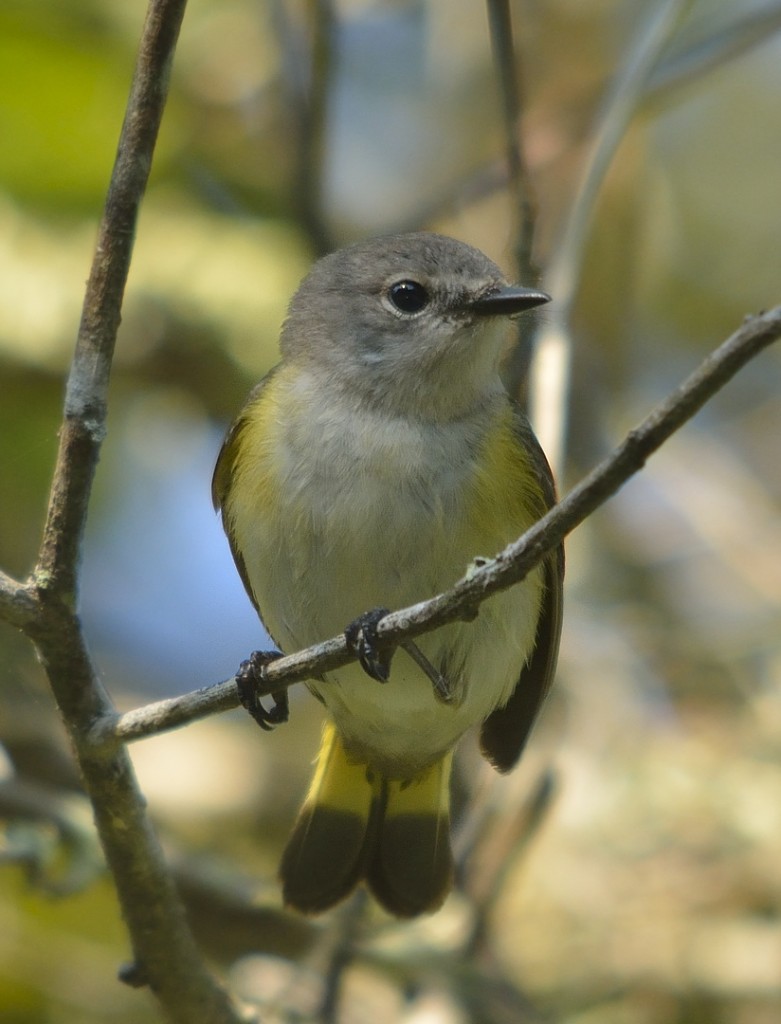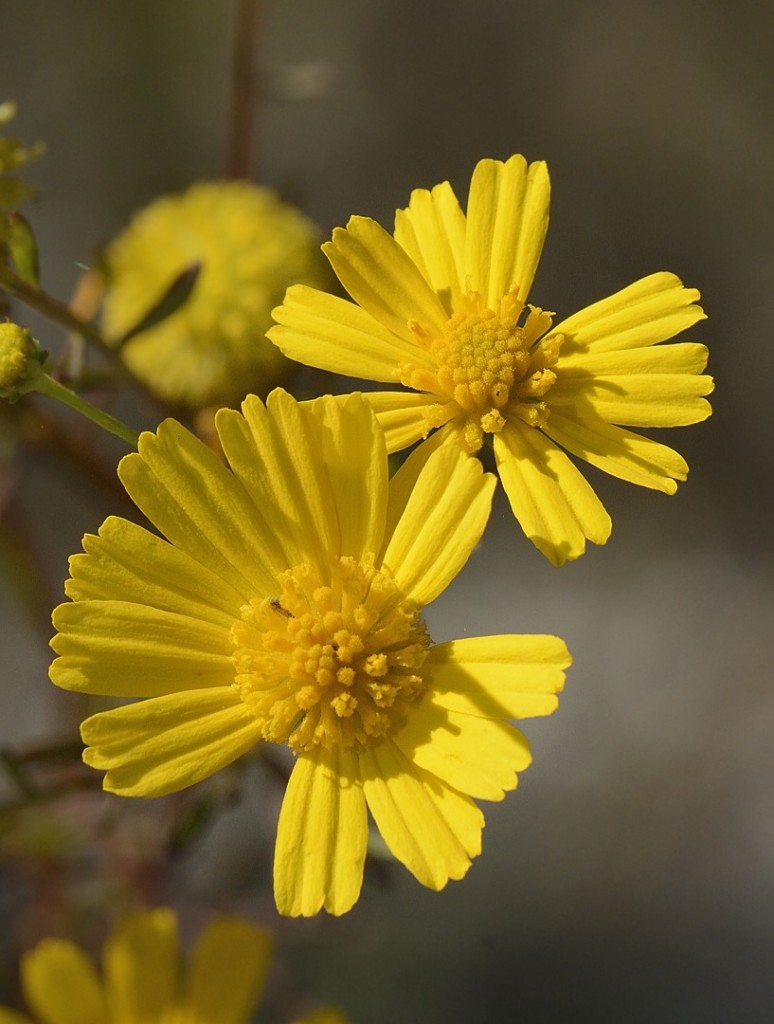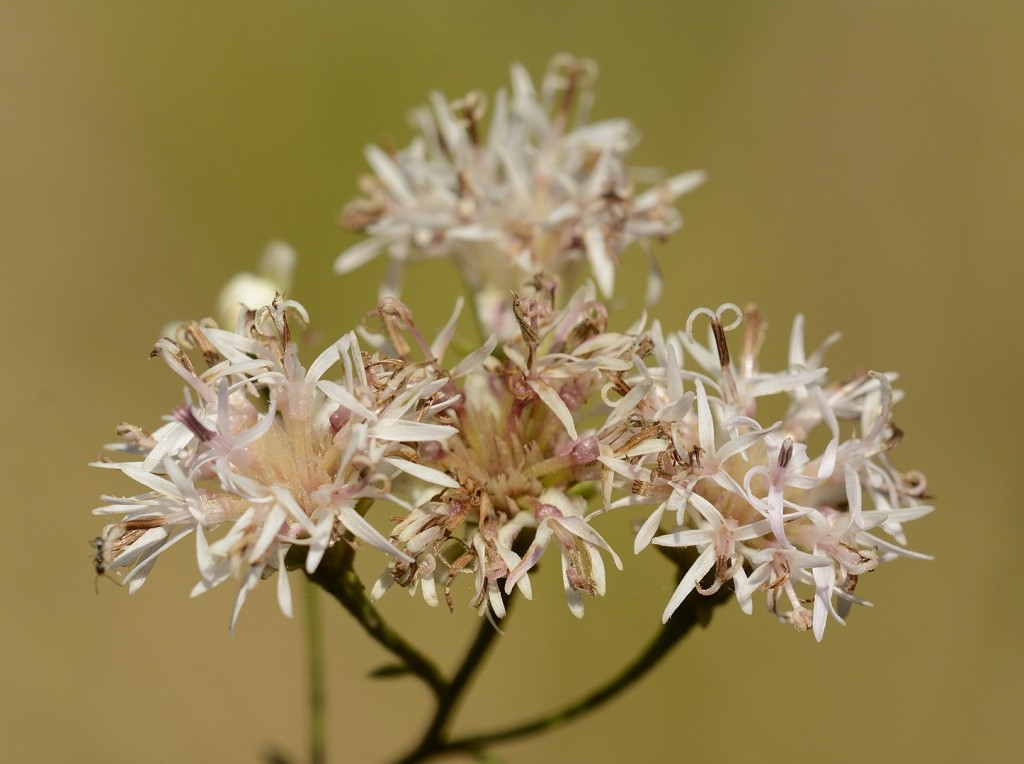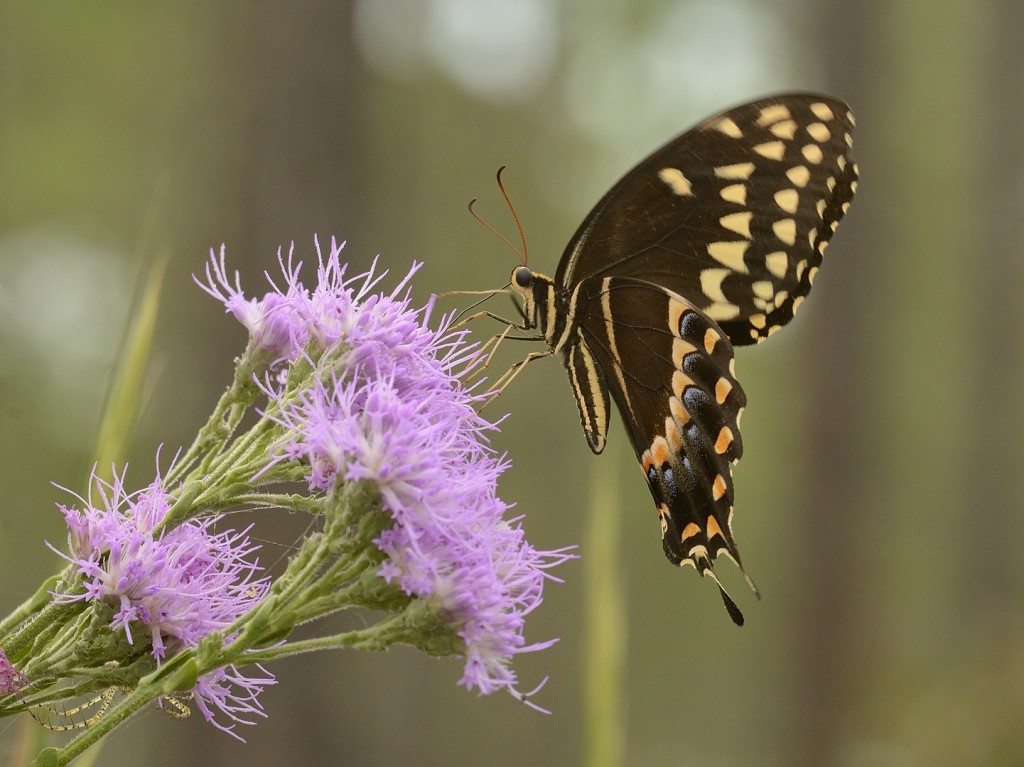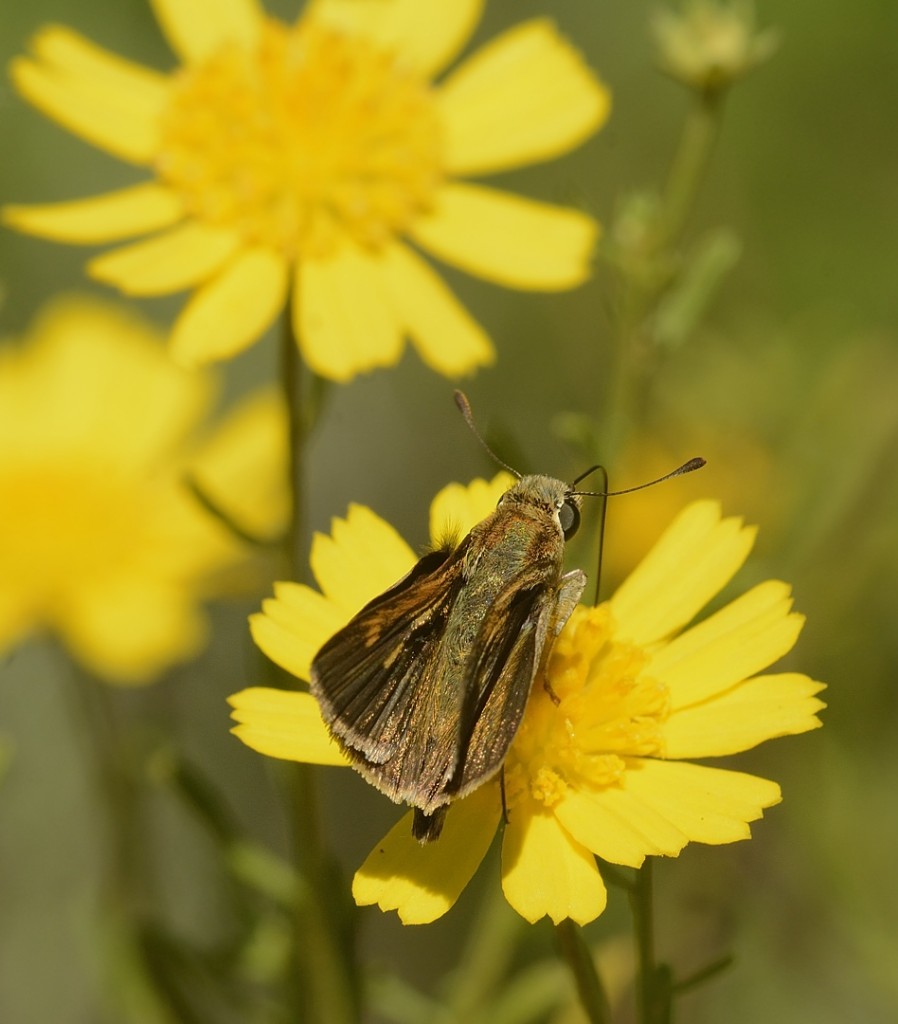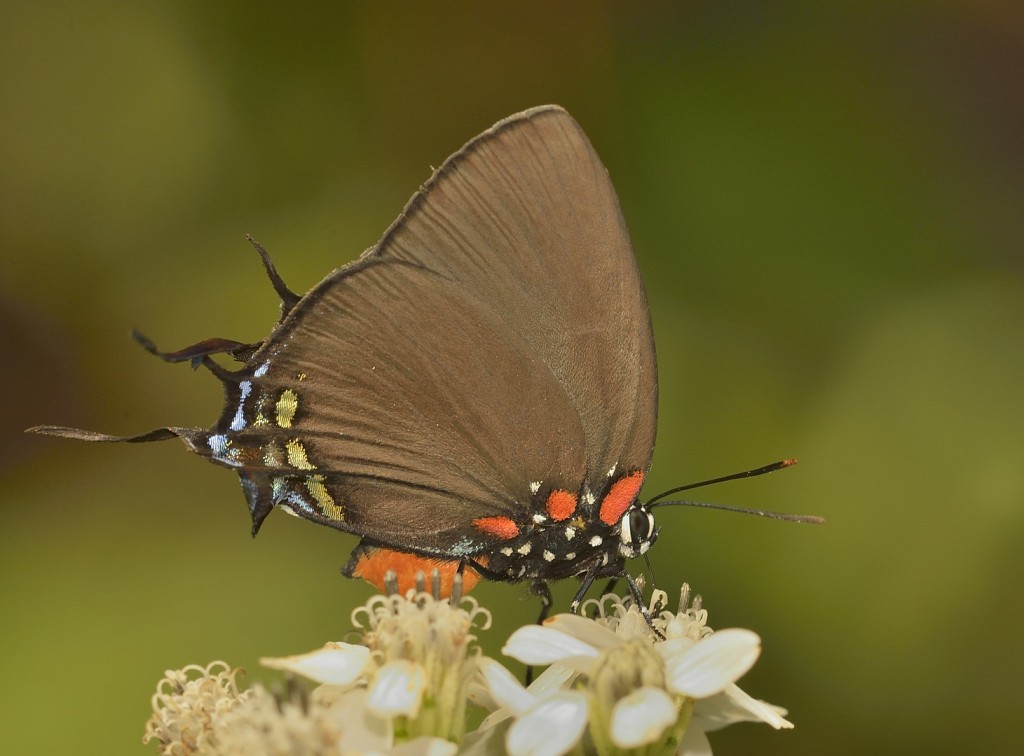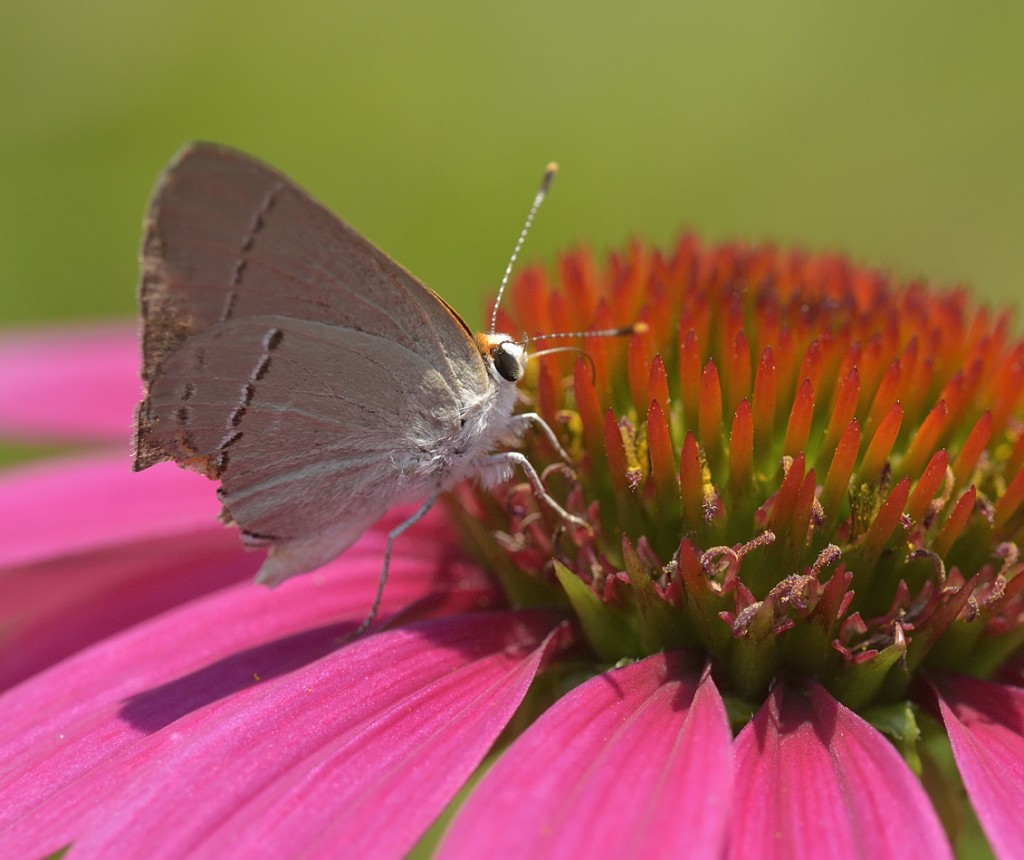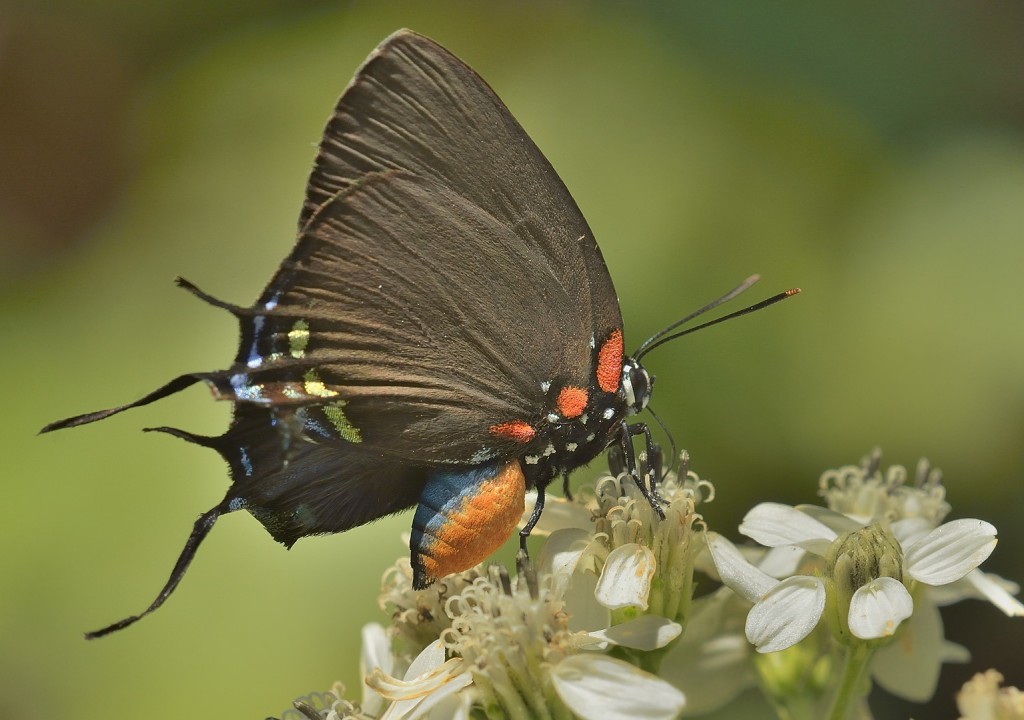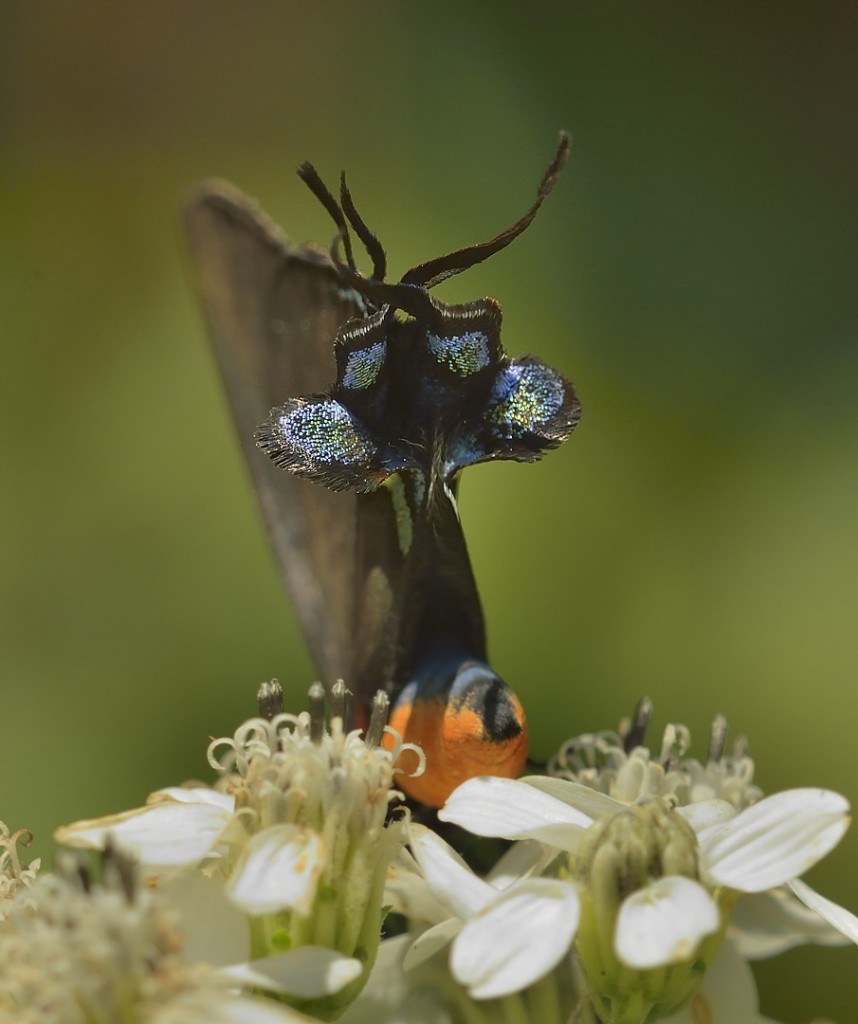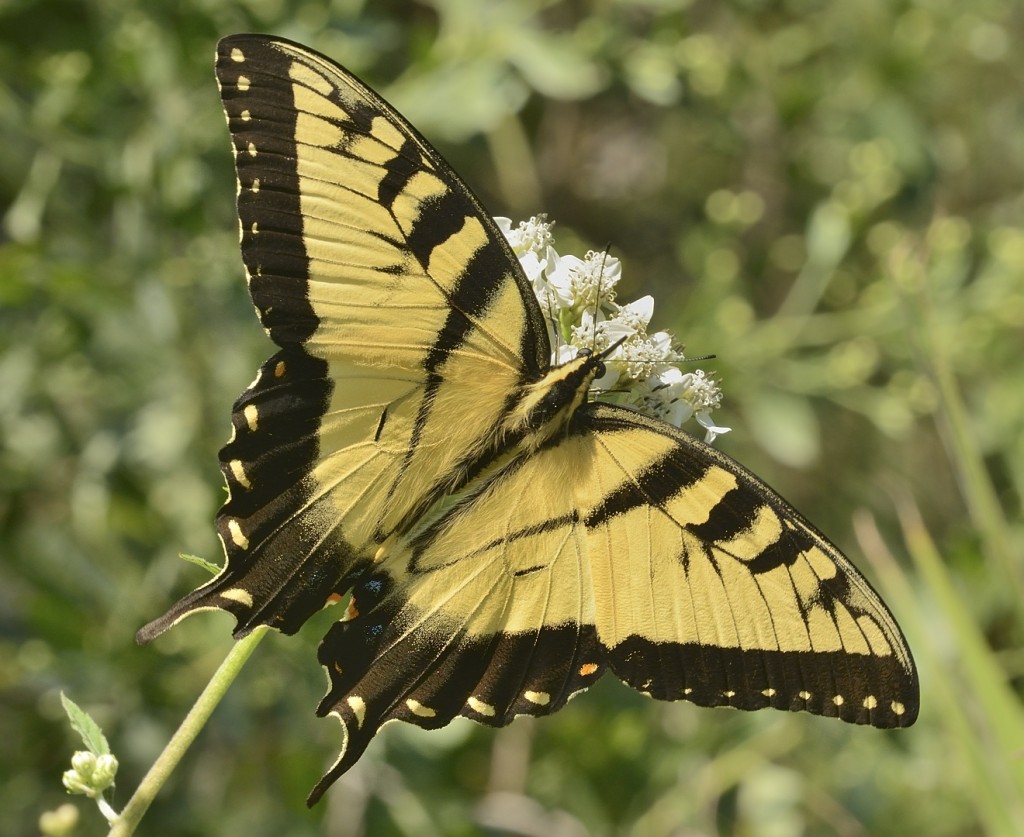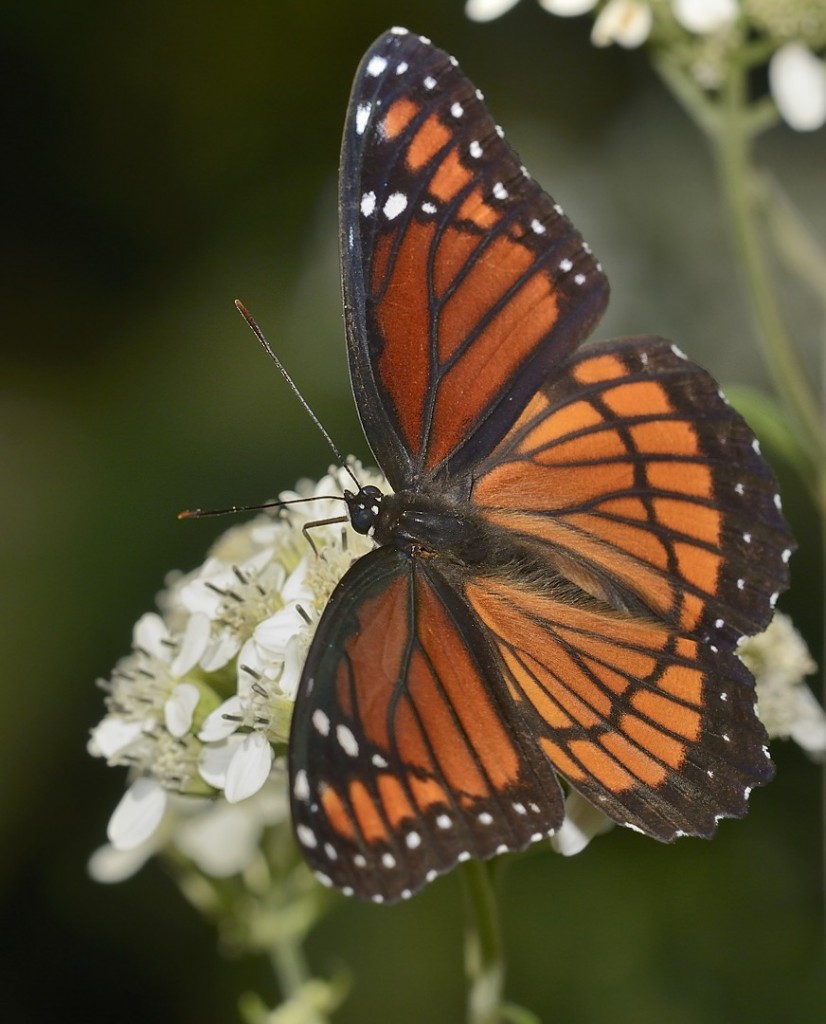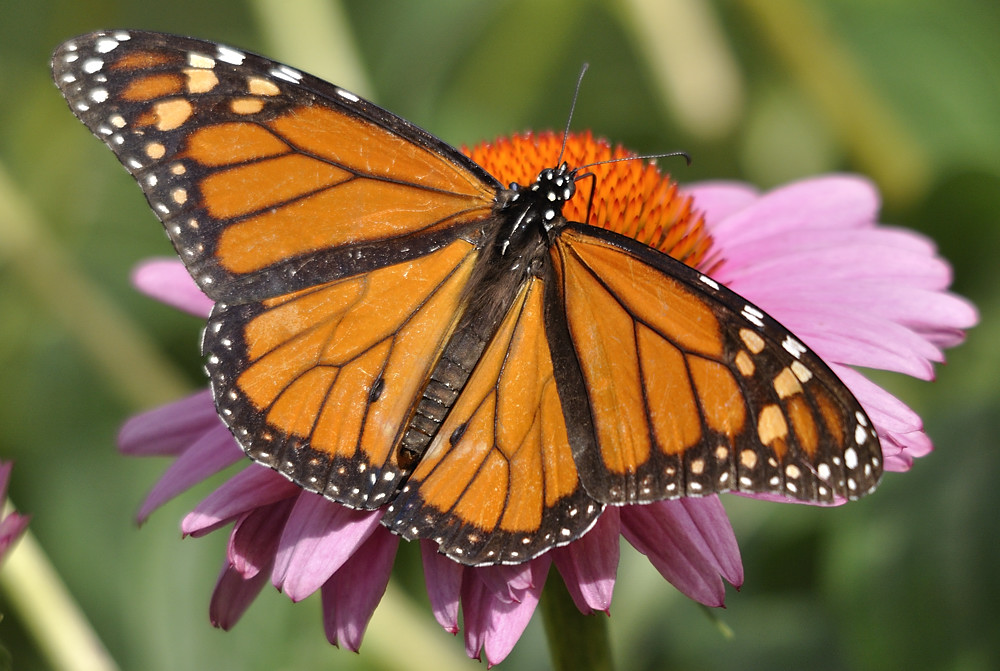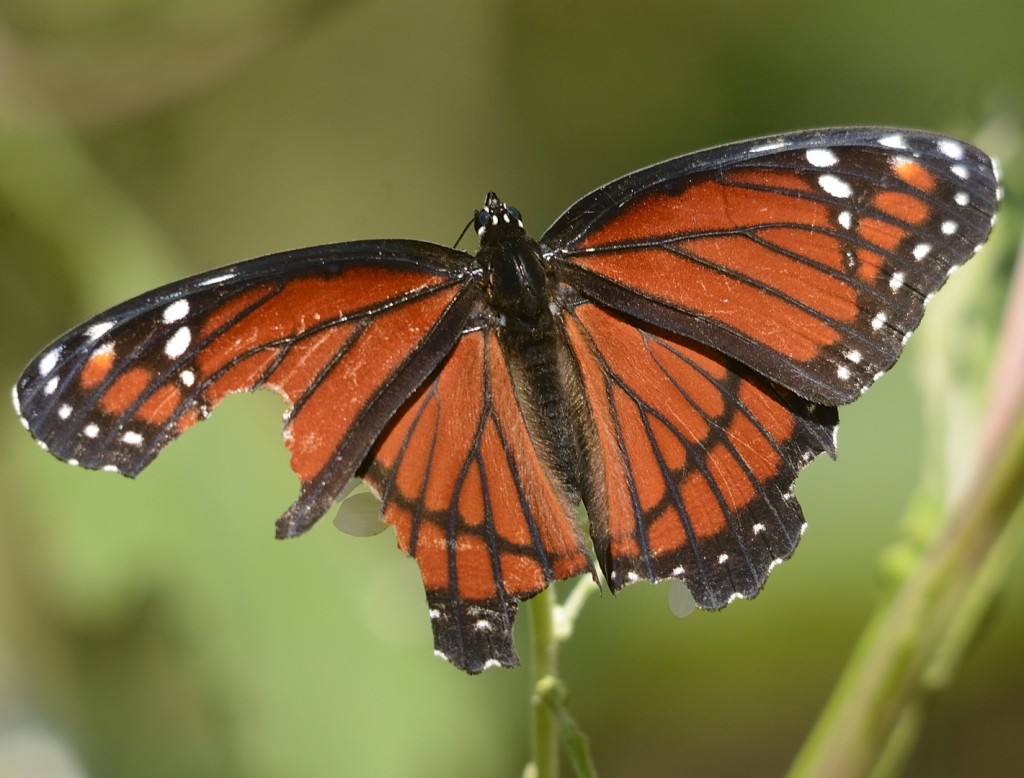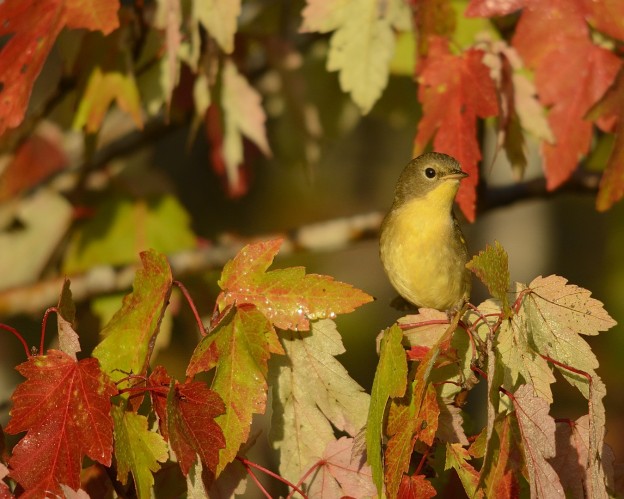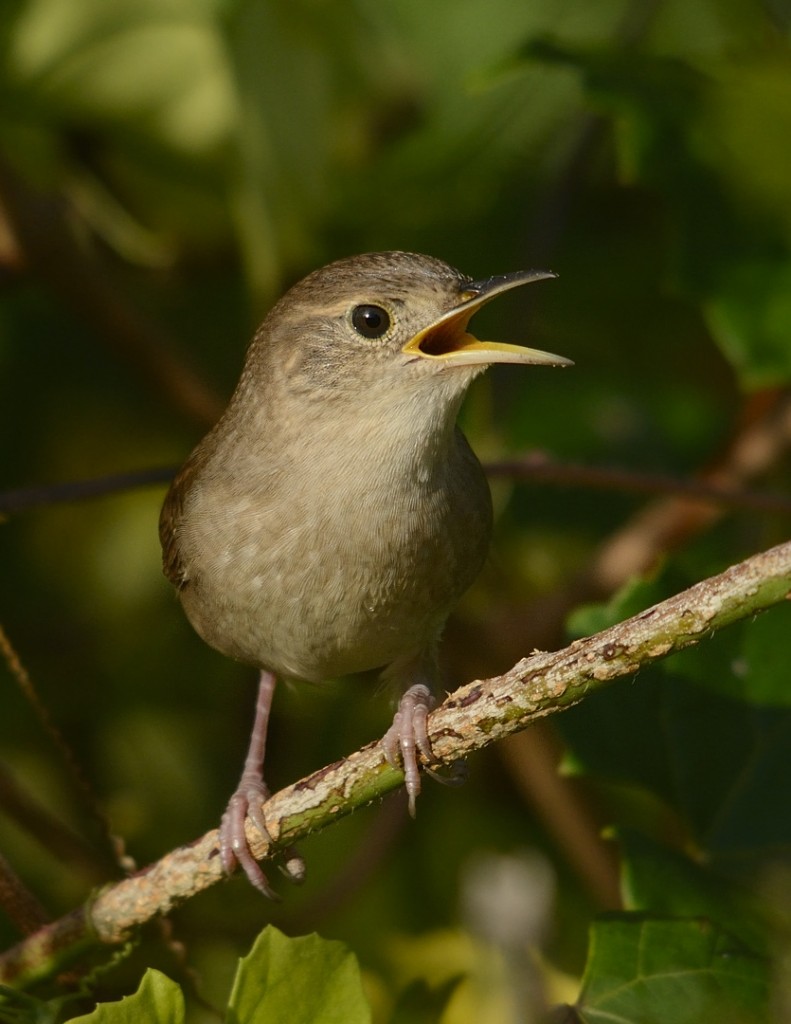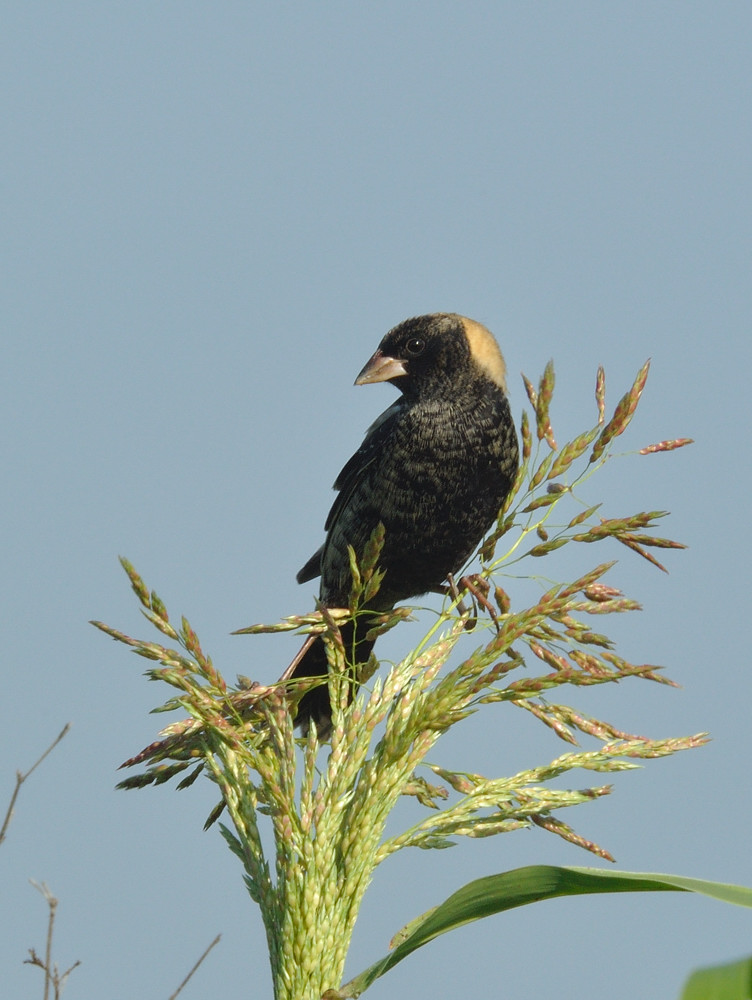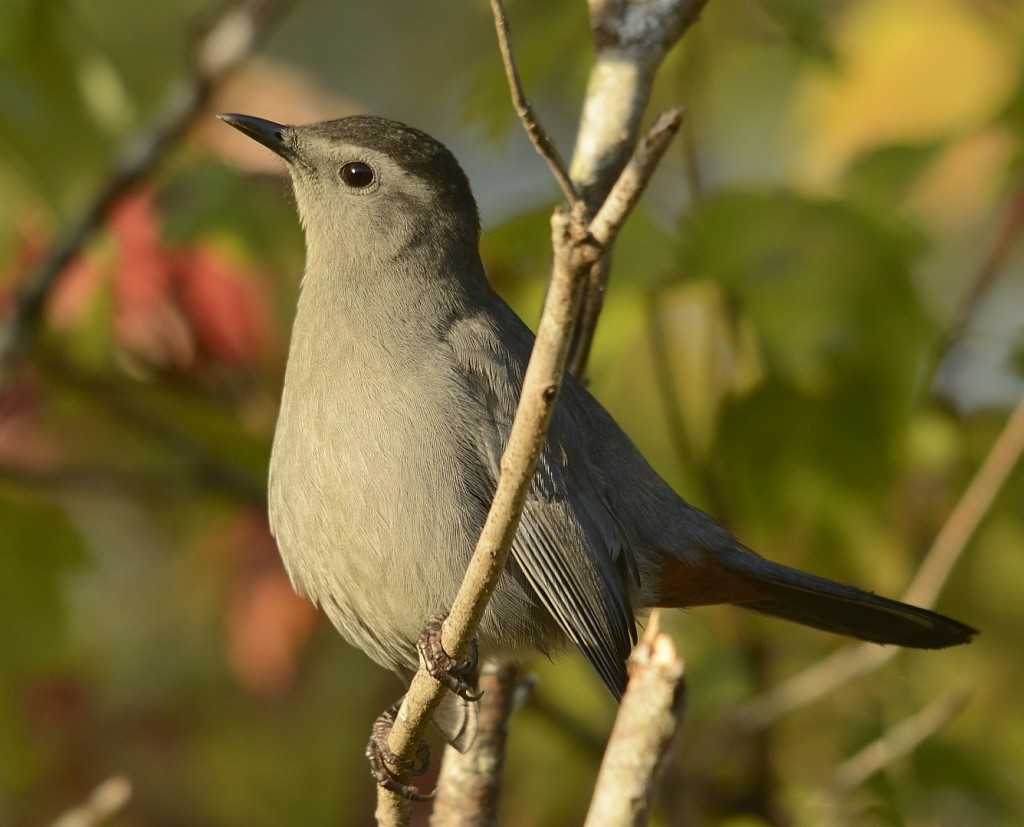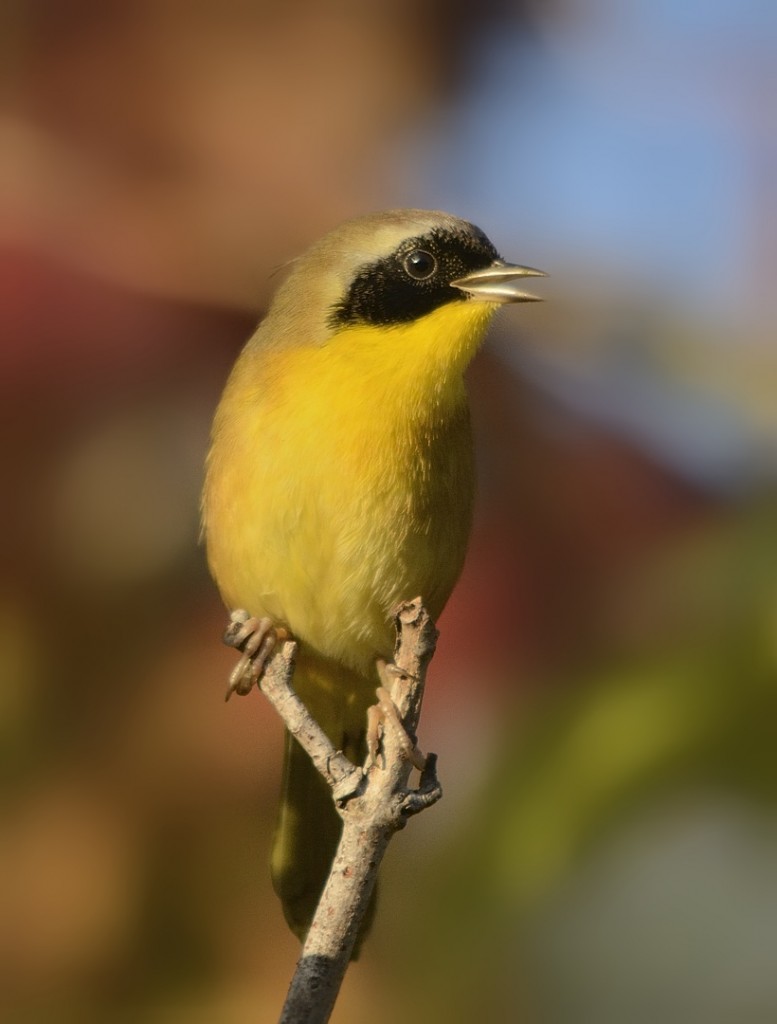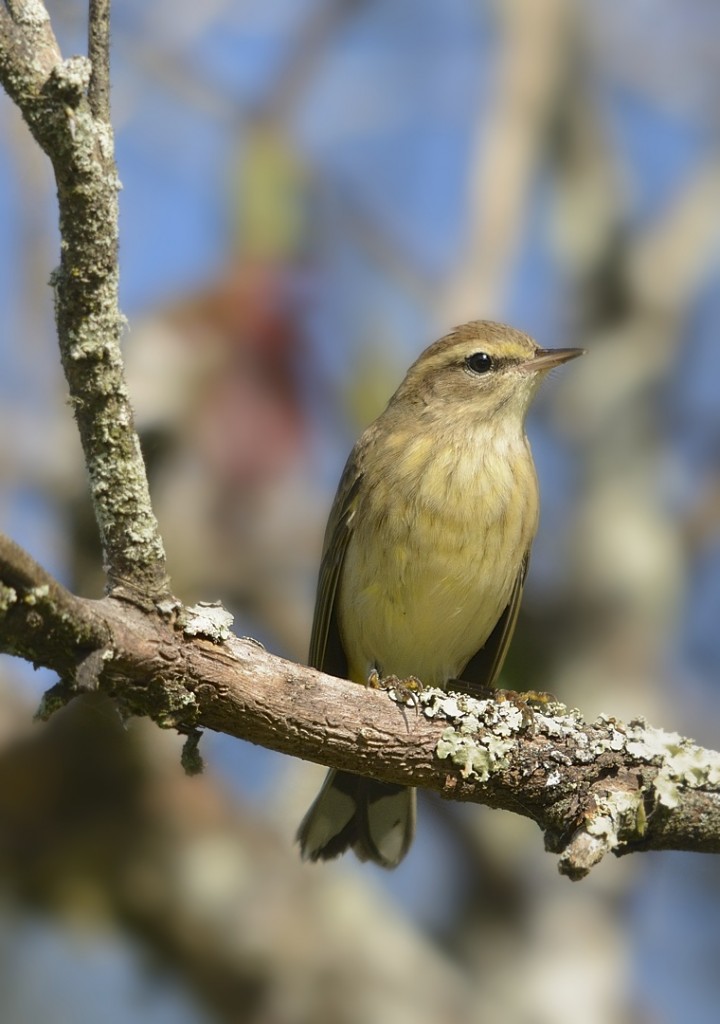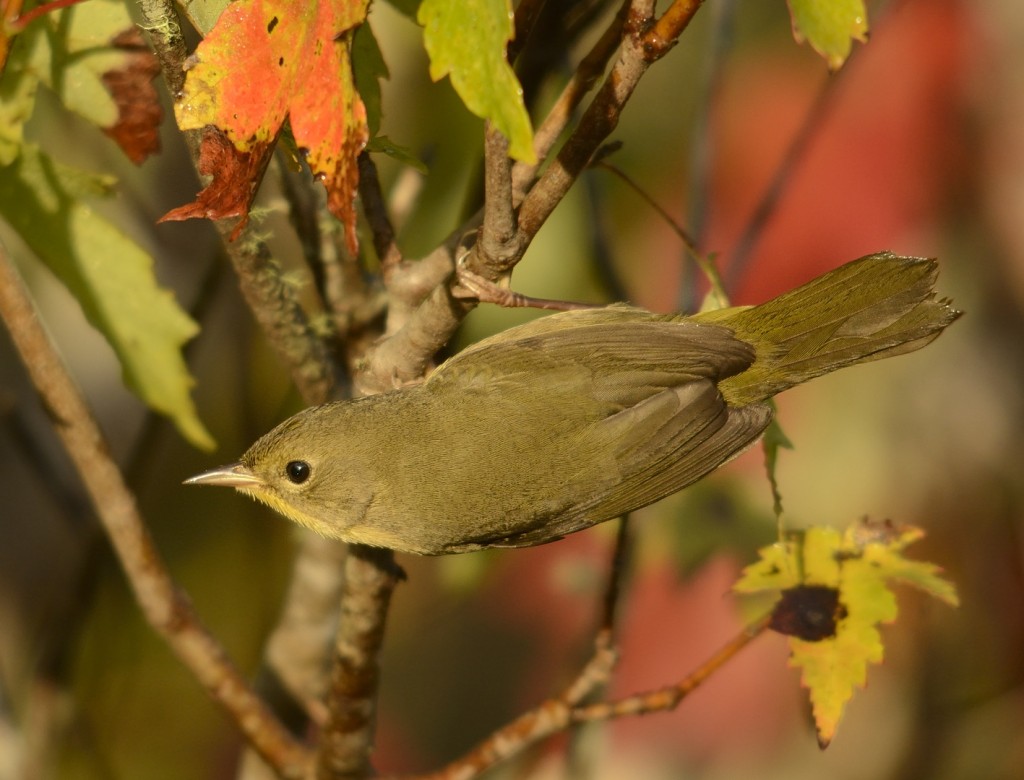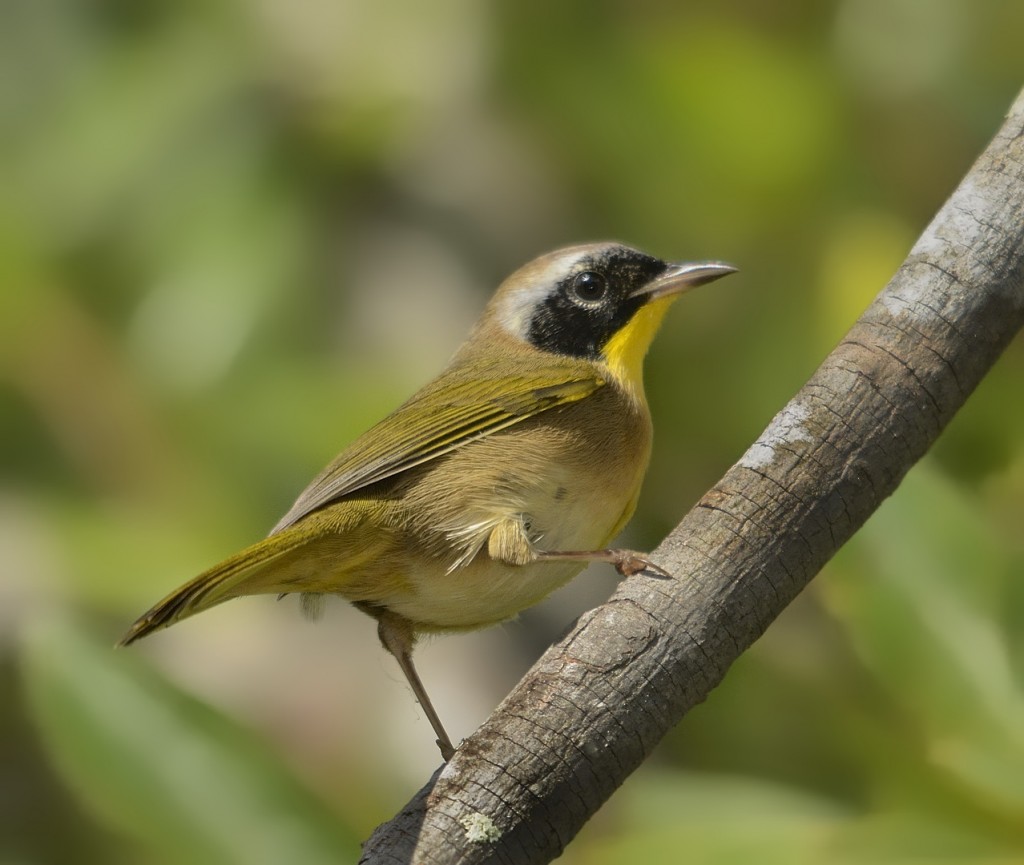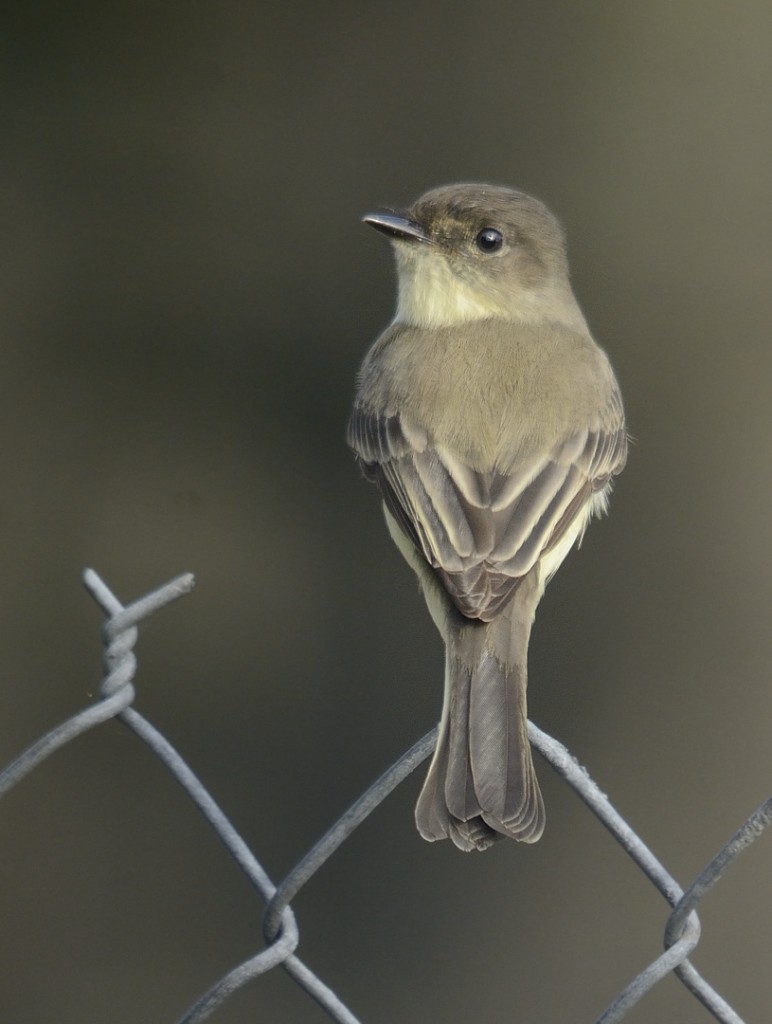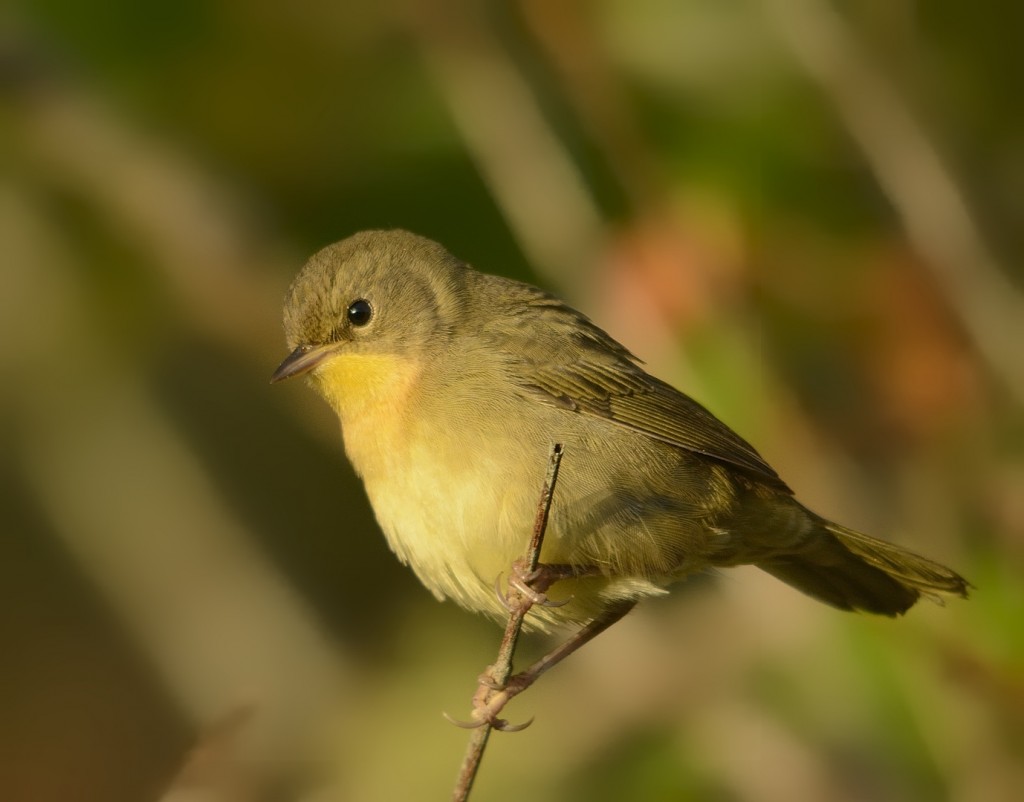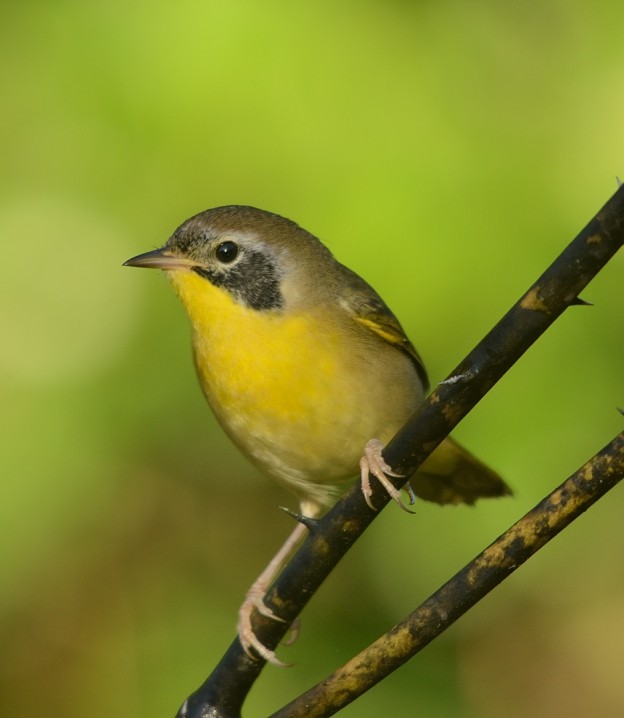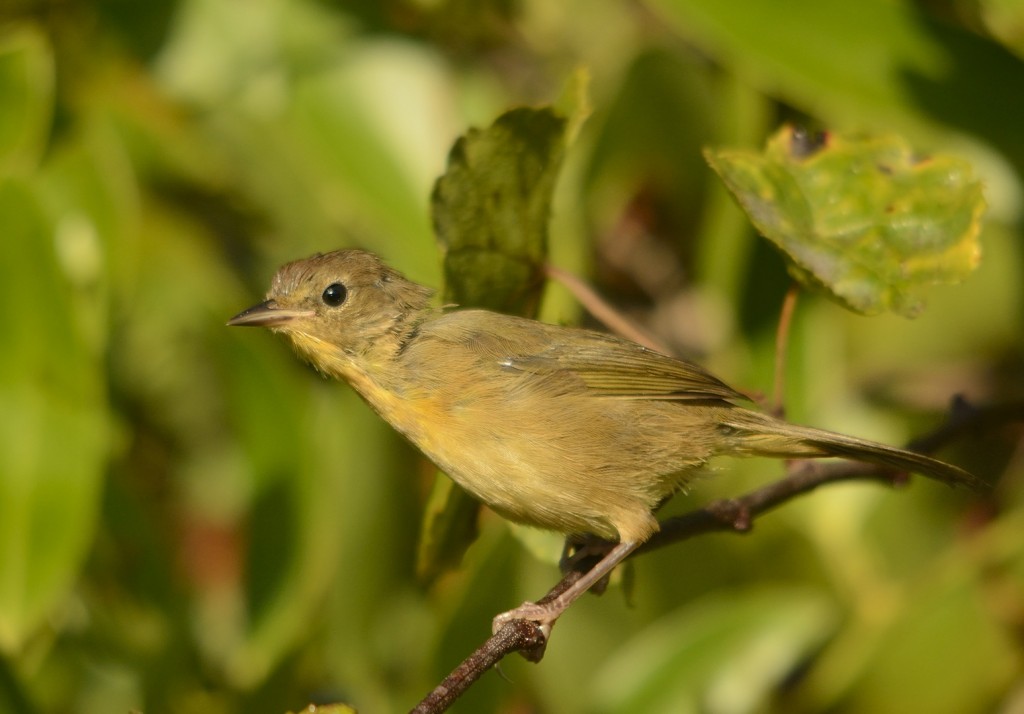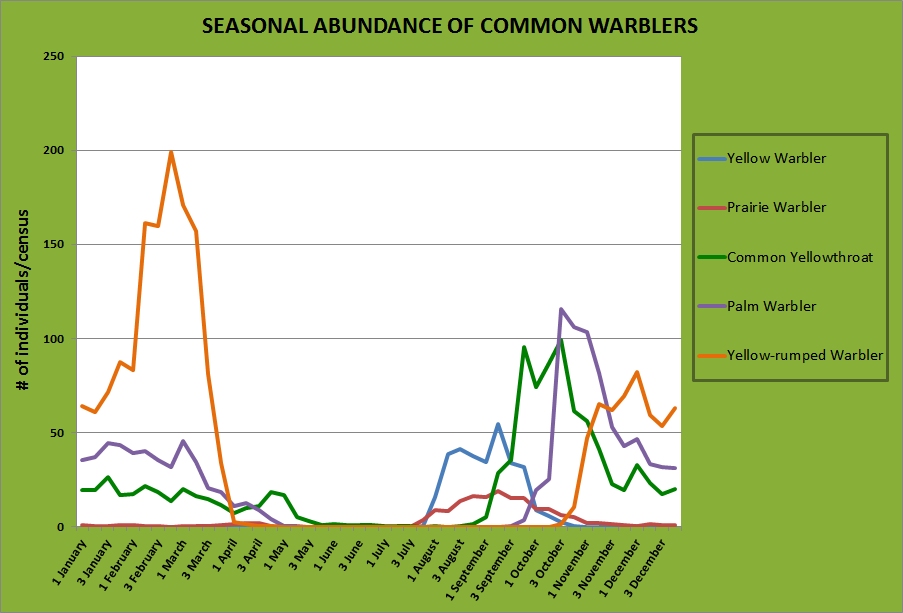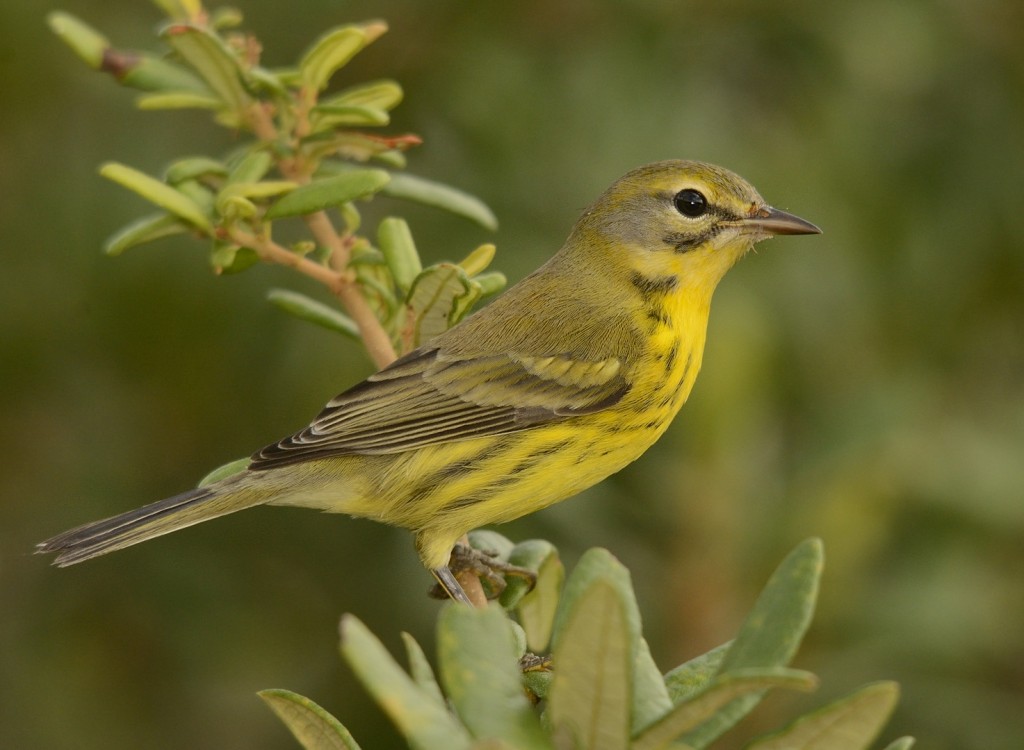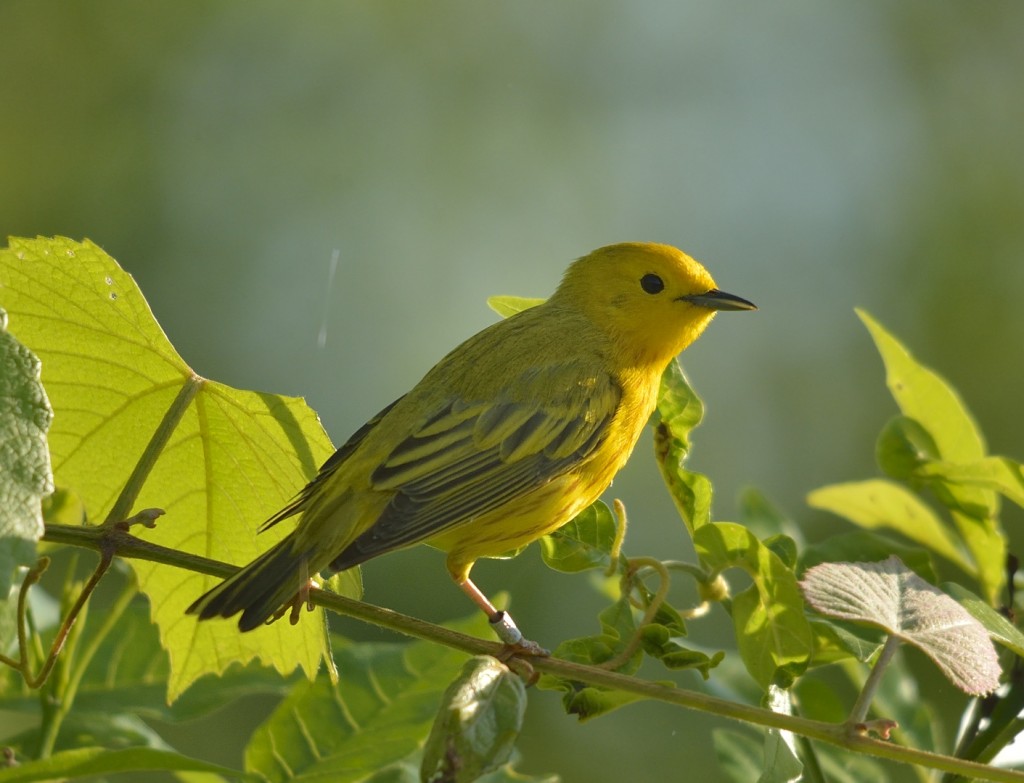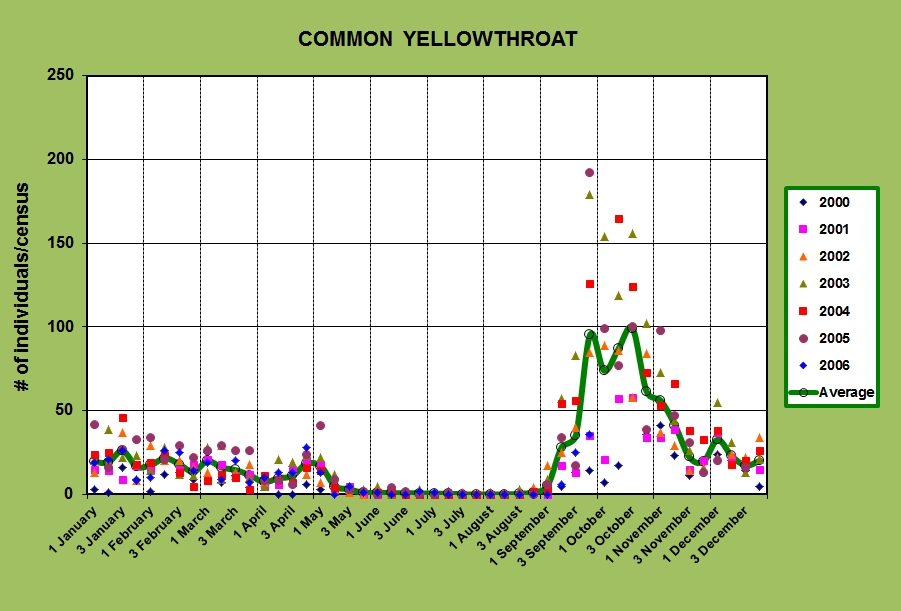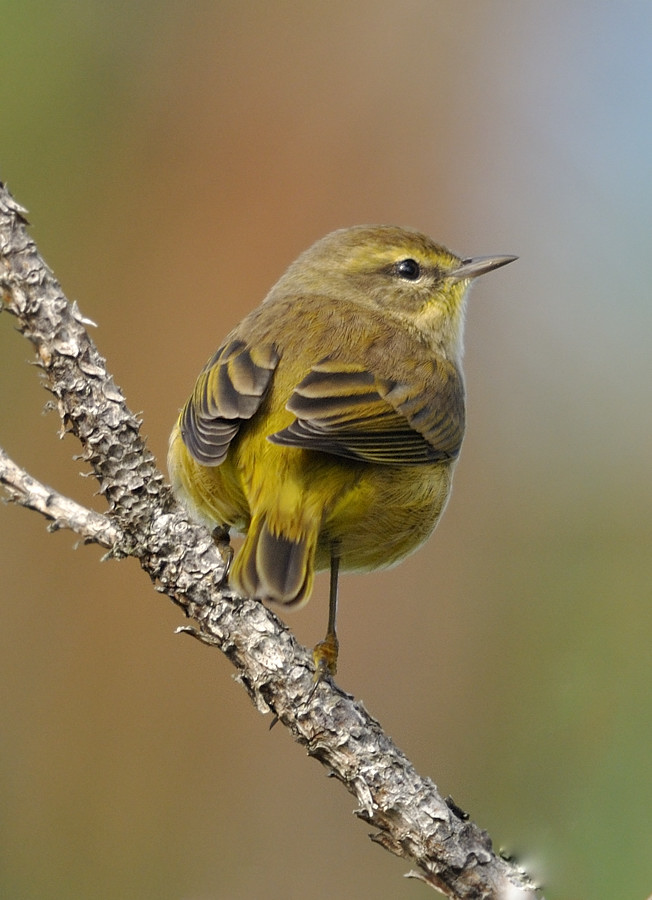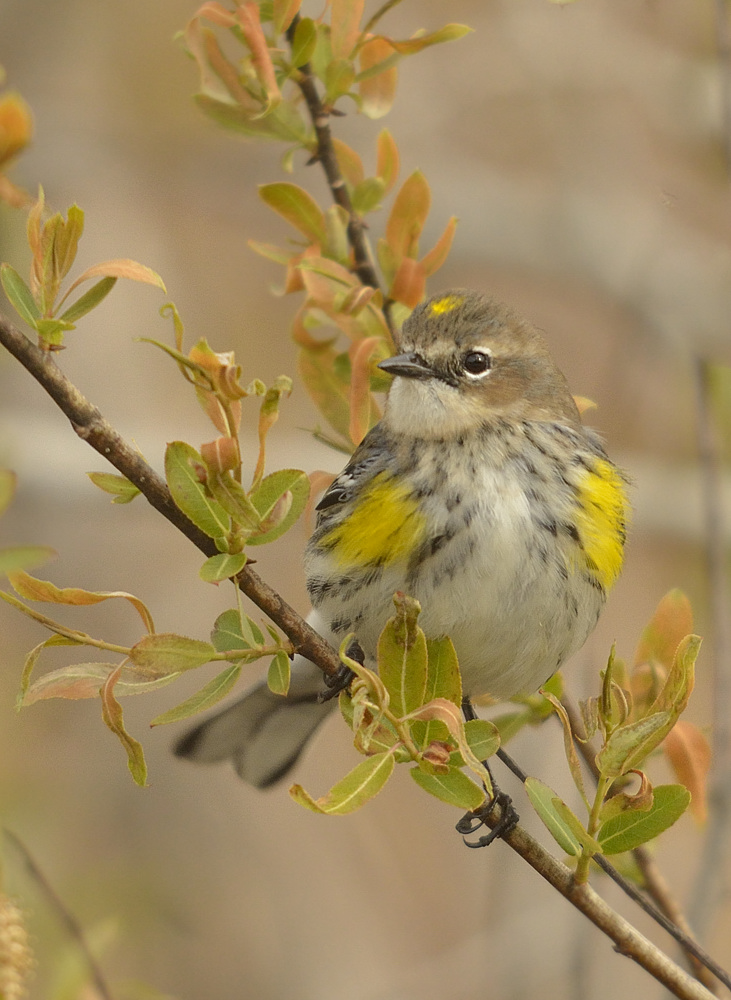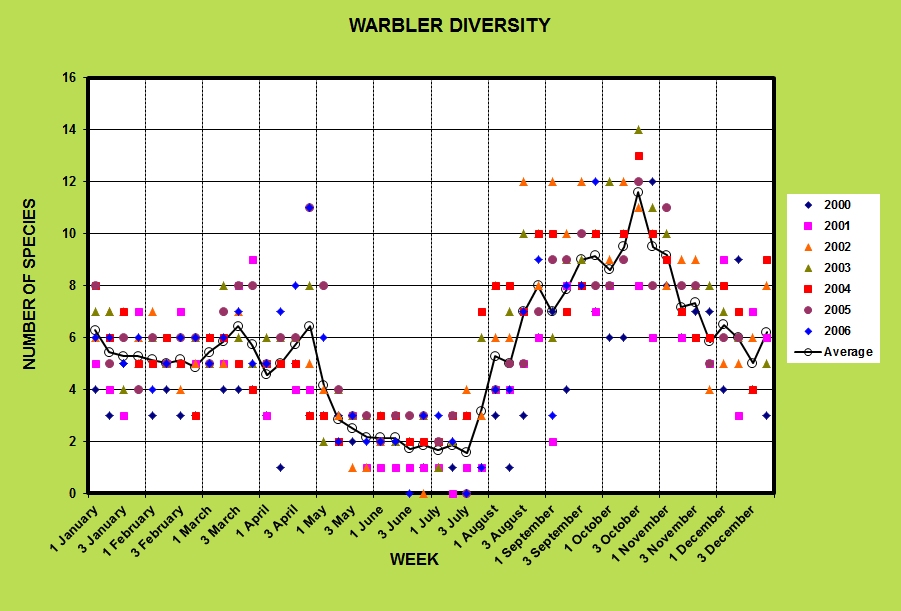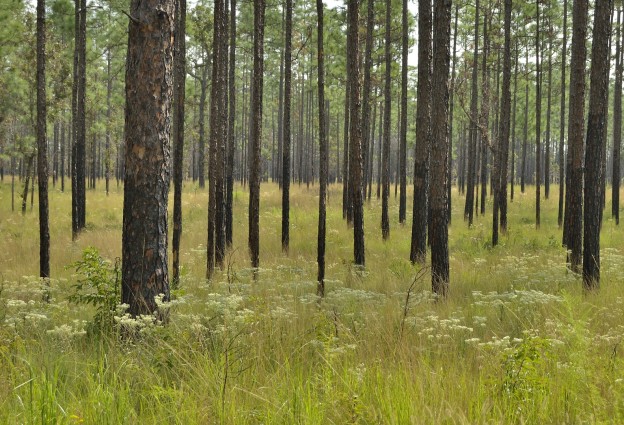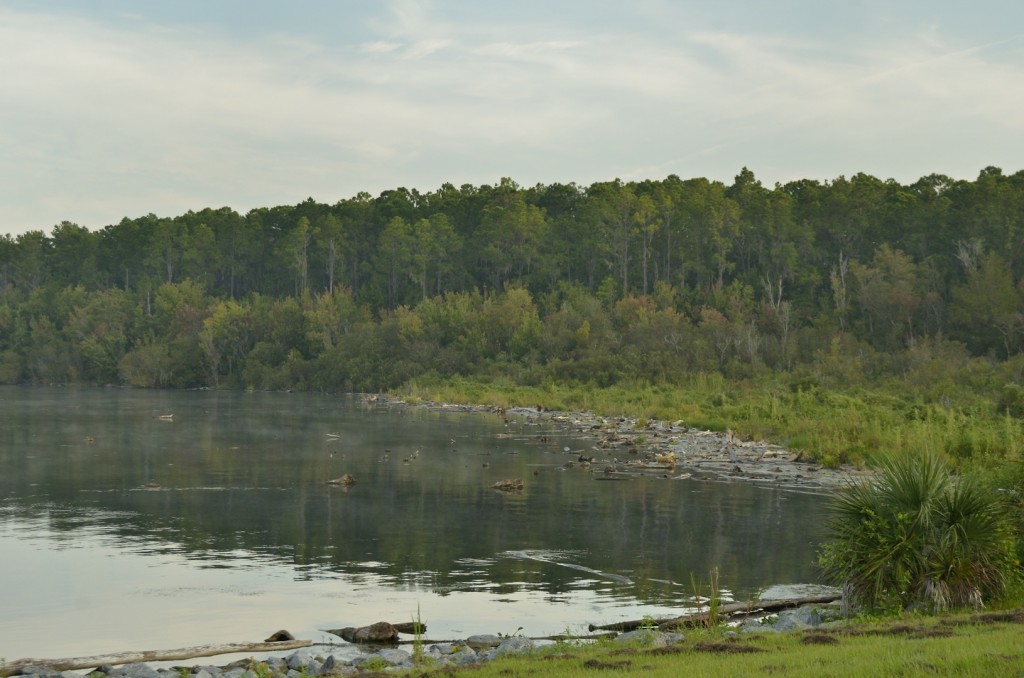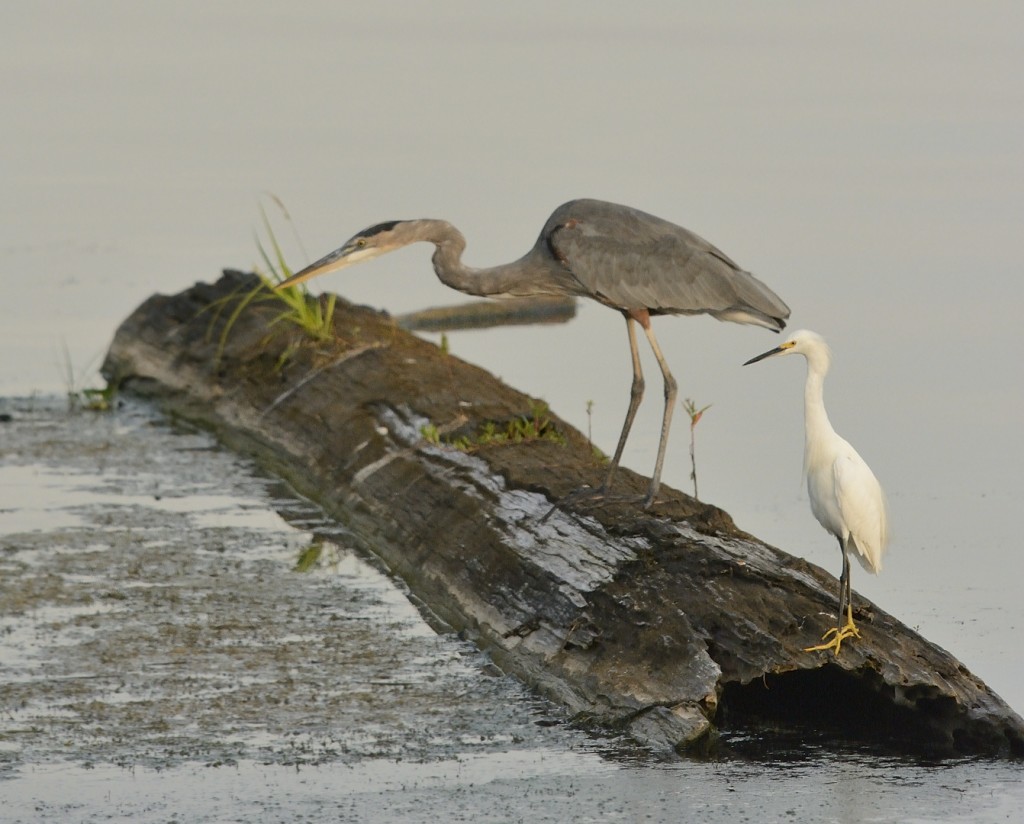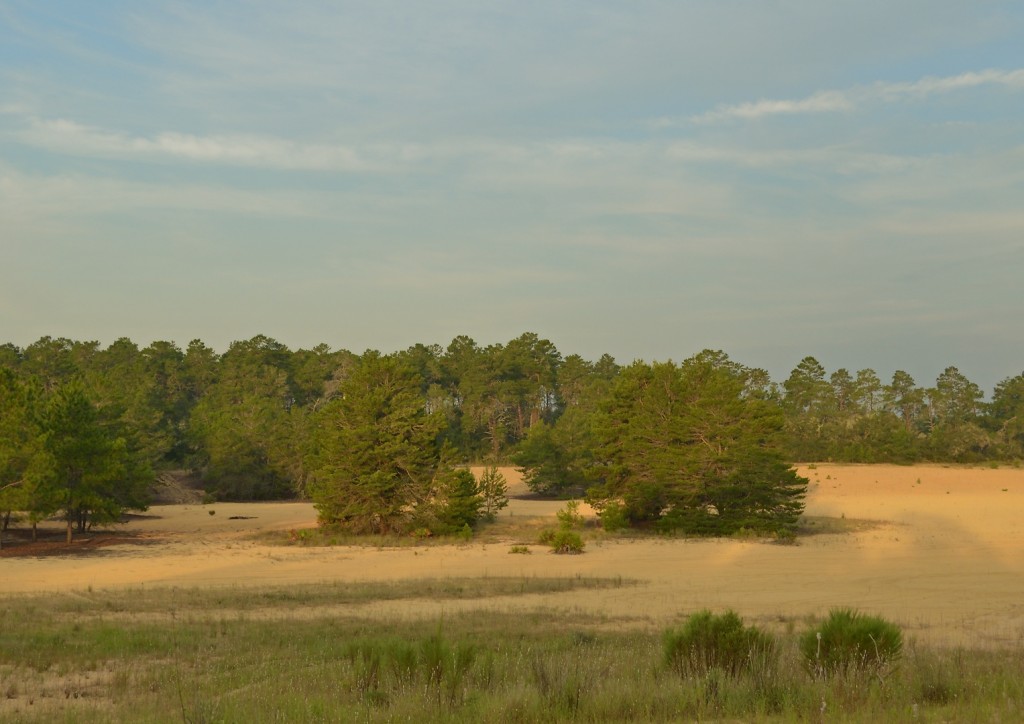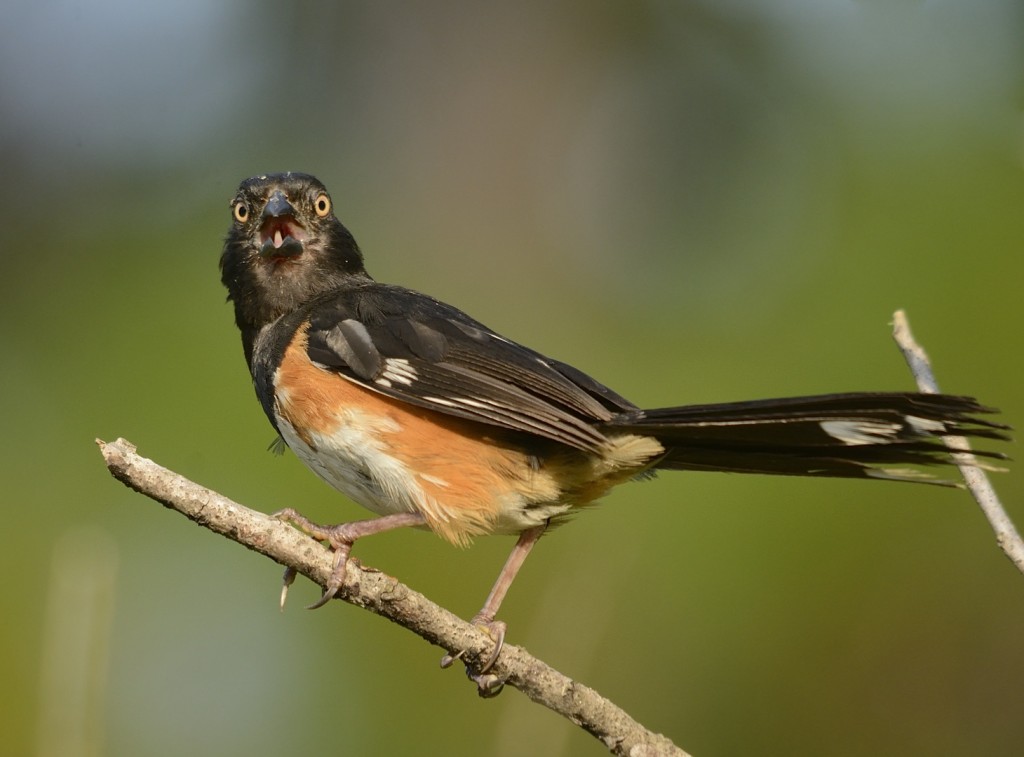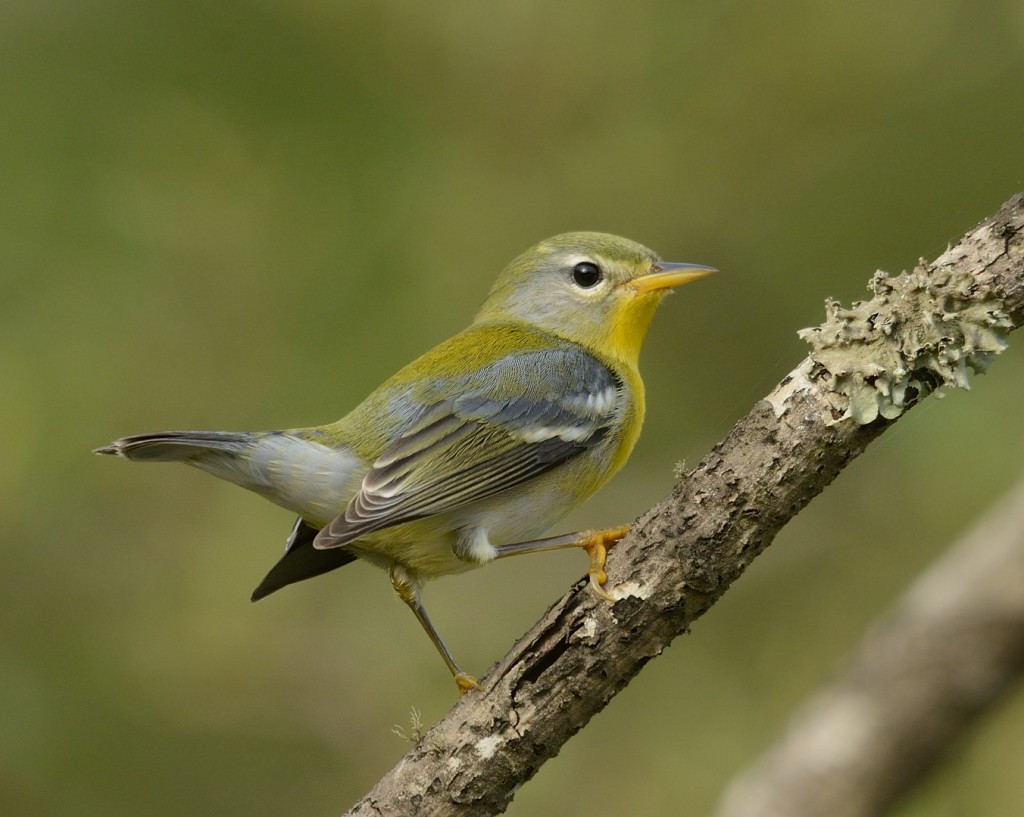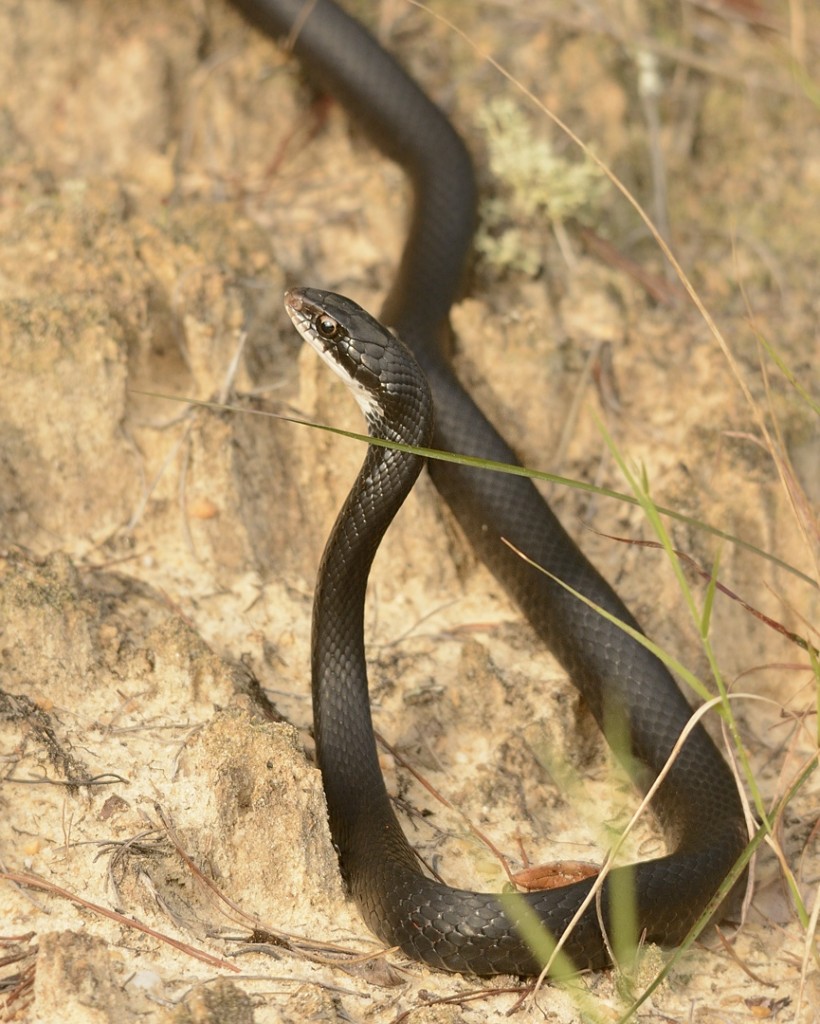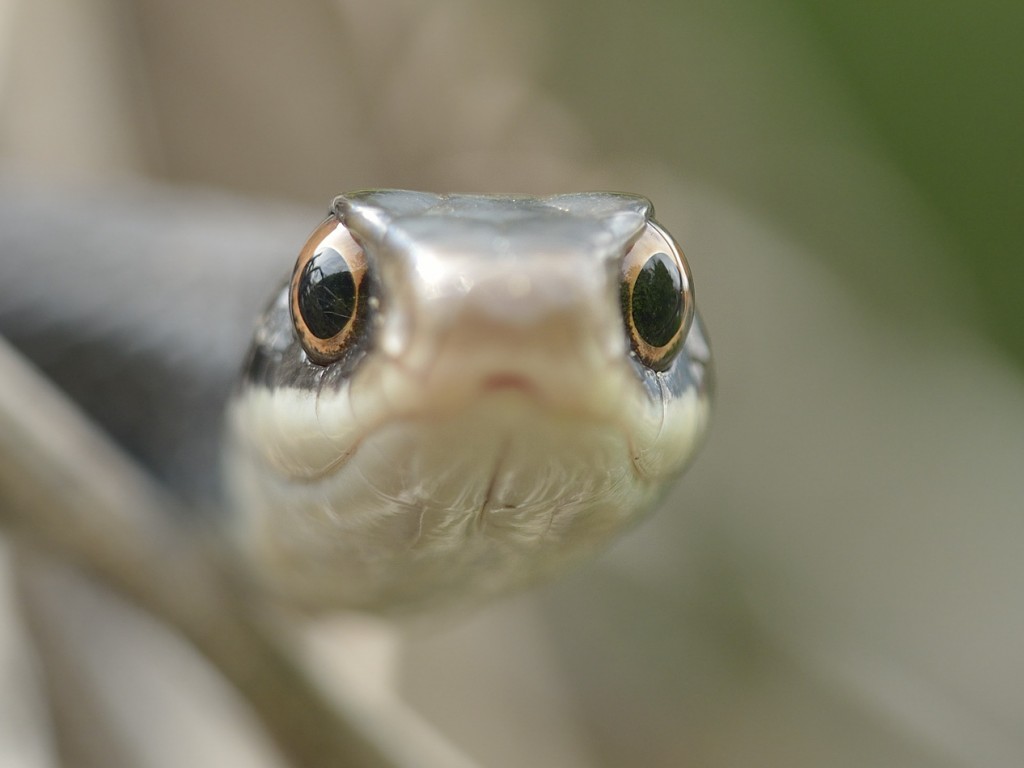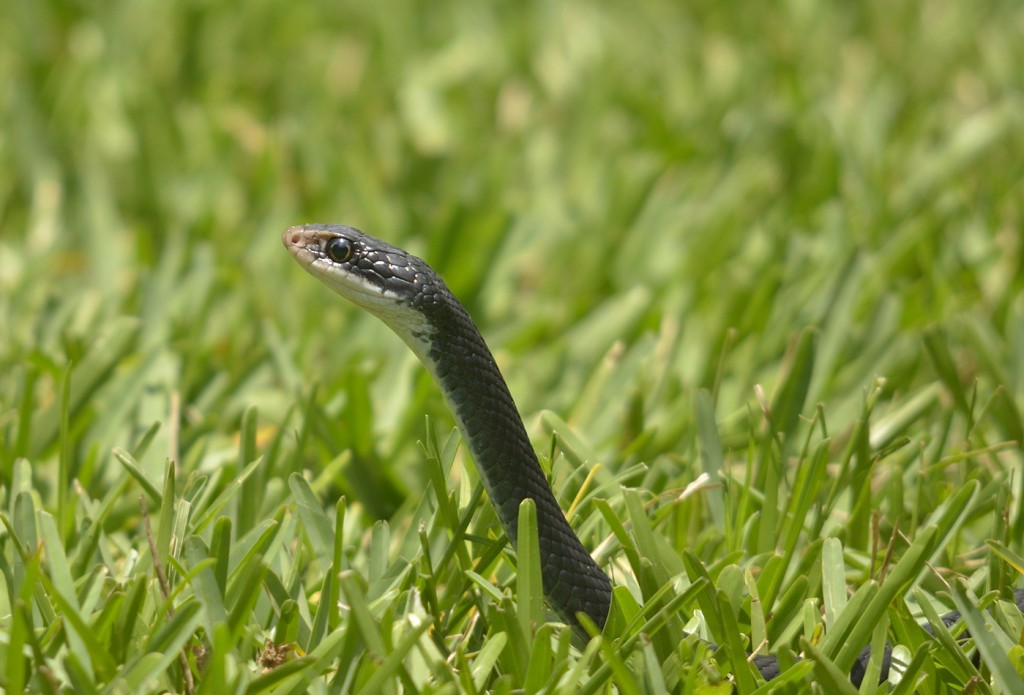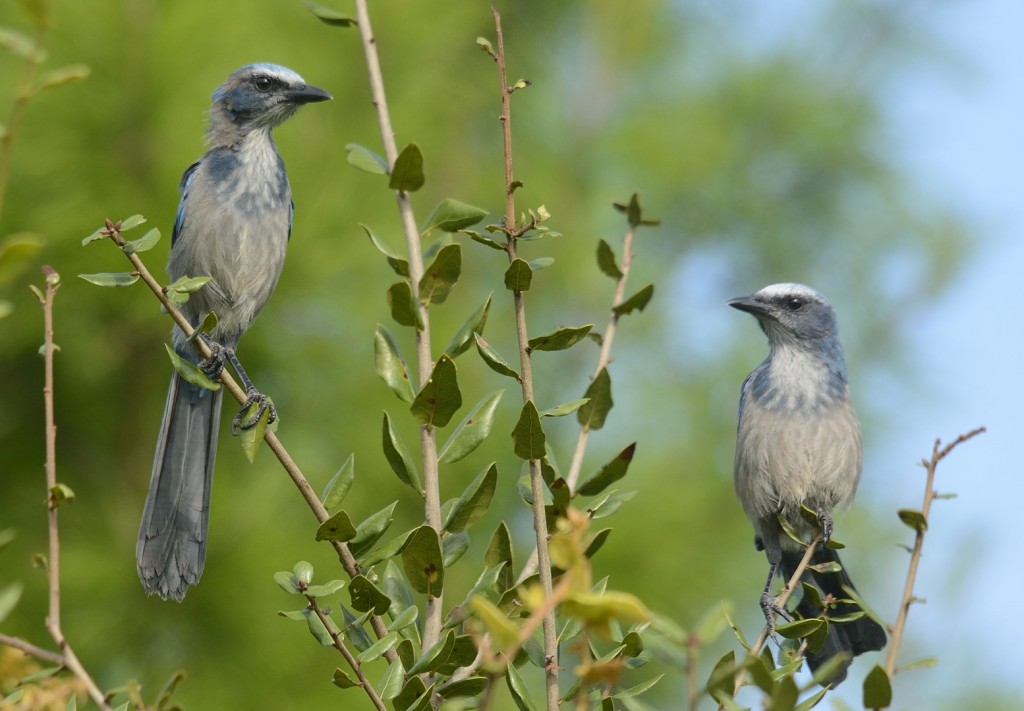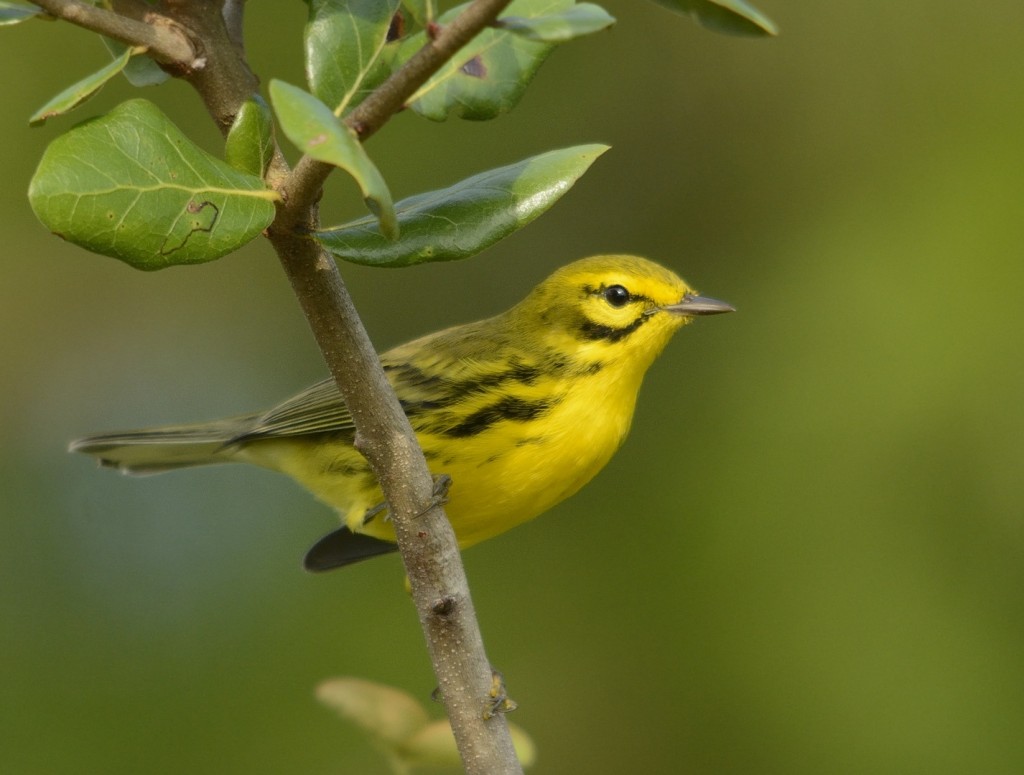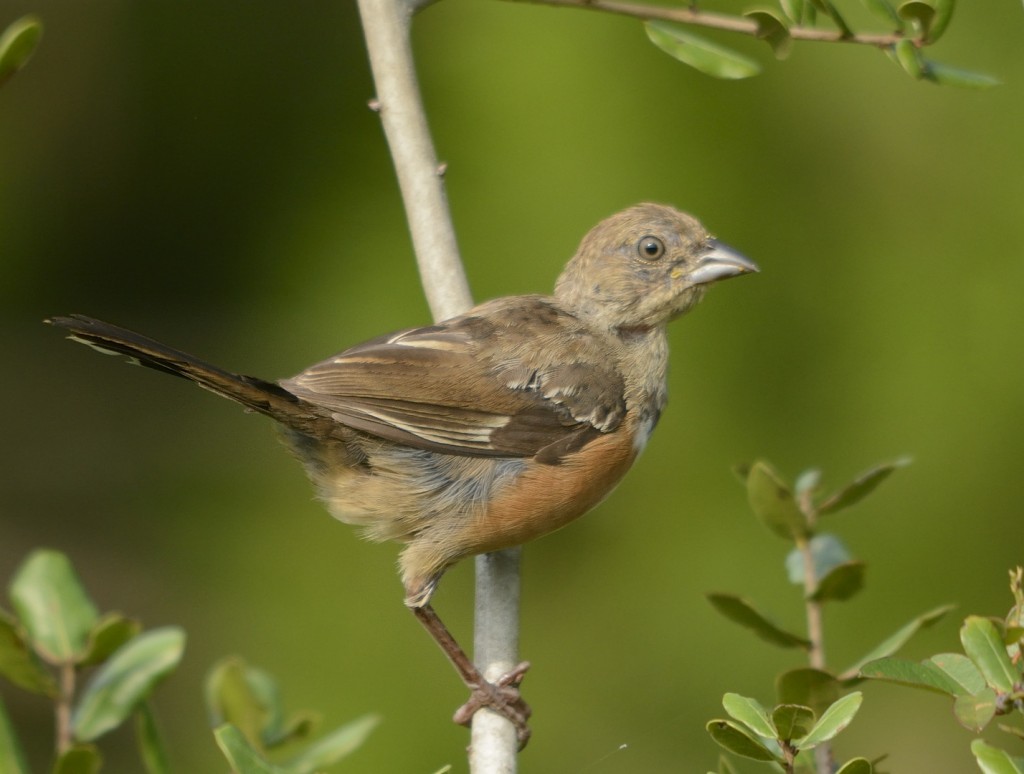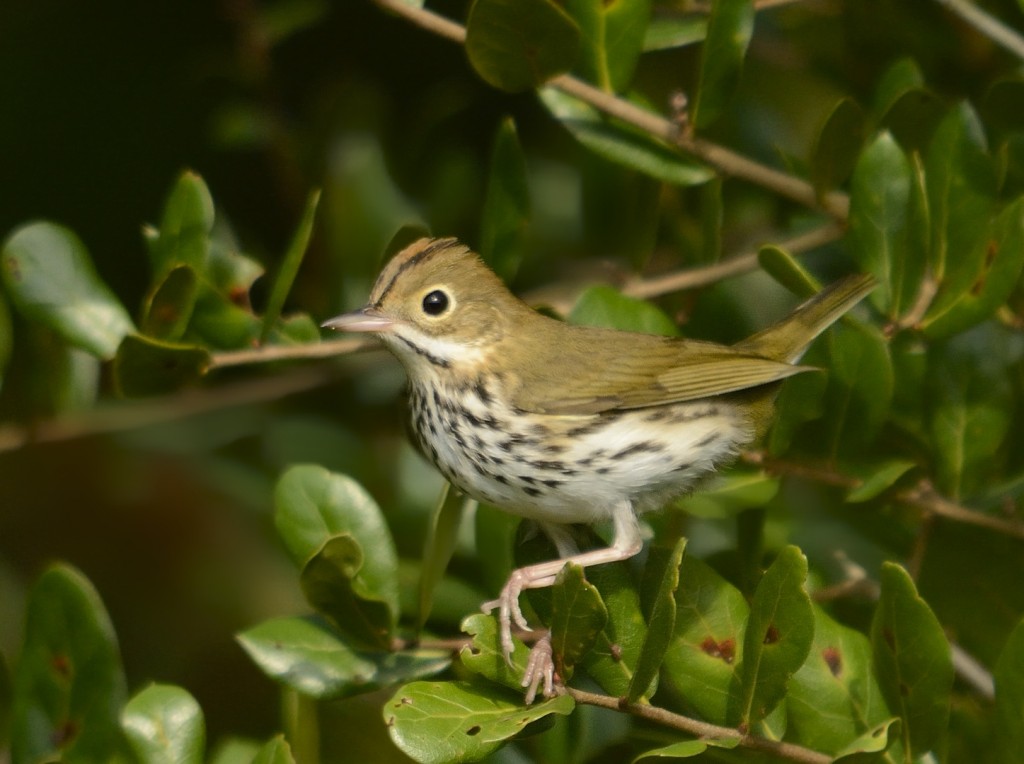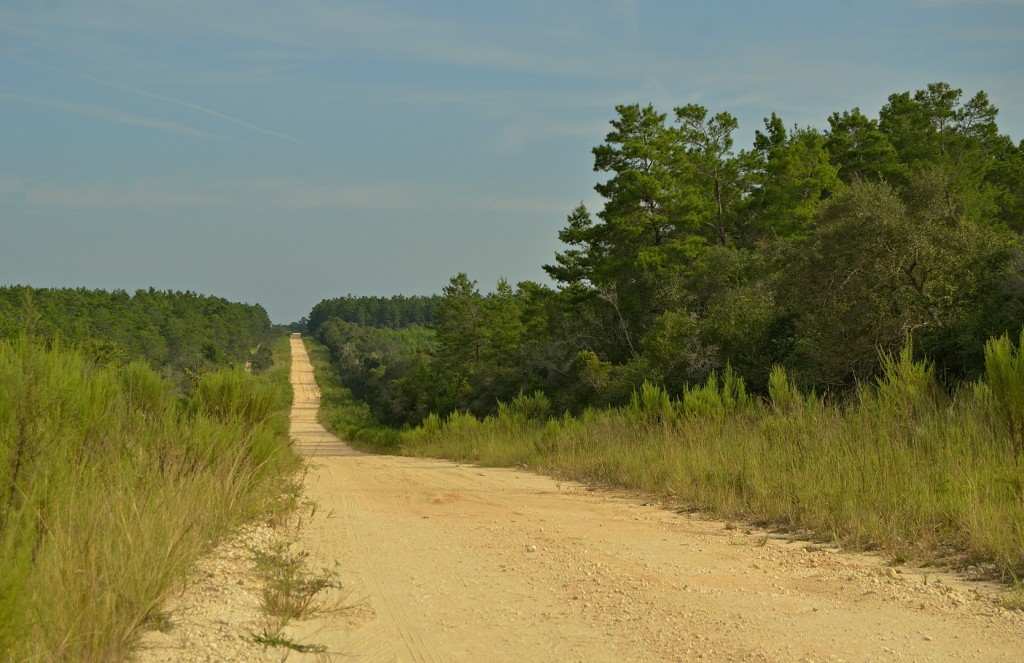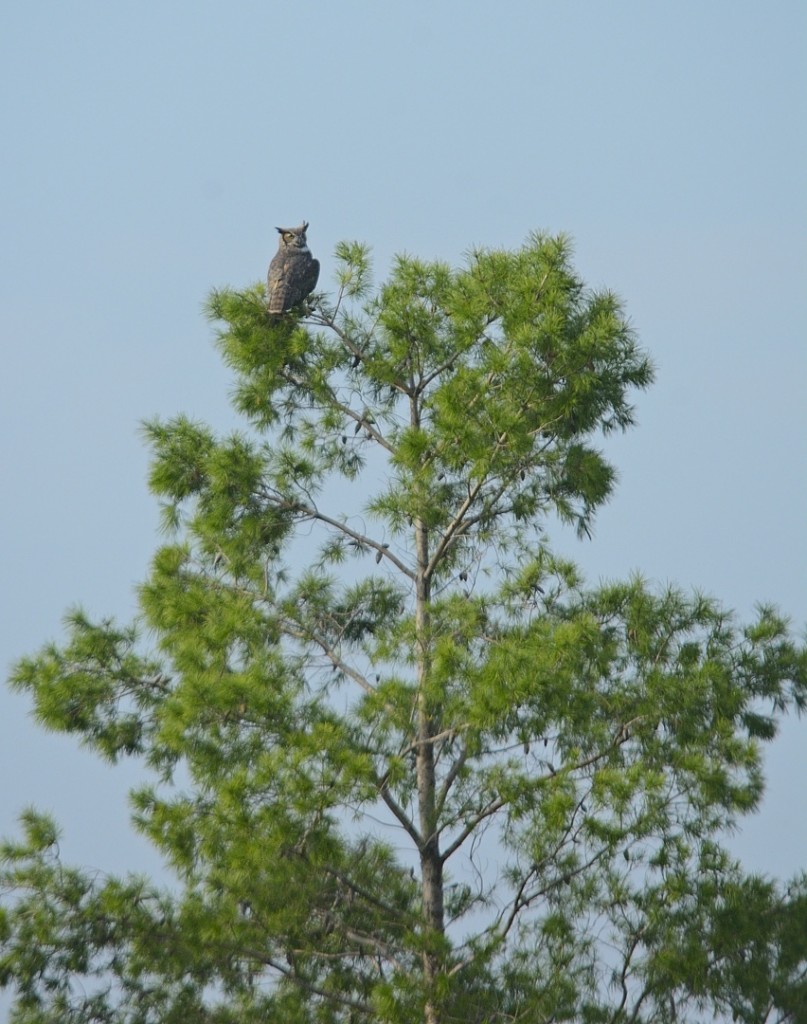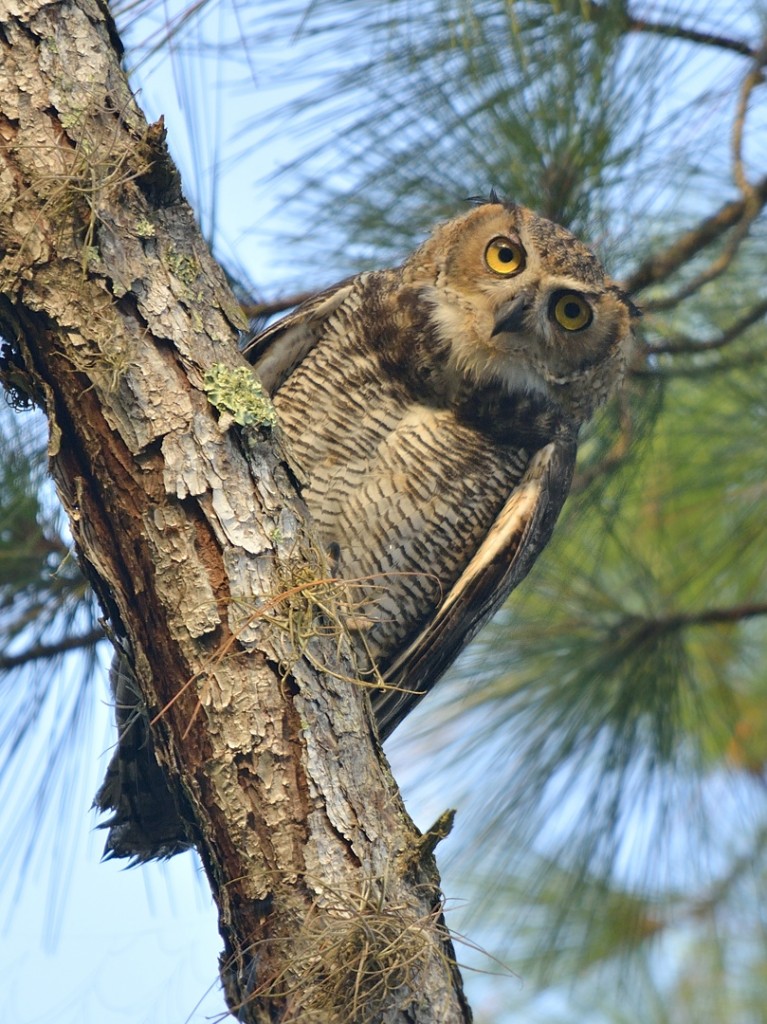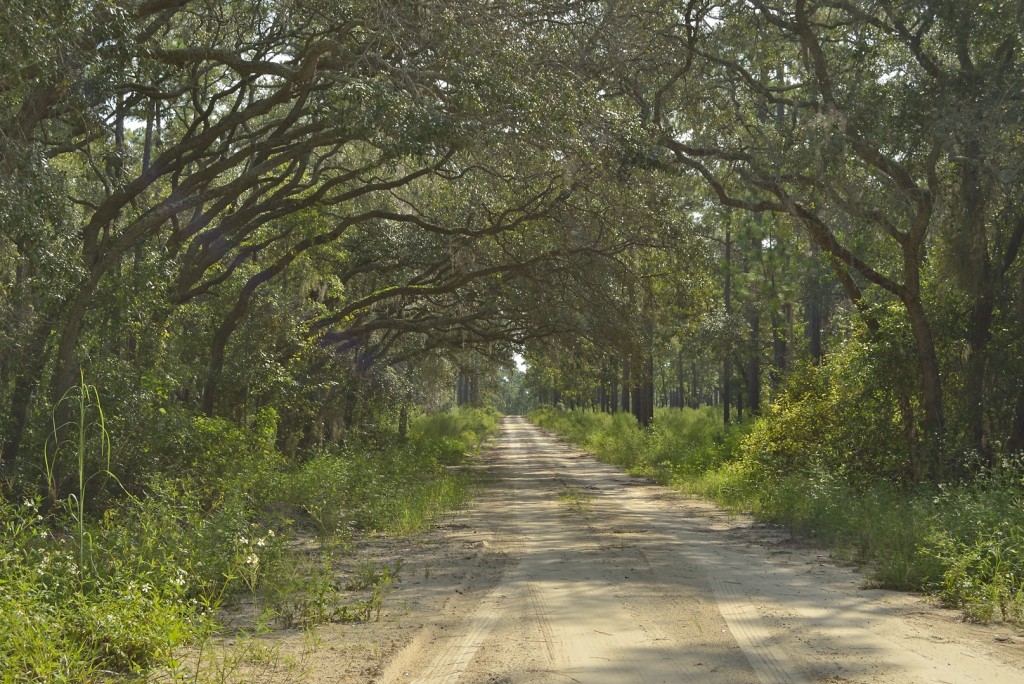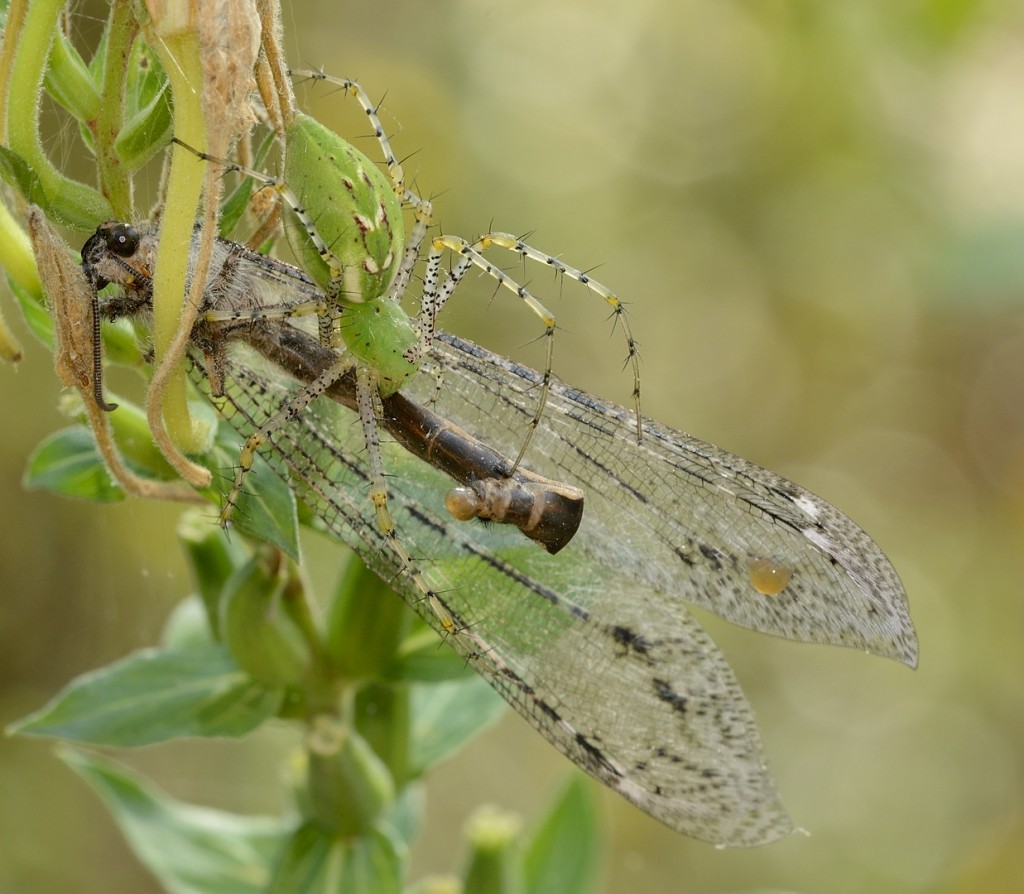October 20, 2013
Most avid and responsible birders and bird photographers have two sometimes conflicting goals: 1) to see (and photograph) as many cool birds as possible, and 2) to minimize any harmful impacts that the pursuit of their goals might have on their subjects.
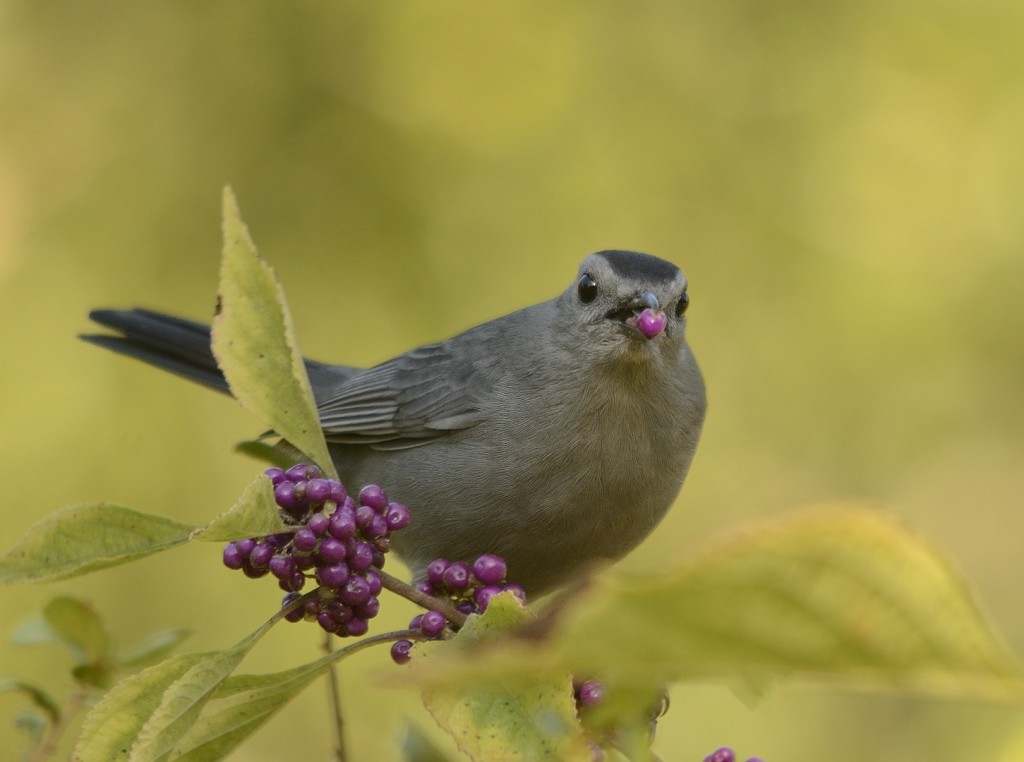
Although this gray catbird was attracted initially by mobbing call playback, he decided to have a bite while checking out the commotion.
Among bird aficionados, there has been a long-running and sometimes acrimonious squabble over the impact of using recorded vocalizations (playback) to attract birds for viewing and photography. I’ve been using playback in various forms for more decades than I’d really care to tally up. Given that I consider myself an ethical birder, obviously I have strongly-held feelings about this issue. The crux of the controversy is whether the use of playback to attract birds, for whatever reason, has any significant negative impact on the birds being attracted. The standard argument against use of playback is that it might cause birds to expend limited time and energy resources responding to recordings, which in turn could reduce their ability to deal with more pressing biological needs, such as feeding, finding a mate, or taking care of offspring. Phrased from an evolutionary perspective, the question is does playback somehow reduce the fitness (lifetime reproductive success) of the birds that respond? If so, it is a legitimate cause for concern, and perhaps even regulation and restriction of playback by birders. Unfortunately, there is no hard empirical evidence that this is the case from any properly executed scientific study. Both sides rely nearly exclusively on anecdote to make their case.
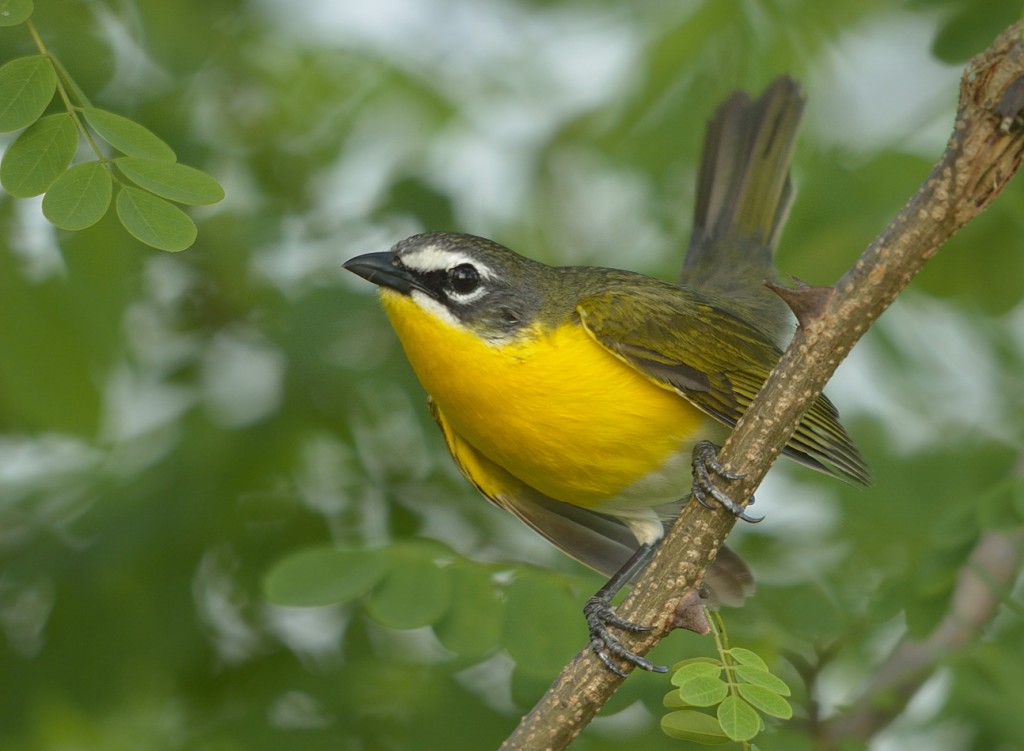
I used territorial playback to entice this yellow-breasted chat into the open for photographs a couple of years ago. This bird gave me about 5 seconds of exposure before he lost interest and went back to what he had been doing.
The debate received an injection of hard evidence last week. Three ornithologists published a peer-reviewed paper in the on-line journal PLOS One reporting the results of a rigorous study on two species of Ecuadorian birds (Rufous Antpittas, Grallaria rufula, and Plain-tailed Wrens, Thryothorus euophrys) and their short-term response to playback of species-specific vocalizations. This study has been widely reported (and misreported) in the popular scientific press. Here’s the main finding of the study extracted by the popular science writers at ScienceDaily, a respected and generally accurate website: the study “shows that playbacks do have potentially negative consequences, especially in terms of birds’ energies.”
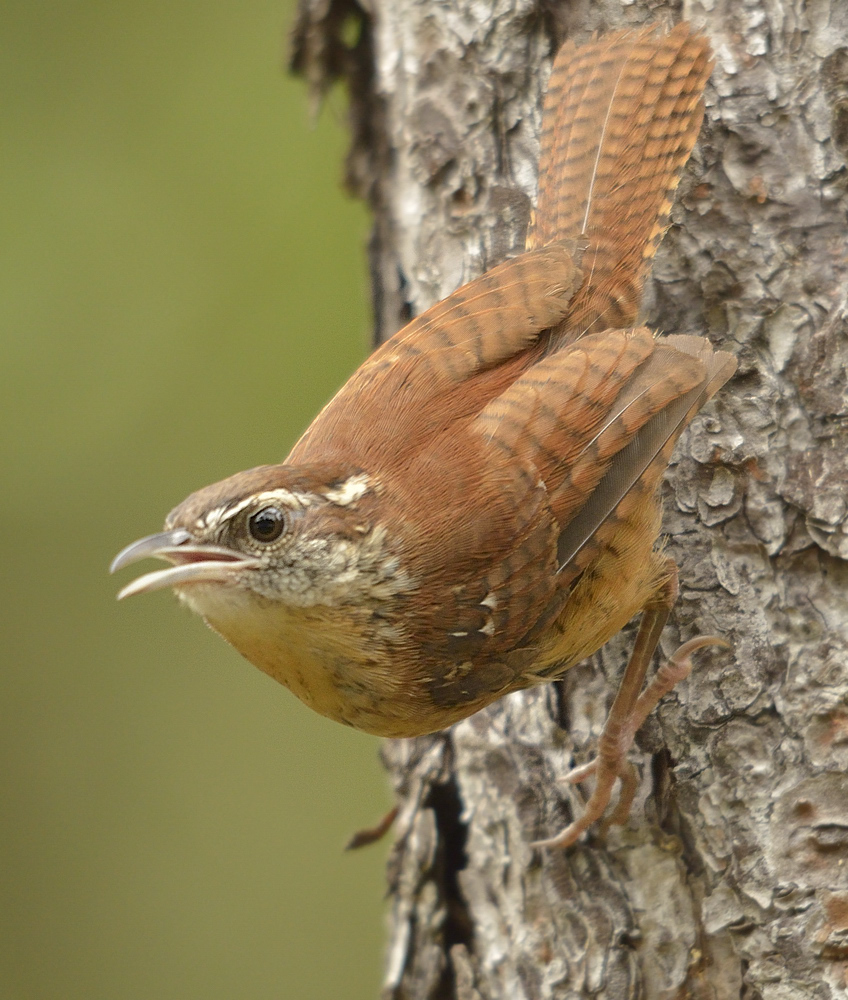
Carolina wren, Thyothorus ludovicianus, a close relative of the Plain-tailed Wren studied in the PLOS One paper. Carolina wrens are strong responders to mobbing and territorial playback; they are one of the “ringleader species” in many mobbing flocks.
The problem I have with reporting this as a major finding of the study is that it just ain’t so. The data reported in the study provide no evidence whatsoever for negative impacts of playback on these two tropical bird species. There are no data presented here (or anywhere, as far as I know) dealing with the energetics (and their adverse consequences) of response to playback. That is pure, unadulterated speculation, without even ancillary evidence presented to support such extrapolation.
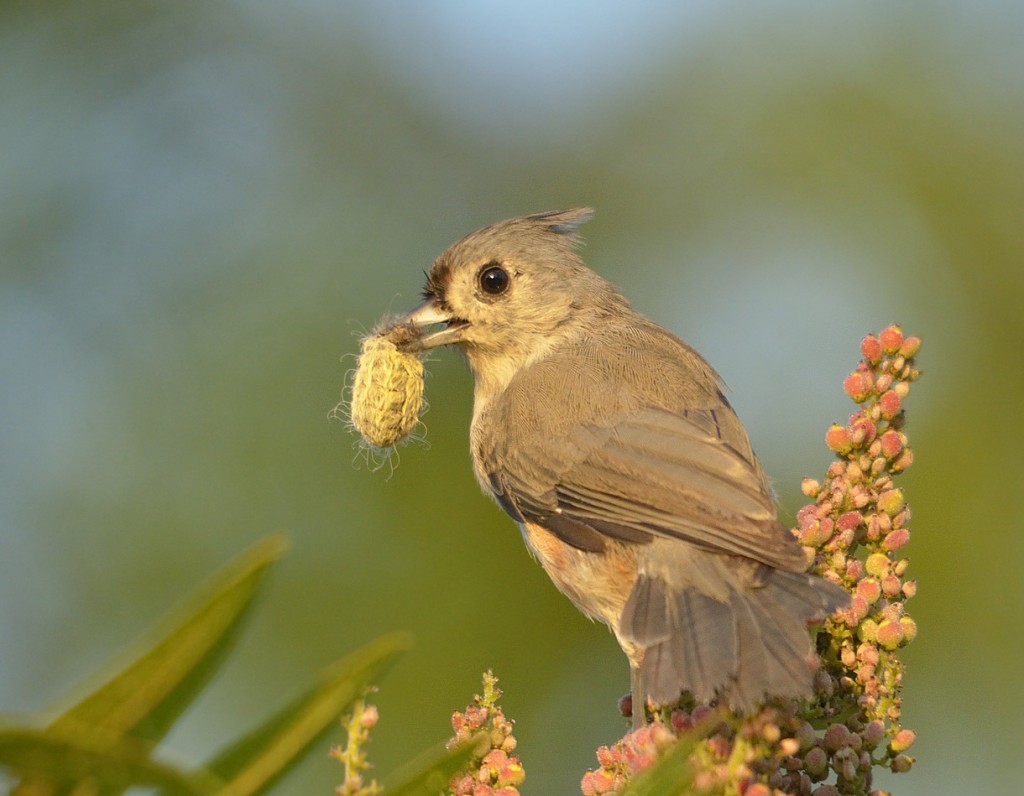
Do birds have to abandon other necessary activities to respond to playback? Not this titmouse, who snagged a big juicy puss-moth caterpillar (Megalopyge sp.) while looking for the predator that wasn’t there.
What the Ecuadorian study did show, quite convincingly, is that these two bird species are attracted by playback, and they alter their vocal behavior by singing and calling more frequently after playback. Well, that’s a real shocking conclusion. Birds do respond to playback. Who knew? Only millions of researchers, birders, and bird photographers who have used playback since recording and playback equipment made such manipulation of bird behavior possible. It’s why we do it. However, the PLOS One study provides no data WHATSOEVER that this change in behavior has any adverse consequences to the birds. In fact, what their data show for the wrens is that repeated playback to the same birds over a 12-day period resulted in a precipitous decline in response. In behavioral jargon, the birds habituated to the stimulus and pretty much stopped responding to playback entirely. They learned. Birds, as it turns out, are quite good at learning. In the authors’ own words in their last paragraph, they state “This result suggests that playback could negatively affect species if they become stressed, expend energy, or take time away from other activities to respond to playback. By contrast, the habituation results we present suggest that frequent birdwatchers’ playback may have minimal impacts on wren behavior”.
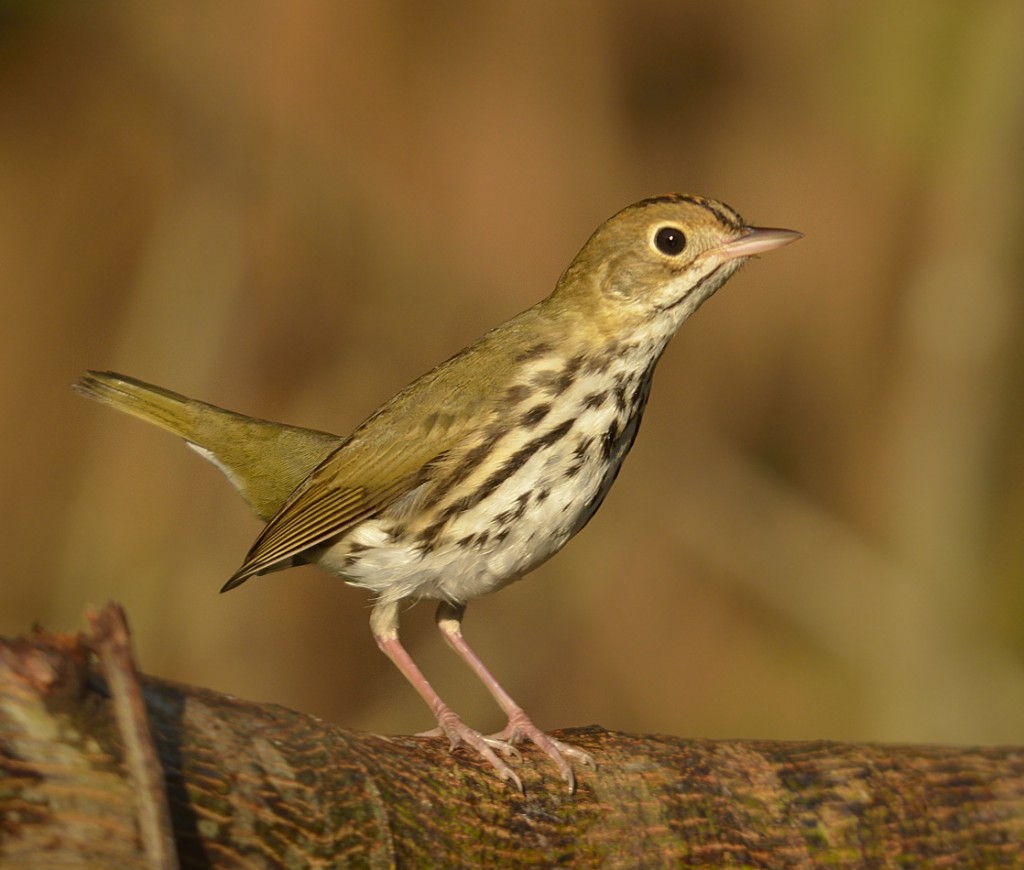
An ovenbird lured to an open perch by mobbing call playback. This bird doesn’t look stressed or frightened to me – it is intensely curious. I think he’s digging the moment.
In other words, their study doesn’t really allow any conclusions at all about the long-term effects of playback on these species, but what data they do have actually support the idea that it’s negligible. To conduct such a study looking for a long-term effect of exposure to playback and document any effects it might have on mating success or overall reproductive fitness is an order of magnitude or two more difficult than documenting a short-term response to playback. More studies like the PLOS One study need to be done, but let’s not kid ourselves that they really tell us anything meaningful about long-term impacts. They show that birds do respond to playback. No Nobel Prize to be had for quantifying that, though.
In fact, one pair of wrens in the study built a nest 10’ away from the playback speaker. As anecdotal evidence goes, that’s a pretty strong piece of information supporting the minimal impact interpretation. Other published studies on other species have even suggested a positive effect in some cases. A study of Black-capped Vireos, a rare, local, and highly-sought species by birders, showed that repeated playback of vireo song in an area actually attracted more vireos to that site, and some of these birds nested in the area to which they were attracted and increased the local population. Negative impacts of playback? I’m not seeing it. Which is not to say that it can’t or doesn’t occur; there simply isn’t any hard scientific evidence to support it.
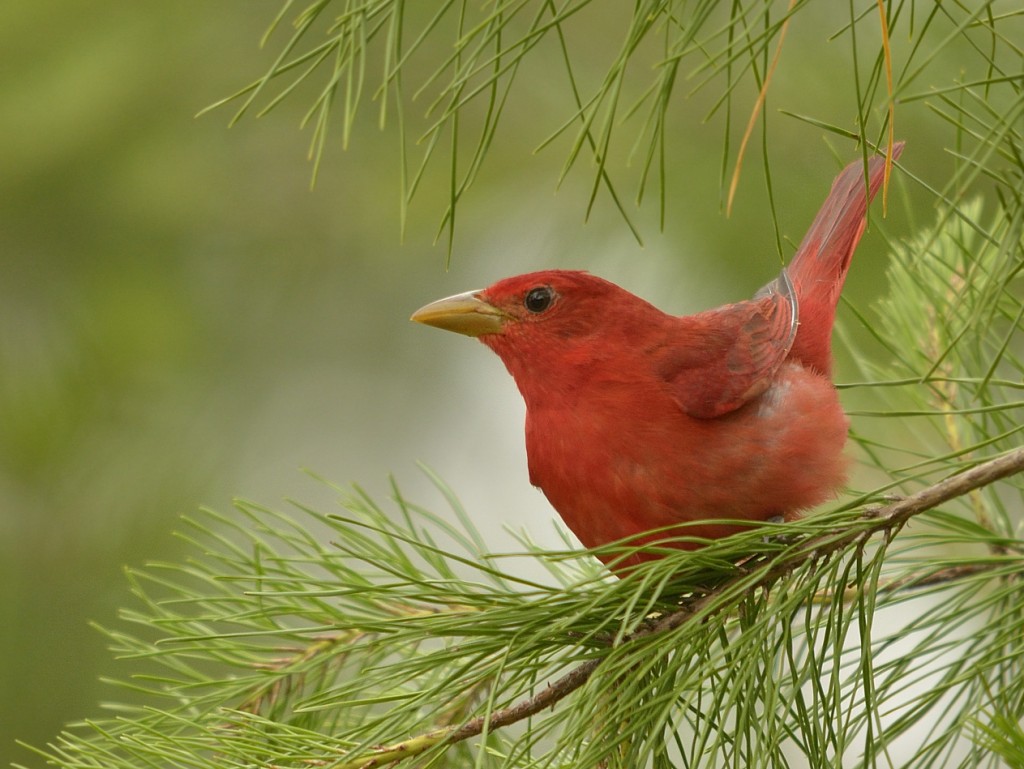
The Lake George summer tanager on my first visit in April. This is the tanager who graced me with his very near presence and a brief conversation. If only I knew what he really meant by “pituck”.
But anecdotal evidence? Everybody has anecdotal evidence. I’ll share some of mine. On April 14 of this year I found a territorial male summer tanager in Lake George State Forest, and he responded strongly to playback by close approach and repeated flyovers to and from nearby perches. Not all individuals respond this strongly; my wild-ass guess across species is that maybe only one out of every 5-10 territorial males to which I broadcast recorded vocalizations actually responds by approaching and singing back. Most often I use playback from my car, which acts as a blind of sorts as long as I minimize any sudden movements. This particular male actually landed on the window of my car, perhaps a foot away from my head, perched there for about 5 seconds, looked me straight in the eye and said “pituck”. He then turned and flew back to a nearby perch. It blew my freaking mind. I was in a state of extreme elation for the next hour or two. Being that close to a wild bird who is that close to me of its own volition is an intense and exhilarating experience, which I’ve experienced on a few other occasions when using playback. How was it for the bird? As I slowly drove away, I saw and heard him resume his circuit of singing perches he had been using before I began playback. For all I know, that bird was, in his own mind, one bad-ass mofo. He had confronted and repelled a bizarre and gigantic territorial interloper.
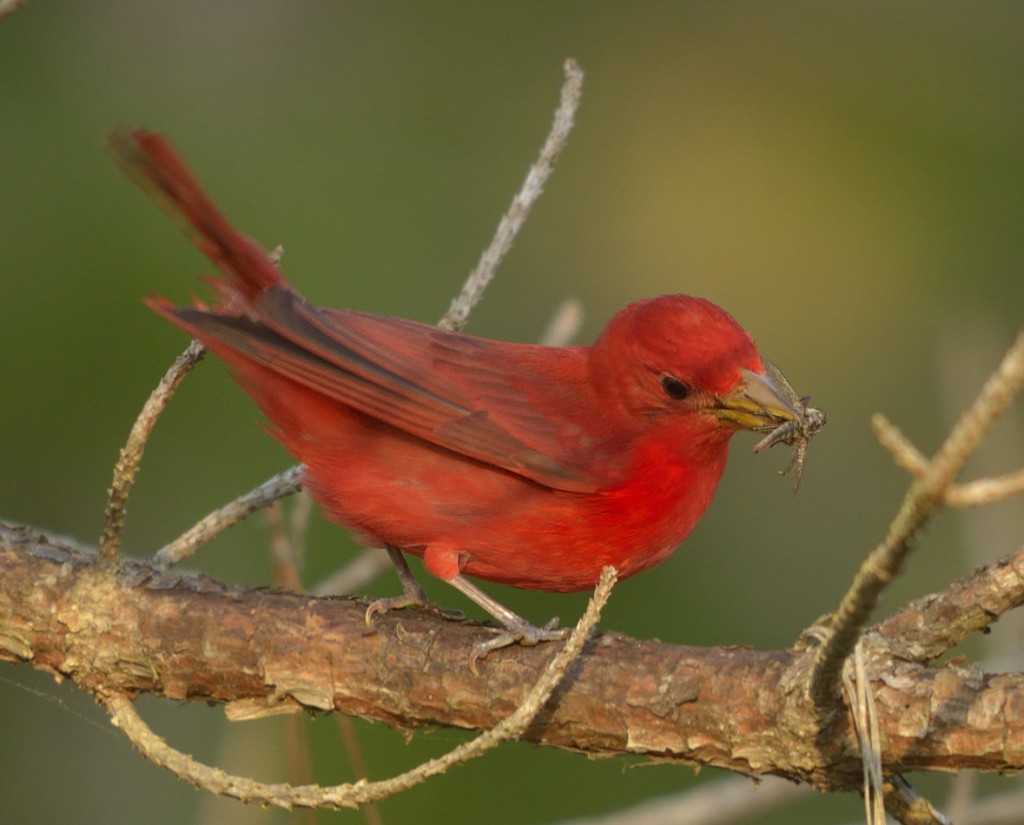
On my second encounter with this male, not only did he have a female following him, but he also caught several insects while he was responding to playback.
Fast forward to June 23, when I returned to that location with my buddy John Serrao. John was jazzed about the idea of seeing and photographing a male summer tanager at close range. I was a bit dubious about the likelihood of a strong response; it was much later in the nesting season, and in my experience, the most intense responses to territorial song occur early in the nesting cycle when the males have just established territory and are seeking a mate, and are intent on keeping other scumbag males away from their mate. Nonetheless, when we heard a male summer tanager singing in the area (almost certainly the same bird I’d worked over a month earlier), we tried playback. BAM. He was all over us like stupid on a Tea Partier. With one important distinction – this time he was being followed around by a female who seemed to be supporting his territorial defense. As I did earlier, we worked that bird for perhaps 5-10 minutes and left. Once again he resumed patrol of his territory and his habitual song perches as we drove away.
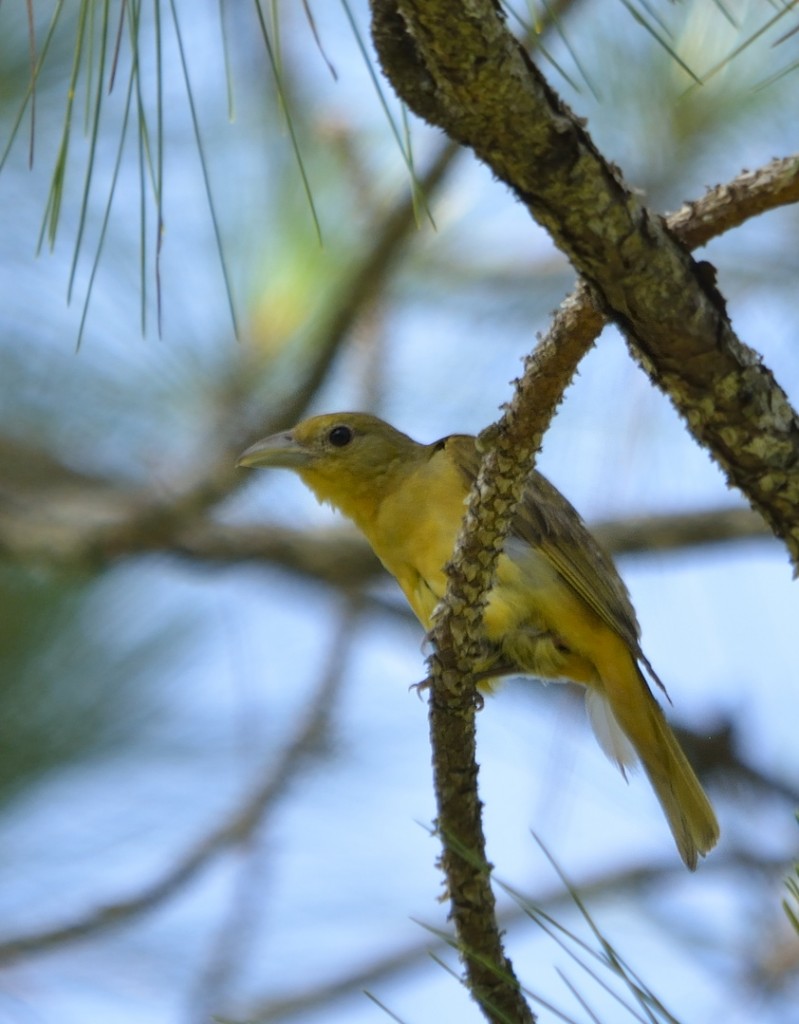
Summer tanager female who responded with her mate on my second encounter.
My conclusion from these encounters? The earlier bout of playback had no effect on the ability of this male to defend his territory and obtain a mate. Some research has shown that playback to territorial males can increase their serum testosterone levels, which typically show a huge spike during the breeding season for many male birds. In all likelihood, that results in an increase in the perceived dominance status of that particular bird, and may actually increase their ability to defend a territory and attract a mate. Egregious speculation? Maybe. But that seems to be the standard of evidence in the debate over playback and the ethics of using it to attract birds.
Here’s another side of the playback debate that’s rarely (like never) addressed: there is more than one type of playback, and more than one type of response. Conclusions drawn from studies on one class of playback response are probably completely inapplicable to other categories of response.
The category of playback most opponents focus on is species-specific playback of territorial song to breeding birds. Male birds of some territorial species (but by no means all) do respond strongly to such playback, and in some instances, an individual bird will continue to respond over a prolonged period (hours? Again, no empirical studies that I know of). If an individual male is repeatedly subjected to territorial playback, it’s not hard to imagine that other critical activities of that male might be reduced due to overstimulation. I’d like to think that anyone using playback would do so with some modicum of restraint and common sense, but I know there are jackass birders, just as there are dillweeds in every other human pursuit.

House wrens seem to have a rollicking good time while scolding a potential predator.
I restrict playback of territorial song to any individual male to no more than 10 minutes, and don’t work that bird again for at least several weeks. In the vast majority of playback episodes I perform, it is a one-shot deal for that particular bird. I never use playback in heavily visited areas or when other birders are nearby. I do almost all of my birding and photography in sites that are not birding hotspots. Often I see only a handful of other people on any particular birding trip, and most of those people usually aren’t birders. Obviously, birders visiting heavily-visited areas or seeking to find well-publicized rare birds should exercise a high level of restraint in the use of playback. But they don’t always do so. News flash: some people are dicks, be they birders or not.
The other distinct category of playback, which I use far more frequently, is the use of owl calls (screech owl quavers in particular) and alarm calls, scolds, buzzes and chips that are used by birds engaged in an amazing behavior called mobbing. While territorial playback is generally restricted to a fairly short window of time during the breeding season, elicited mobbing responses can occur throughout the year.
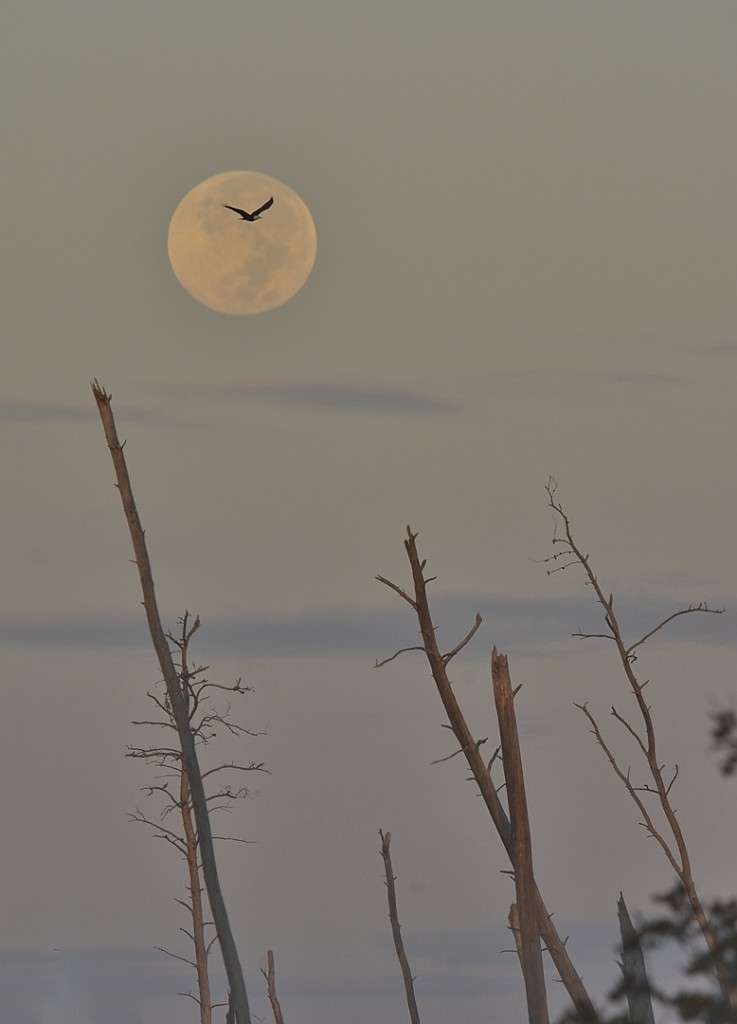
Many birds respond poorly or not at all to playback most of the time. No playback was used in making this shot of a bald eagle at sunrise/moonset.
And the behavior is a completely different beast than territorial behavior. Mobbing is a contagious, multi-species affair – the more the merrier. The strongest responses are evoked from mixed-species flocks containing a half-dozen or more species, often including titmice, chickadees, wrens, warblers, vireos, and a wide variety of other passerines (and some non-passerines, including woodpeckers and hummingbirds – hummingbirds are particularly fearless when responding to mobbing playback). These birds will travel hundreds of yards (sometimes) to seek out the apparent predator, for reasons and benefits that are not well understood (and certainly not empirically quantified). While engaged in mobbing behavior, these birds are vocal, active and highly excited.
Is responding to mobbing playback harmful to birds? No studies address this point at all. From a methodological and logistical perspective, that would be a very difficult study to carry out. But I think it’s unlikely to have any significant effects.
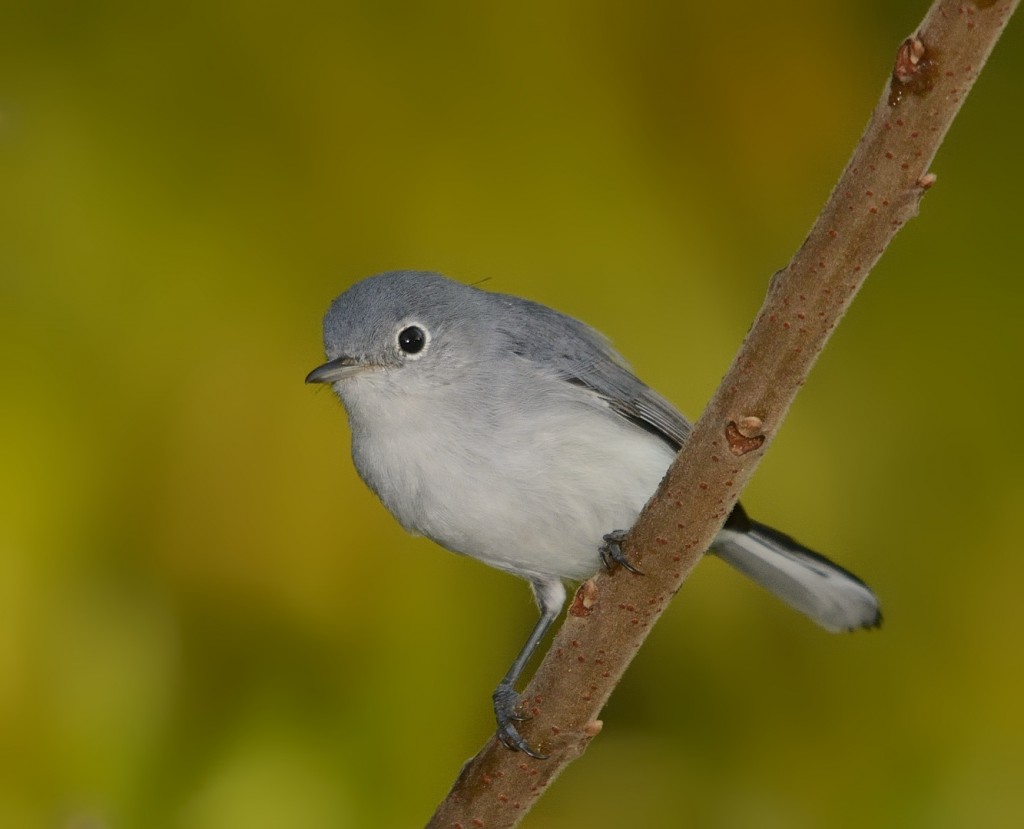
Blue-gray gnatcatchers are among the most enthusiastic mobbers. Little dudes have no fear. I had one fly into my car once while looking for a predator.
Mobbing response to playback is an extremely transient behavior. When the birds do respond (and often they don’t), they sometimes approach quickly and engage in frenetic activity and vocalizations for a few minutes. After 5-10 minutes of seeking and failing to find the predator, they shut it down and leave, returning to what they were doing before. You can’t re-attract those birds by mobbing playback, at least in the short term. It seems to be a very rapidly-occurring form of habituation, which then shuts off the response for some undetermined period of time. The nature of the behavior itself limits its potential impact on the individuals that respond.

Cold, rainy conditions severely suppress mobbing behavior. Birds only mob when their other more immediate biological needs are taken care of.
And often they don’t respond. Cold, windy conditions tend to suppress mobbing response almost entirely. During the breeding season, when mobbing species are defending territory and taking care of mates and offspring, it’s hard to elicit any response at all. There is huge variability, both seasonally and on a shorter-term basis, to the strength of response. My interpretation of this variability is that mobbing is a low-priority behavior, with little immediate benefit, that is frequently abandoned when other biological needs (feeding, territorial defense, breeding activities) take precedence.
Am I “stressing” these birds out by attracting them with mobbing playback? I’d argue emphatically that I’m not. Even superficial observation of the behavior of mobbing birds tells me that they aren’t frightened by the predator or otherwise stressed out. In contrast, my HIGHLY subjective interpretation of the behavior of mobbing birds is this: they love that shit. I think it’s an exciting, rewarding behavior for the birds that do it, and it provides some internal neurochemical reinforcement making it a highly enjoyable activity. I think it’s something like an adrenaline rush for these birds. Sometimes I can almost hear what they are vocalizing in a Dr. Dolittle-type fashion: “Oh boy oh boy, we’re going to kick some predators’ ass!”. How’s that for egregious speculation?
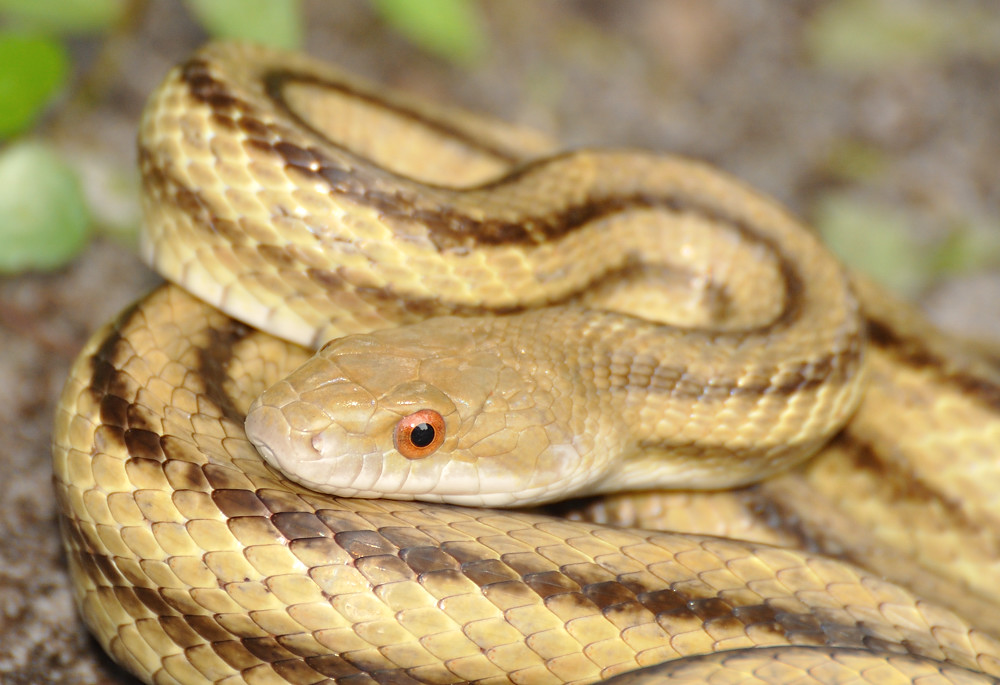
Playback works poorly for attracting snakes. No ears.
One last point about the use of playback: as an educator, I can’t imagine teaching my Ornithology classes without using playback to enhance the birding experience of the students. Earlier this week while on one of our biweekly field trips, I placed the speaker and Ipod (with several custom-made mobbing vocalization tracks installed) at the base of a clump of winged sumac, and for the next five-ten minutes, the students and I were treated to a progression of very cool birds that came down to check out the jam. We got crippling looks at cardinals, Carolina and house wrens, a pine warbler, a common yellowthroat, gray catbirds, and a couple of white-eyed vireos, all of which perched briefly in the open as they scoured the sumac, while the class enjoyed the antics of these birds from 15’ away. When they began to drift away, as they ALWAYS do within 10 minutes or so, I turned off the mobbing track and all those birds resumed their prior activities. No harm, no foul. But a handful of budding bird-lovers got looks at those birds that they would never get otherwise.
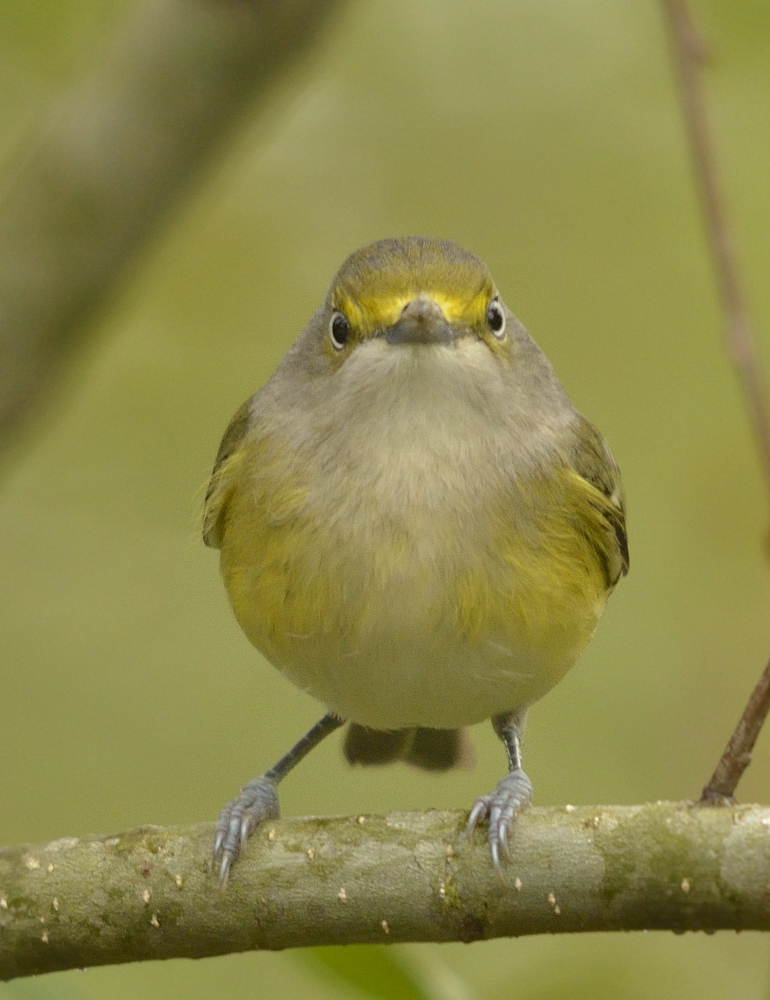
Obtaining good unobstructed views of skulky birds like this white-eyed vireo can be very difficult without playback, particularly for a group of inexperienced birders.
Did we alter the birds’ behavior by eliciting a mobbing response? No doubt we did. Was it harmful? Hard for me to envision how. The birds wouldn’t have responded if they had other more critical needs to attend to. Birders alter the behavior of their subjects all the time. They frequently cause birds to retreat to cover just by their presence. Most birders that I have known use the technique called “pishing” or “squeaking” to attract birds or draw them out of cover. These techniques involve making shushing noises or other sounds that mimic the mobbing calls used by a wide variety of birds to provoke a mobbing response, or at least an investigatory response, by the birds they would like to see better. They elicit exactly the same response that is provoked by playback of recorded owl vocalizations or mobbing calls using electronic playback. Any birder who uses pishing but who is also opposed to the use of screech owl/mobbing playback to attract birds is a hypocrite.
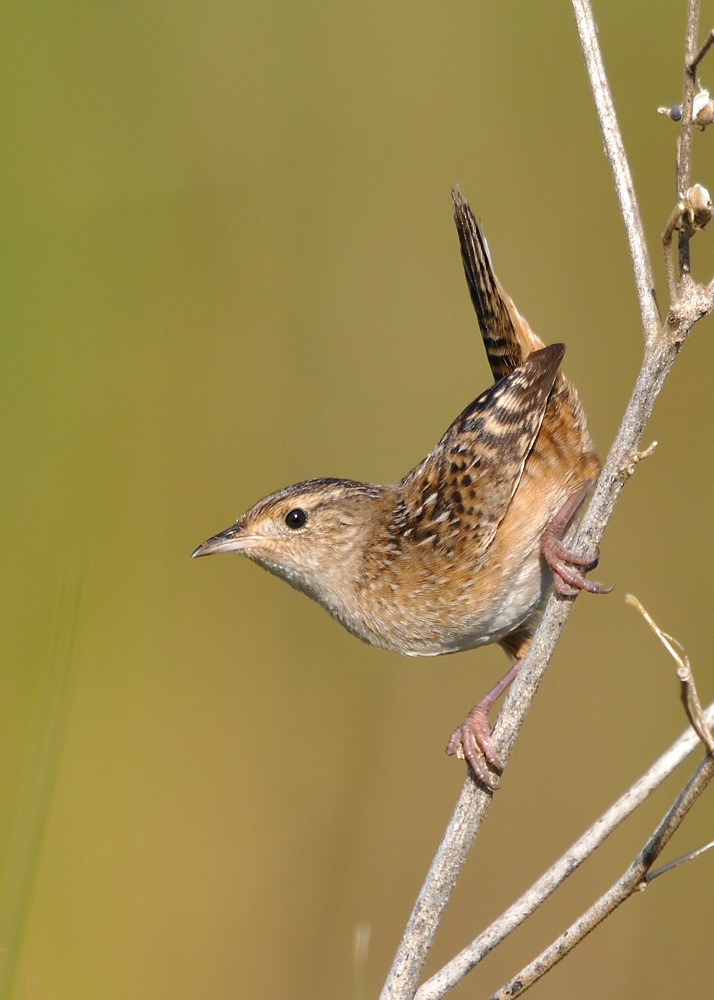
Many (most?) birders use pishing or squeaking noises, which imitate mobbing or alarm calls, to get shy or secretive birds like this sedge wren to pop up and take a quick looksee.
Here’s an anecdotal and apocryphal birding tale (urban legend?) I’ve heard many times over the years regarding the impact of hard-core birders on their quarry. As the story goes, a guided group of birders was visiting some marsh habitat in the northeast in search of the secretive and rare black rail, which had previously been reported from this site. They assembled at the field site before dawn, and blindly trudged through the muck of the marsh in the dark to get to the site where the rail had last been seen. As the morning light came up after a period of unsuccessful listening for the bird, someone finally spotted it. Trampled to death in the mud by members of the birding party. True story? Probably not. But it emphasizes the point that we modify nature and alter the behavior, and perhaps sometimes the fitness, of our subjects nearly every time we go into the field. All we can do is try to be aware of the potential harms, and try to minimize our impact.
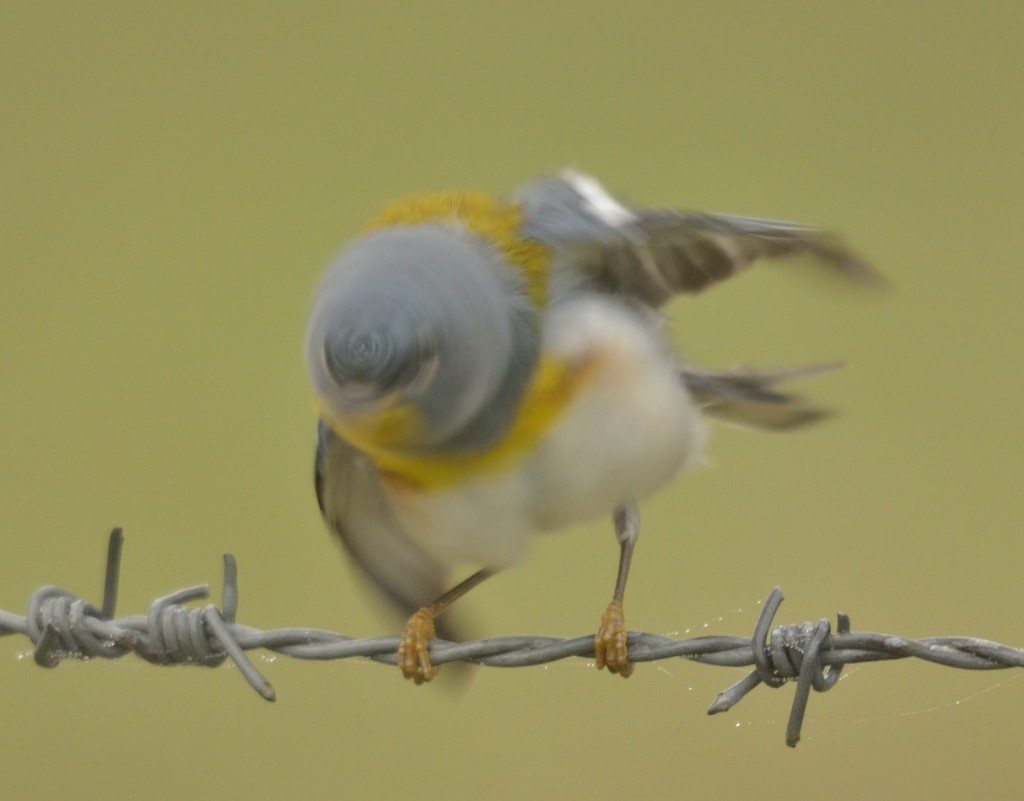
Use of playback can sometimes have dire consequences. This northern parula was so excited at the prospect of kicking some predator’s ass that he twisted his own head clean off. It was a sad sight to see.
Bottom line: is playback harmful? It COULD be, under specific conditions, although we don’t really have any hard evidence about what exactly those conditions are. It’s pretty easy, however, for ethical, knowledgeable birders to anticipate many of those conditions and avoid them. Personally, I have no qualms at all about using playback in the way I do. I sleep like a baby after a day in the field of playback.
